

Beyond the White Picket Fence
A companion for intergenerational communal housing






Savannah Fishel
Foreword by Anna Dixon MP
inspiring, real-world examples of intergenerational communal living in the United States and Australia, exploring what it truly takes to create places where people of all ages not just coexist, but actively support and care for each other in daily life. Her insights illustrate how intentional design, genuinely shared spaces, and a vibrant culture of mutual support have the potential to fundamentally transform lives and alleviate pressure on our overstretched public services.
us of the immense, often untapped, power of housing as essential social infrastructure. I hope this report will ignite urgent new conversations, boldly challenge ingrained assumptions, and inspire more collaboration in reimagining and creating more connected, resilient intergenerational communities. Intergenerational communities have a vital role to play in tackling some of the biggest social challenges we face — from chronic loneliness and housing insecurity to the growing pressures on our health and social care services. That’s why earlier this year, the All-Party Parliamentary Group on Housing and Care for Older People launched an inquiry into how the built environment can actively foster intergenerational connections in both mainstream and specialist housing across the UK.
This timely report from Savannah Fishel offers invaluable insights for anyone invested in the future of housing, healthy ageing, and social connection. Savannah shines a light on
What makes this report particularly vital is that it pairs compelling stories with actionable lessons and recommendations for UK policymakers, urban planners, and practitioners. It unequivocally reminds
Co-Chair, All-Party Parliamentary Group on Housing and Care for Older People
Previous: Director of Policy at The King's Fund and Chief Executive of the Centre for Ageing Better
Anna Dixon MP













Who this companion is for
This companion is for anyone interested in intergenerational communal housing. It weaves together stories, considerations, and practical lessons from 54 intergenerational communal homes across the US and Australia, and reflects on some implications for the UK. This companion is designed to be browsed, picked through, and returned to. Different parts will resonate for different readers.

descriptions of what life is like, examples of different types of communities, as well as benefits and challenges people experience.

context across Australia and the US with implications for the UK, and a call to action including 10 areas of opportunity.
Key audiences include:

Seekers and residents: people experiencing, or curious about, communal living. You’ll find

Practitioners and designers: people designing, developing, running or supporting communal homes. You’ll find practical insights on creating thriving intergenerational living environments and a wealth of inspiring examples.
Decision makers and advocates: people working in housing, health, ageing, social infrastructure and other related areas. You’ll find insight into the bigger picture: powerful ripple effects of these communities on broader society as well as the benefits for residents,
Access the contents page to navigate yourself to key sections.
Who am I?

Copyright © 2025 by Savannah Fishel. The moral right of the author has been asserted. The views and opinions expressed in this report and its content are those of the author and not of the Churchill Fellowship or its partners, which have no responsibility or liability for any part of the report.
My name is Savannah Fishel. I currently work as a Senior Innovation Consultant and Service Designer for a non-profit. I have a background in health policy and politics.
I believe how we live together across generations has profound implications for our individual and collective wellbeing. I am lucky that non-familial intergenerational relationships have shaped who I am today. I know that this is increasingly rare.
The focus of my Churchill Fellowship project stemmed from a service redesign project I conducted with East London Cares to support the creation and sustaining of more intergenerational friendships in my local area. You can access the storybook, as well as outputs such as Chatter Matters, a conversation deck for all ages, here.
You can stay up to date with my work, and find blogs, events and interviews on the topics covered in my output, at thinkitforward.net


Acknowledgements and endorsements
Insights and endorsements from sector leaders
“Our real problem is not generational conflict but generational separation – which is particularly tragic because we know all generations benefit pretty equally from intergenerational connection. We need more ways to bring the generations together, which is why this companion and the practical ideas and compelling stories it outlines are so important right now.”
Bobby Duffy, Professor of Public Policy and Director of the Policy Institute, King's College London. Author of Generations–Doeswhenyou’rebornshapewhoyouare?
“Savannah Fishel is one of the new leaders of the global movement to build intergenerational connection. This work on housing is rich, detailed, and thoughtfully inclusive. Steeped in the experience of leaders before her, it is also fresh, innovative, and focused on a clear and achievable future-facing mission. It has vital lessons for practitioners, policymakers and community-builders alike.”
Alex Smith, Founder, The Cares Family
“Drawing on international comparisons, Savannah's research is an outstanding contribution to the evidence base on why intergenerational living matters. It gives latest examples where uniting generations forges a strong social architecture, strengthens neighbourliness and improves people’s health and wellbeing. It’s central to what we call ‘CollaborAGE’.”
Jeremy Porteus, Founder and CEO, Housing LIN
“In the government’s important attempt to achieve 1.5 million new homes during this Parliament, it is essential that the new estates, New Towns, urban extensions and regeneration projects recognise the need for homes particularly suited to later living. I hold strongly to the view that all major developments in the future – unlike the pattern today –should contain this mix of the generations to enhance the lives of young and old alike.”
Lord Richard Best, OBE, Crossbench member of the House of Lords
Insights and endorsements from sector leaders
“This companion powerfully challenges the myth that intergenerational communal living is niche or nostalgic. It offers bold, practical insights into how we can redesign not just our homes, but our social fabric, placing connection, care and co-responsibility at the centre of community life. At Intergenerational England we are proud to champion this learning and continue to encourage collective action, working to build a society for all ages."
Charlotte Miller and Emily Abbott, Co-Founders of Intergenerational England
“Housing is too often treated as a basic need – the bottom rung of Maslow’s hierarchy – but it should also bring joy, connection and purpose at every age. Intergenerational communal living models show how we can design homes that excite us throughout life, while also promoting sustainability through shared spaces and resources.”
David Sinclair, Chief Executive, International Longevity Centre – UK
“Our homes shape our lives and where we live can create opportunities and connections that last a lifetime. Savannah’s report and experiences around the world help us reimagine our homes and neighbourhoods as communities that work for people of all ages. Let’s get moving!”
Stephen Burke, Director, United for All Ages
"Intergenerational connection is not something that happens naturally but something that when curated, cultivated and nurtured yields wonderful lasting community connections. In a time where we are disconnected, with a lack of incidental contact, this research project is critical to developing our understanding of the depth and social impact that blended communities could have on UK society. InCommon is so excited to support Savannah’s work and we look forward to seeing the changes it will make."
Hannah Kayi Mason, CEO, InCommon
Insights and endorsements from sector leaders
“Communal living is deeply rooted in our human natureoffering a powerful response to the social and structural challenges of modern life. Savannah Fishel’s report is a much-needed celebration of living in modern cohousing and other communities, and a thoughtful guide for those seeking to understand, support, or develop it.”


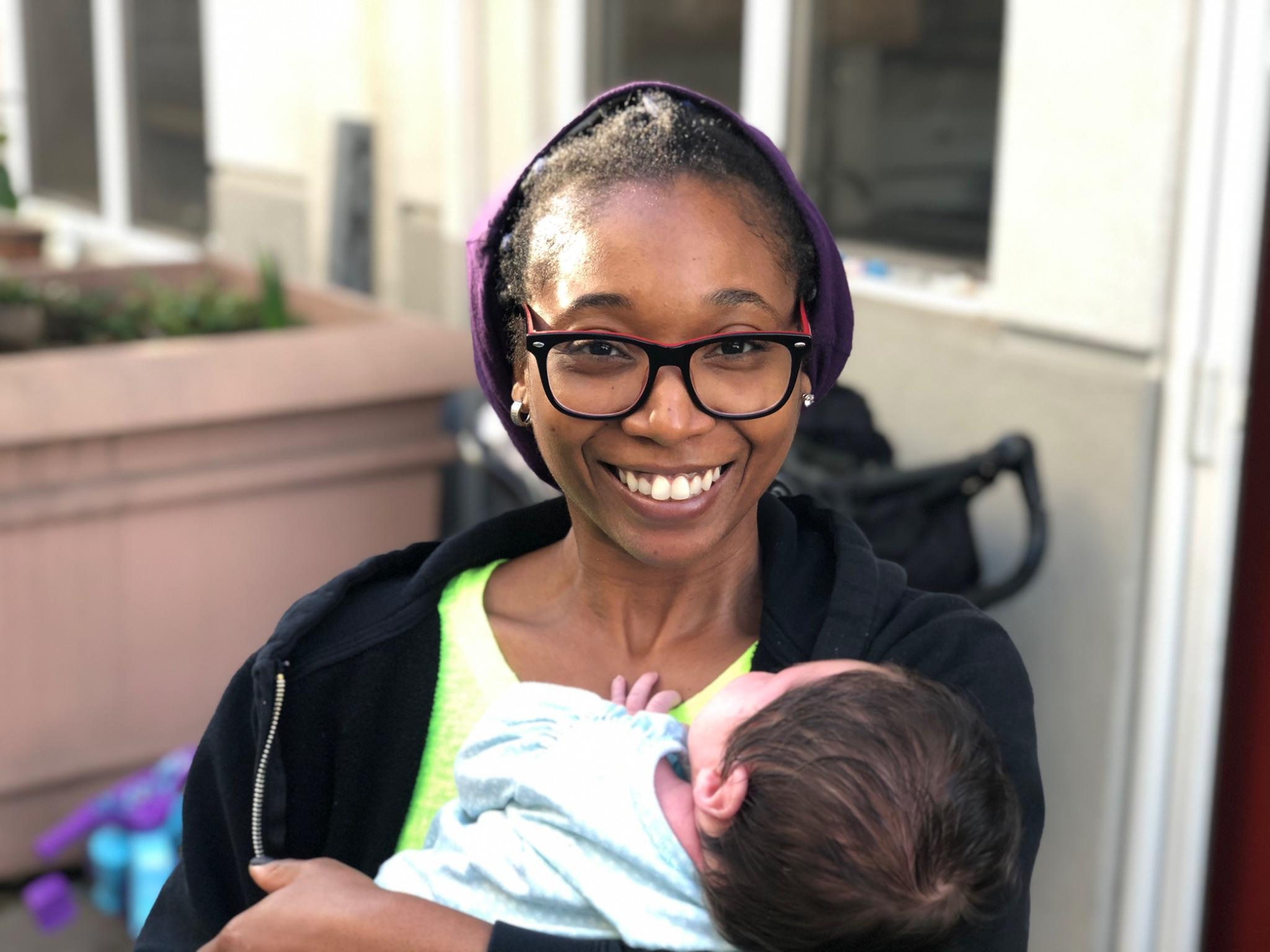

Swan’s Market Cohousing, courtesy of Katherine Nagasawa and Sami Packard
Lost Valley Educational Centre and Ecovillage, courtesy of Elizabeth Maragioglio
“We’re neighbours so we naturally bond… Many hands make light loads – and there’s lots of bodies to help with things. Kids are safe to run around.”

Resident
of a cohousing community in California, aged 80+

Acknowledgements
Communities and their members
I am deeply grateful to the many communities who welcomed me – a stranger from the UK asking too many questions – into your homes. The warmth, generosity, and openness I experienced was humbling and inspiring. There are too many individuals who went above and beyond to name, but know that I carry immense gratitude for every act of kindness – whether it was hosting me in your personal space, sharing meals, taking me on tours, arranging social events, interviews and meetings for my visit, sharing your personal stories, checking in on me, jump-starting my car at 8am in the pouring rain, or offering ice for a swollen foot after an ant sting. Every gesture, big or small, made this journey richer, and I cannot thank you enough.
Experts, collaborators, and friends
This work would not have been possible without the support of so many people who shared their expertise and contacts, as well as the large range of organisations I spoke to. You are doing tireless work to improve lives, develop social capital and envision better, more connected societies while dreaming big can feel impossible. Thank you to those who supported my application to the Churchill Fellowship – your encouragement meant so much – and to Innovation Unit, my employer, for granting me time to pursue this passion.
A special mention to generous individuals: Neil Planchon, co-founder of the Research Institute for Community-Led Housing and Swan’s Market Cohousing, a ‘fairy godfather’ for this work from the moment we met; Michael Coleman, who gave me a base during my Bay Area period – a quiet space in the midst of a whirlwind trip, alongside kind hospitality and thought-provoking conversation; Malcolm, for giving me an Australian home and the warmest of welcomes; Julien for your room in San Francisco; supportive and insightful experts across the UK (and beyond) named in the Call to Action; my closest friends, for your genuine interest in these topics, and support over the past years – including a special thank you to Rosie for your voicenote soundboard helping me wrestle with big questions; and, above all, my mum, who is always a call away.

Land acknowledgements
My research took place on lands that have been shaped by deep histories of community and resilience, but also by the lasting impacts of brutal colonisation – largely driven by the British Empire. I acknowledge the Traditional Owners of the land in both Australia and the US where I conducted this work, recognising that these lands were never ceded. In Australia, I recognise that the rightful owners are Aboriginal and Torres Strait Islander people, whose knowledge and connection to land, community, and kinship long predate colonial settlement. In the US, I acknowledge that I was visiting land whose inherent right of ownership belongs to Indigenous people, recognising the ongoing struggles for sovereignty, justice, and cultural preservation.
The Churchill Fellowship
This work was made possible by a grant from the Churchill Fellowship, which I accept with gratitude. The Fellowship funds critical work across a vast range of vital fields – such as racial justice, LGBTQ+ inclusion, climate change and engagement in education – supporting individuals to bring back learning that benefits society. However, I cannot acknowledge this support without recognising the troubling history of its namesake, Winston Churchill. As well as his wartime leadership which played a major role in the defeat of the Nazis, Churchill’s legacy includes colonial policies that caused immense harm, particularly to colonised and
marginalised communities. Both his direct actions and racist rhetoric upheld systems of oppression that continue to have consequences today. While I do not condone this history, I hope to use this opportunity to contribute to work that challenges inequality and strengthens community-led solutions.
Dedication
This companion is dedicated to Charles White and Noel Rowe, who taught me the joy of cross-generational friendship.
“This community has been a lifeline... If someone hasn’t experienced living like this, they’ve missed out."

Urban ecovillage resident in his 60s, California

“Kids have endless babysitters” –there is beautiful intermingling across ages… It’s so rich what kids give community and what community gives them. They’re really looked after.”

Urban ecovillage resident, Adelaide

Executive summary
“Kids should see the cycle of life. In Western communities only materialistic ‘contributions’ are celebrated and elders aren’t valued. But giving to someone in need isn’t a loss, it’s a gain, and a measure of a healthy community.”

Resident of a housing cooperative, Victoria

Executive summary
“As a single dad, it’s great to know someone is always around. If I get home late from work, there’s always people here. It’s like my daughter has lots of aunts and uncles… People watch out for each other.” – Housing cooperative resident in his 40s.
“Living alone can be horrifying. I thought I was heading into isolation, but this gave me a new lease of life…
I’d go crazy in a seniors community.” –Cohousing resident in his 80s.
This companion explores intergenerational communal housing as a response to some of today’s most pressing challenges – from loneliness, ageing and mental ill-health, to polarisation, housing insecurity and
Over three months in 2024 I visited 54 intergenerational communal homes across the United States and Australia, spanning cohousing, cooperatives, ecovillages, supported independent housing, and tiny home villages. This companion offers insights from my travels, inspiring case studies and practical opportunity areas for creating and sustaining more intergenerational communal homes.
creating intentional, supportive, and connected ways of living together. The communities I visited demonstrate how shared spaces, collective decision-making and everyday acts of support can transform lives – and those benefits don’t stay contained; they ripple outwards. In these homes, ‘neighbourisms’ – small, everyday acts of care, interest and mutual support – are the norm. That’s not to say these communities are without challenge. Navigating conflict and adapting to context are important, with many communities are developing approaches for working through tension, rather than avoiding it. pressure on overstretched services.
My aim was not just to understand how these communities function, but to explore how they actively nurture connection amongst residents – and why that matters. At the heart of this is not just the mixing of generations, but the power of communal living itself:
Why intergenerational communal housing?
way to build connection, resilience, wellbeing and sustainability into everyday life.
Our homes and neighbourhoods shape our health, level of resilience, and sense of belonging. Yet in the UK, like in Australia and the US, we’ve designed environments that separate generations, isolate individuals, and treat housing as a commodity rather than a social infrastructure.
Loneliness has reached crisis levels, public services are overstretched, communities are increasingly polarised, and housing is unaffordable for many.
Intergenerational communal living isn’t a utopian dream or a niche experiment — it’s a practical, proven
Intergenerational communal homes aren’t about simply placing people of different ages in the same building. They are intentionally designed for connection. The communities I visited did this in many ways, including:
● Physical design that remains accessible across life stages, and encourages interaction.
● Shared governance models that distribute responsibility and enable collective decision-making.
● Social infrastructure that nurtures relationships, breaks down silos and encourages mutual support, from
communal meals to shared childcare.
● A cultural shift that values interdependence over hyper-individualism.
This approach challenges deeply ingrained habits in housing, services, and policy, which too often reinforce isolation, as well as cultural norms of competitivity over sharing; nuclear family living over communal housing; and, extra-familial connection across generations as a rarity. .

See 10KeyTakeaways towards the end of this companion
The benefits – for both residents and broader society
Across the communities I visited, intergenerational communal living delivered tangible benefits including, but not limited to:
For older adults: Reduced loneliness and informal support networks, security to age in place, purpose and belonging.

hh j
For younger people: Access to mentorship, role models, shared amenities and a broader web of care.



For parents: A village-like support system, making childcare less isolating and more affordable.

For broader society: Greater resilience, shared resources, sustainable living and reduced burden on public services.



Halloween at Swan’s Market Cohousing, courtesy of Katherine Nagasawa
A call for intergenerational design
So much of modern society is designed around strict age categories, in contrast to most of human history. We separate generations into different living arrangements, services, and social spaces, often by default. Yet, for everyone who lives a long life, we’ll pass through multiple life stages –childhood, adolescence, adulthood, and senior years. Segregating generations is not an inevitability; it is a design choice. And it is one we can unchoose.
and fulfilling way of living is not just possible, it is already being tried, tested and lived in many intergenerational communal homes around the world.
The UK – as well as Australia and the US – are examples of highly individualistic societies, where intergenerational divides are particularly deep. A more connected

Bridge Meadows, Portland, Oregon
“The insecurity of capitalism makes people think they need money because no one will look after them. If you have community, you chase this less, and then you can be more open to connecting with and supporting others.”

Resident of a rural cooperative, Victoria

Why this matters
“Life past 60 can be tough; you feel alienated, cut off from your livelihood and community. Living alone can be horrifying – but not here. I got a new lease of life when I thought I was heading into isolation.”

Resident of an urban ecovillage in California, aged 74,

The preventative power of social connection
Our health and care system is largely reactive. Services tend to step in when chronic conditions lead to hospitalisation, when depression requires medication, or when isolation has already contributed to severe cognitive decline.
Intergenerational communities can create the type of social infrastructure that keeps people healthier for longer. Informal social networks naturally emerge: neighbours providing pet or child care to overworked single parents, a teenager who helps an older resident set up a video call with their grandchildren, and routine cooking and eating together. These everyday moments, which I call ‘neighbourisms’ – organic, unpaid and often mutually beneficial practices of care – have an impact on health.
Just one example of loneliness as a precursor to poor health is malnutrition,
which is often framed as a problem of poverty, but there is an overlooked link with isolation. Eating alone reduces appetite and motivation, leading to skipped meals and poor nutrition. Many older adults, especially those living alone, experience malnourishment not because they lack access to food, but because they lack the social structures that make eating a meaningful, routine part of daily life.
Communal living settings, where meals can be shared and food culture is valued, can organically counterbalance this issue.
If we are serious about tackling loneliness, malnutrition, mental health and various other health and care challenges, we should be looking at creative, cross-sector solutions.
Intergenerational communal living is not a silver bullet, but it is an exciting intervention that makes people less likely to reach crisis
Why this matters
points, and one that can be designed into urban and rural landscapes, as this companion shows.
Designing for connection should be as fundamental as designing for accessibility or sustainability. By breaking down silos between social connection, health and housing, we can create communities that don’t just house people, but help them thrive.

Explore further in: Lonelinessisapublichealth crisis–andneighbourisms shouldbepartofthecure Published by Housing LIN
Why this project?
We are not just facing a housing crisis, a loneliness and mental health crisis, or a care crisis. We are facing an interconnected breakdown in how we live together.
Our homes and neighbourhoods shape our health, resilience, and sense of belonging. Yet in the UK, like in Australia and the US, we’ve designed environments that separate generations, isolate individuals, and treat housing as a commodity rather than social infrastructure.
Social connection
Belonging, interdependence, reduced polarisation
Intergenerational communal living has the potential to:
● Strengthen informal care networks which can help prevent people reaching crisis point.
● Build social infrastructure at neighbourhood level.
● Support people to age in place, raise families affordably, and live with greater belonging and purpose.
Housing
Intergenerational communal housing
Security, affordability, sustainability
Health
Mental, physical and social wellbeing
Why now?
The UK is increasingly divided – not just politically and economically, but socially. One of the biggest fractures is between generations.
The UK is one of the most age-segregated countries in the world, with escalating division across a range of domains, where younger and older people rarely interact outside of family. Often this divide is (unintentionally) designed, or manufactured, through the way many elements of society are set up.
We are chronically lonely, with statistics showing that this has been getting progressively worse and those aged 16–24 are the worst affected. This is a serious public health issue impacting all
generations; loneliness can increase the risk of early mortality by 26%. Australia and the US – the countries in which I conducted my research – are suffering similar trends.
Meanwhile, as housing is increasingly unaffordable, public services are overstretched, and our society feels more divided – generationally, socially and politically – than ever before.
Intergenerational living is a practical response which sits at the intersection of some of the most complex challenges we face around housing, health, and loneliness. Communities built with intentional, everyday interaction across ages could offer a range of benefits including: increasing
people’s social and support networks; reducing polarisation; relieving some pressure on public services; and creating living environments which are more environmentally sustainable.

Swan’s Market Cohousing, courtesy of Sami Packard
Project overview
The project in a nutshell

54 visits to intergenerational communal homes
United States: 38 Australia: 16

Specialist perspectives
Throughout this process I have engaged with experts and practitioners across communal living, housing, intergenerational practice, longevity and ageing, architecture, public health and tackling loneliness, as well as residents. Their insights have been invaluable.
Limitations and positioning:
The experts on intergenerational communal living are those with experience living in communities and I aim to centre their perspectives. This output is the culmination of my own learning, largely based on visits across a period of three months.
This was an experiential rather than academic study. My work carries various biases including time constraints, selection bias, cultural biases, and survivorship bias – as I primarily visited ‘successful’ communities.
As well as the listed communities, I engaged with many organisations and individuals with expertise. I also briefly connected with some communities not listed which are not in the US or Australia.

Online ‘visits’ and interviews
For instance, housing organisations, support initiatives and communities I couldn’t travel to.
Unexpectedly, I had to cut the trip short, so did not get a chance to visit communities I had planned to in Western Australia.
My guiding questions
Within increasingly individualistic societies, what intergenerational communal housing models exist and what benefits do they bring?
Within intentional intergenerational communal homes, what conditions contribute to social cohesion between generations? Which strategies, interventions or designs are effective to mitigate friction and help a community to thrive?
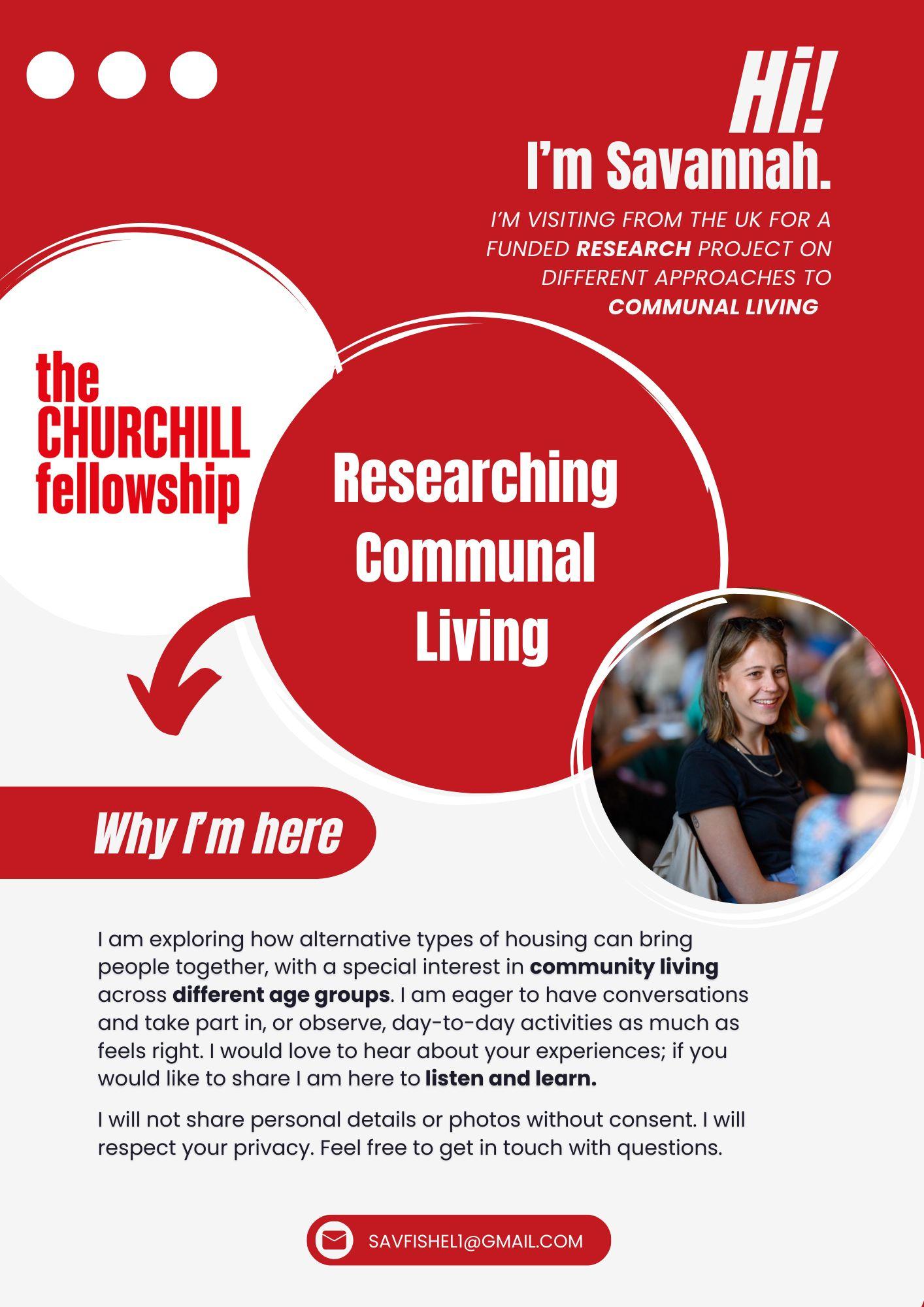

Flyer circulated to communities I visited
“I like to talk to people and be out and about. Just being here builds social fabric. There’s a low bar to socialise; it’s easy to just be, to say hello.”

Resident of a housing cooperative aged 40+,

California
Defining intergenerational communal housing
Intergenerational housing:
Housing that intentionally brings together people of different ages, fostering interaction, mutual support, and the sharing of experiences across generations. These arrangements exist on a spectrum. At one end, a single multigenerational household (though the focus of this research is extra-familial), for example a homeshare between an older and a younger adult.
At the other end, larger, intentionally designed intergenerational communities where smaller households of varying ages live in separate units but share common spaces and activities, often with specific programmes to encourage intergenerational interaction.
Communal housing:
A variety of living arrangements where individuals or groups of people share common facilities, beyond a single family structure.
Residents (individuals, couples, families) typically have private living spaces – either a single room within a household, or whole unit in a neighbourhood – but share amenities such as kitchens, gardens, laundry facilities, and social spaces. Communal housing models exist on a spectrum, varying in the degree of shared resources, resident involvement in decision-making, and community interaction. Examples include cohousing communities, co-living spaces, housing cooperatives, and tiny home villages.
This research explores models at the intersection of these two approaches: intergenerational communal housing. This refers to a range of housing models involving people of different age groups which have been intentionally designed for connection. Residents share some spaces and resources, and tend to partake in spontaneous or planned activity to encourage interaction and mutual support. These models draw upon the principles of both intergenerational and communal living, aiming to create communities that are both age-diverse and rooted in connection and collaboration.
Other definitions
Intergenerational: Rather than ‘multigenerational’, which describes generations coexisting, ‘intergenerational’ refers to a relationship involving interaction, exchange, and shared experience.
Homesharing: people who are not members of the same family sharing a dwelling unit.
Supported independent housing: housing models where paid staff provide a layer of governance, care, support or access to services.
Cohousing: residential neighbourhood that combines private homes with shared indoor and outdoor spaces designed to support an intentional and interdependent community life.
Housing cooperative: a legal entity in which members collectively own, control and manage their housing.
Social architecture: intentional structuring of social interactions through activities, governance, and cultural norms.
Social or public housing: housing provided by local governments or non-profit organisations with below market rate rents.
Work parties (common phrase in the US) or worker bees (common phrase in Australia): a period of time where collective effort is made on tasks such as gardening or maintenance.
Tiny home village: a cluster of moveable dwellings, typically not bigger than 50m2.
Apartment block: single multi-storey residential building divided into separate units.
Intentional community: group of people who have chosen to live together or share resources on the basis of common values.
Ecovillage: a community intentionally designed around values of ecology and sustainability.
Commune: a partial or fully income-sharing community that practices egalitarian decision-making.
In scope
● Cohousing
● Housing cooperatives
● Ecovillages
● Tiny home villages
● Homesharing
● Supported independent housing
● Intentional communities
● Both self-governed and staffed communities

Almost all communities I visited fit into the above scope, though I included some others to offer comparison or a different perspective.

Out of scope
● Short-term / transitional housing
● Multigenerational family only households
● Income-sharing communities
● Single age-group housing
● Assisted living and nursing homes
● Single units e.g. a one-on-one homeshare
Communities visited: California, USA
Communities visited: Oregon, USA
Communities visited: Colorado, USA
Communities visited: Australia
“Seniors are so deeply connected to each other and community, it’s such a joy to watch. So much camaraderie and support especially the ones in stable housing. People can’t wait to see their friends and have lunch with everyone. Mostly they have come from oppressive and unwelcoming spaces.”

Staff member at a supported independent housing community, California

Country context

Of particular interest to policymakers
Why the US and Australia?
The US and Australia are both highly individualistic, capitalist societies with significant housing and social challenges comparable to those in the UK. Despite often unfavourable, or even prohibitive, cultural, social, and policy contexts, a broad range of intergenerational communal living models have been established, continue to thrive, and offer us valuable insight and inspiration here in the UK.
It’s worth noting that some countries in Europe have long traditions in intergenerational communal housing. Denmark coined the term cohousing, and around 1% of their population live in cohousing communities. In Germany, the federal government
integrated intergenerational housing into its ageing strategy, through Mehrgenerationenhaus /
‘Multigenerational House’ (2006) and Mehrgenerationenhäuser II programmes. They aimed to tackle demographic change and social isolation by creating community hubs that combine services, activities, and sometimes housing. However, national government support for intergenerational housing has declined in recent years.
understanding. This research doesn’t focus on Denmark, Germany, or the UK, but instead looks to Australia and the US – two countries where, despite limited policy support and strong cultural individualism, intergenerational communal housing is developing in fascinating ways.
The US and Australia share the following characteristics with the UK:
While Europe has led a significant portion of the research, policy development, and infrastructure for non-familial intergenerational living, looking beyond Europe is important for a more diverse, globally-informed
● Housing markets dominated by privatisation and home ownership with limited social housing compared to many European nations. In the UK, social housing was dramatically cut through mass privatisation in the 1980s.
● Crisis of affordability in housing especially in well serviced areas, with a lack of planning support and local objectors.
● Ageing populations and rising loneliness, both increasingly recognised as public health priorities.
● High homelessness rates, particularly in major cities.
● A shift away from traditional intergenerational living, which was the norm until the early 20th century, towards dominance of nuclear family structures, individualism, and competition, creating cultural resistance to communal living models and alternative kinship structures.
By drawing upon insights from a range of intergenerational communal homes in Australia and the US, this companion offers inspiration and key considerations for both UK and global readers.
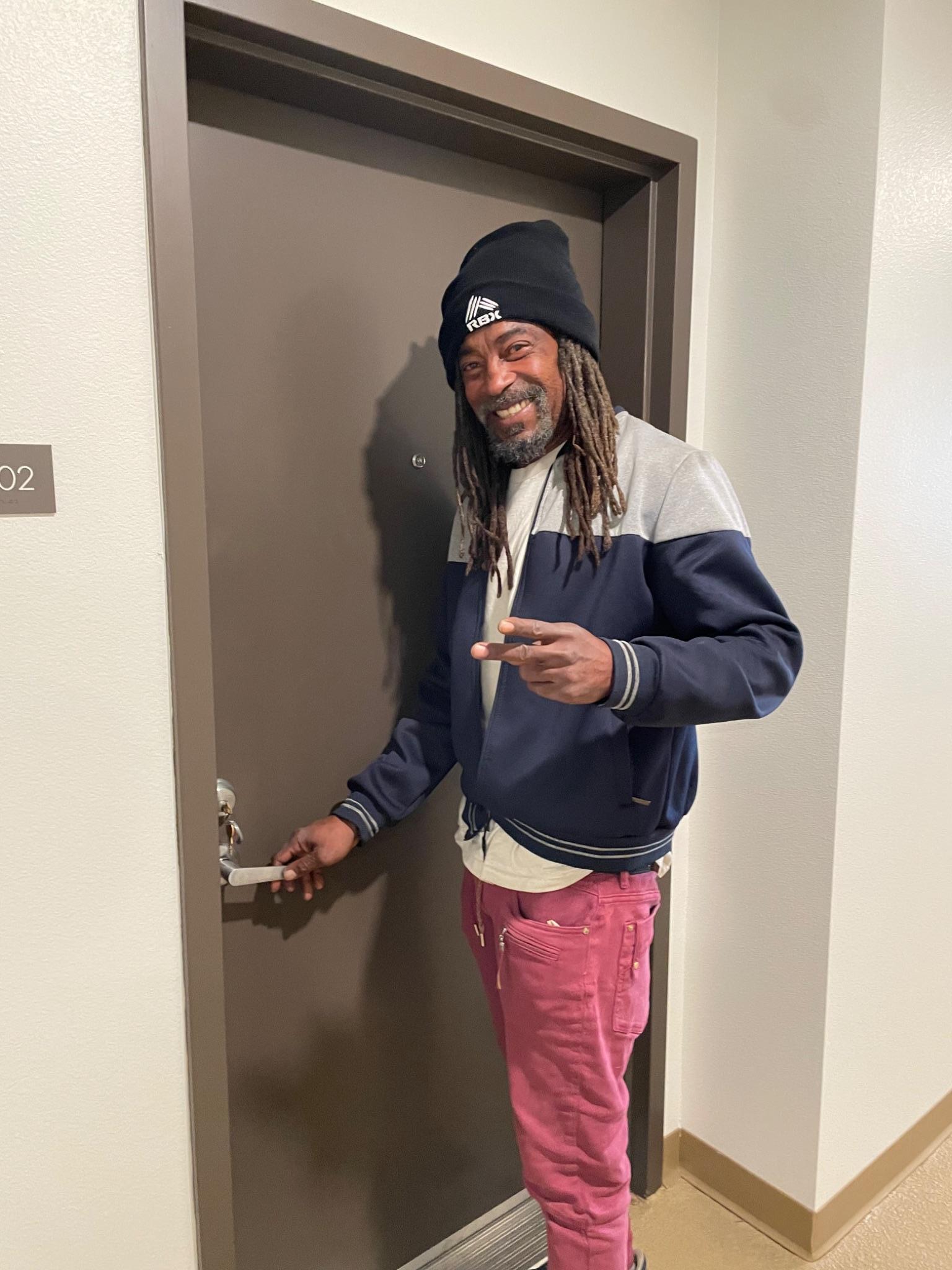

Resident at Hifi Collective, Los Angeles
Housing cooperative, Colorado
The US: historical context and present challenges
In the US, the post-World War II suburban boom reinforced a nuclear family ideal, with single-family homes and car-centric urban planning shaping how people live. As housing prices have skyrocketed and social isolation has become a growing issue, interest in alternative housing models, although not mainstream, has re-emerged.
Several key historical factors have shaped housing and intergenerational living in the US:
● Rise of retirement communities (1960s–present): As populations aged, age-segregated living became more popular and culturally normalised as it offered specific amenities and social networks tailored to older adults.
● Intentional communities movement (1960s/70s): Rooted in countercultural, ecological and utopian concepts, intentional communities flourished in this period, with experimentations around shared living, collective childcare, and permaculture.
● Post-war suburbanisation (1950s–70s): Homeownership became a cornerstone of the “American Dream”, leading to an increase in sprawling and single-generation households. economic shifts and redevelopment.
● Urban decline and gentrification (1980s–present): Many lower-income, often organically intergenerational communities faced displacement due to
● Cohousing and co-operative housing movements (2000s–present): Inspired by Danish models, cohousing gained traction in urban areas like California, Oregon, and Massachusetts. Housing cooperatives have gained traction in cities like New York and San Francisco, providing community-oriented, member-owned housing alternatives. San Francisco's long-established member-owned movement includes both market-rate and limited-equity cooperatives, many dating back to the 1960s-70s.
It’s also important to acknowledge the role of race in shaping US housing. Structural racism – through redlining, discriminatory lending, and exclusionary zoning – has limited access to housing for communities of colour. Traditionally, intentional communities have been predominantly white spaces.
Today, US cities are grappling with an affordable housing crisis. Many younger people are priced out of homeownership, while older adults struggle with social isolation. This, as well as deepening generational division and polarisation, has created a renewed push for intergenerational solutions, including:
● Cohousing communities that bring together multiple generations –around 160 established communities exist in the US.
● Small scale intergenerational initiatives designed to support specific groups of people, for instance foster youth, their families and older adults (Bridge Meadows in Portland) and intergenerational programming embedded into senior housing.
● Housing cooperative movements are particularly strong in cities like San Francisco, New York, and Minneapolis. Now, many describe themselves as ‘social cooperatives’: rental buildings owned by a landlord, functioning with shared
decision-making and some shared resources.
Despite these promising models, the US faces major structural barriers, including restrictive zoning laws, minimal government intervention in housing, and enduring cultural resistance to communal living. Nonetheless, there’s growing momentum among urban planners, housing activists, and policymakers to rethink how neighbourhoods can facilitate intergenerational connection.
Australia: historical context and present challenges
Australia’s housing market is also dominated by private ownership and challenges with isolation. Australia now builds the largest average house sizes in the world, reflecting deep cultural expectations around space and privacy. The impact of climate change has also led to mounting pressure on architects, planners, and policymakers on low-carbon design – though greenfield house-and-land packages on the urban fringe remain the most affordable option for families, making infill and communal options less accessible.
Several key historical factors have shaped housing and intergenerational living in Australia:
● Indigenous perspectives on communal living: First Nations people have a long tradition of multigenerational, community-orientated living, with deep cultural emphasis on shared resources, relationships, and care for elders. While colonisation violently disrupted these models, Indigenous-led housing initiatives are reclaiming and adapting these principles for modern use.
● Waves of immigration to Australia from European (WW2), Asian (80s/90s) and African (2000s) countries have included groups with intergenerational living embedded into their culture.
● Urban growth and sprawl (1950s–present): Similarly to the US, suburban expansion reinforced single-family living. However, since the 1990s, Australian planning policy has increasingly prioritised medium-density, mixed-use developments.
● 1960s/70s Intentional community movement: Australia saw a wave of alternative communities in the 60s and 70s, including iconic examples like Moora Moora in Victoria, currently home to around 50 people. Today, dozens of long-standing intentional communities remain active.
Australia: historical context and present challenges
● Policy and design innovation (2000s–present): Australia has experimented with intergenerational urban planning, ecovillage projects, and elder-inclusive housing. State and local governments have increasingly incorporated housing diversity, ageing in place, and social connection goals into strategic plans, with ecovillages and housing cooperatives (supported by groups such as the Australian Cooperative Housing Association) acting as informal policy laboratories for intergenerational design.
Key intergenerational housing models in Australia include:
● Social and environmentally focused resident-led projects supported or managed by professionals (such as Nightingale and Property Collectives) with a mix of shared and private space.
● Well-established ecovillages like Narara Ecovillage and Aldinga Arts Ecovillage, blending environmental sustainability with intergenerational social ties.
● Enduring intentional communities often rooted in permaculture, which have survived since 1960s, 70s and 80s counterculture movements, such as Cennednyss (currently 8 residents) and Goolawah (over 100 residents).
● Indigenous-led housing projects that incorporate traditional multigenerational principles.
Developing innovative housing projects in Australia often involves navigating a complex web of challenges, especially around legal and financial hurdles. While intended to guide urban development, strategic and statutory planning systems can be intricate and time-consuming, creating delays and uncertainty for projects.
Implications for the UK
Both the US and Australia offer valuable insights for the UK’s own housing and social challenges:
● Housing affordability and shortages: With the UK Government committed to a major house-building programme, there’s a timely opportunity to explore creative, alternative models of living. While some communal models are expensive for residents, this document showcases numerous case studies with affordability mechanisms built in, for example through mixed-tenure, nonprofit, or co-operative frameworks. The UK government's National Planning Policy Framework (NPPF)
emphasises the need for a mix of housing types to meet the needs of different groups. Furthermore, there’s growing advocacy from influential sources around more community-orientated housing solutions, for example The Housing and Ageing Alliance's April 2025 letter to the Prime Minister recommending community-led housing.
● Rising loneliness, mental ill health, ageing populations and unmet demand of public services: 11 million people in England are now aged over 65, and the UK faces a crisis of social isolation which cuts across all generations, calling for national, all-age solutions. In 2018,
the UK launched the landmark ‘A Connected Society’, a strategy for tackling loneliness, including appointing a dedicated Minister, and since then work has involved activities such as the Every Mind Matters Loneliness campaign and the Tackling Loneliness Network Action Plan. However, many key advocacy and practitioner organisations have recently closed down and the Government has been called upon to update its strategy and do more in this space.
Intergenerational housing models can create natural support networks that reduce pressure on healthcare and social services while nurturing meaningful relationships.
Although by no means a replacement for health and social care, communal housing models can build a layer of support and mutual aid, helping to improve longevity and avoid unnecessary escalation to public services. The importance of community-based support is emphasised in the NHS Long Term Plan, which intergenerational housing can play a role in facilitating.
● Policy, zoning challenges and community planning: Both Australia and the US illuminate the possibilities and limitations of market-driven intergenerational housing in a context of minimal government intervention, which is
important context for UK decision-makers as social housing provision continues to shrink. Local authorities in the UK have a statutory duty to assess housing need and plan for a variety of housing types, as outlined in the NPPF. However, current planning policies may not adequately address the specific requirements of intergenerational housing, such as the need for flexible design, communal spaces, and mixed-use developments. There can also be local resistance to developments that are perceived as 'non-standard'. Country
● Environmental sustainability: The UK has ambitious targets for reducing carbon emissions, such as net-zero emissions by 2050.
Both the US and Australia offer a range of case studies that link social connection with environmental goals, which will become increasingly urgent in the face of the climate emergency.
Learning from the US and Australia
Both the US and Australia offer compelling case studies for intergenerational communal housing within largely individualistic, market-driven societies. While they share structural challenges with the UK, there are notable differences in policy, urban form, design culture, and grassroots organising.
By focusing on these two countries, this companion seeks to add to intergenerational and communal housing research and to inspire creative innovations here in the UK –innovations with the potential to transform how we think about housing, care, ageing, and community in the decades ahead.
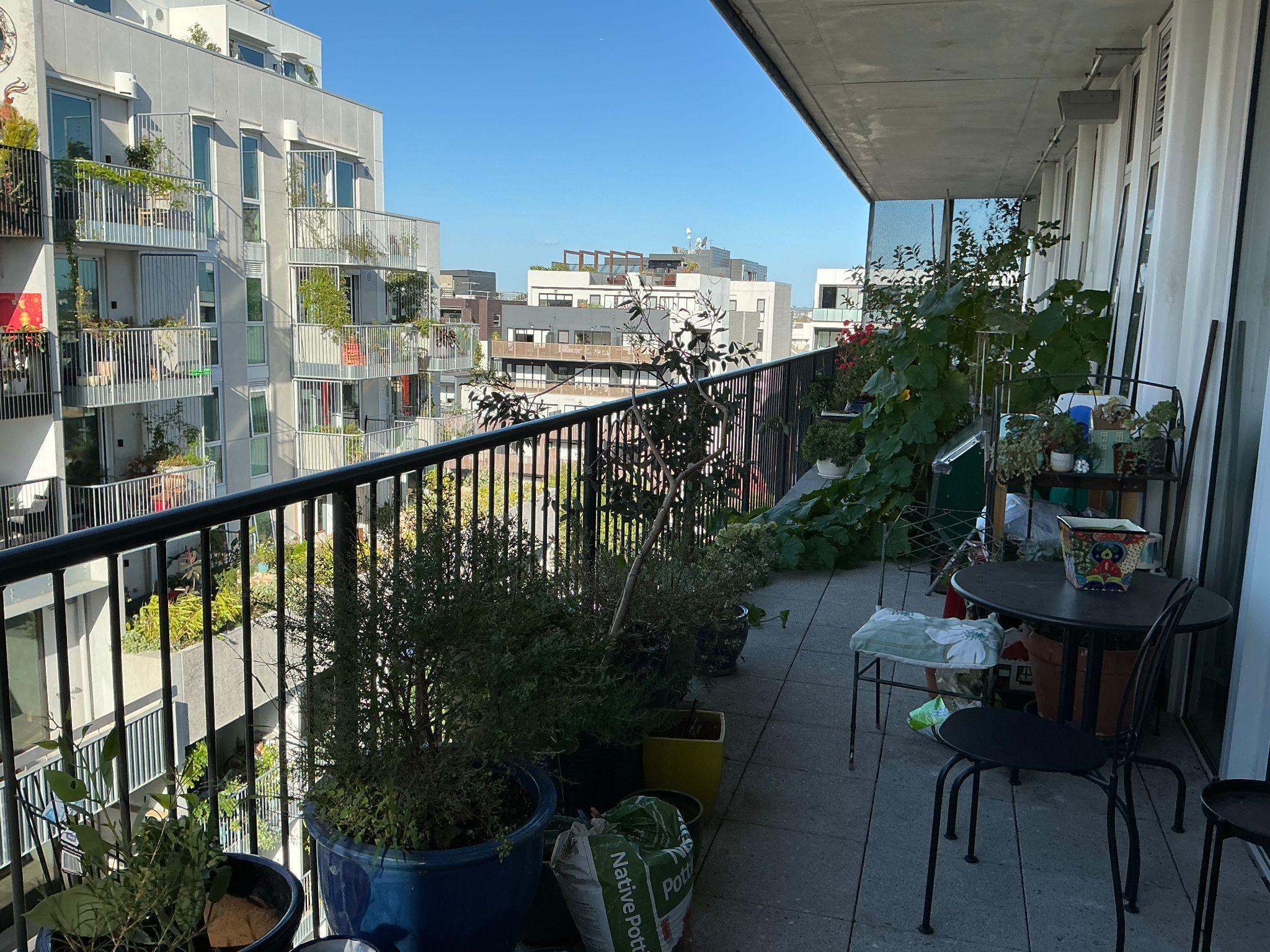
Balcony at Urban Coup cohousing block, Naarm (Melbourne)
The intergenerational element

Of
particular interest to policymakers
“The intergenerational aspect is particularly important – living in a homogenous group is stale. You think your experience is the only reality.”

Resident of an urban ecovillage, aged 70+, California

Age segmentation: a design choice we can ‘unchoose’
Childhood, adolescence, adulthood and senior years – these aren’t fixed categories that apply to some people and not others; they’re phases of life we all experience. So when we design initiatives, services, or even housing that caters to a single age group, we’re not just creating silos, we’re making something that is inherently short-term.
We design youth services and senior programmes, retirement communities and childcare spaces, often with little thought about how they intersect.
Too often, we separate generations not out of necessity, but out of habit. We miss opportunities for skill, energy and knowledge transfer and generally creating richer, more interconnected communities. Intergenerational living, working and learning are not radical
ideas. This is how human society has functioned for most of history. Instead of just asking howdowepromote intergenerationalengagement?we should be considering howdidwegettoaplace wheresomuchoflifeisdesignedtokeep generationsapart?And, crucially, howdo weundothat?
Intergenerationality is the foundation for systems which support longevity, health and integration across silos. Across most sectors, including housing, isolation and segmentation is the norm, not the exception. When we fail to think intergenerationally, we reinforce this. If intergenerational connection was the norm for most of human history, perhaps our crucial next step is simply remembering what we’ve forgotten: considering, valuing and regularly interacting with one another, at all stages of life.
The intergenerational element

Explore further in: IntergenerationalEverything: RethinkingHowWeDesignforAge
Published by Intergenerational Englandfor Global Intergenerational Week
“It’s magical; you see a three-year-old and a 90-year-old just click and know they’ll be friends. All levels of engagement are important… sometimes it’s as simple as a conversation about teeth and dentures. It teaches putting yourself in others’ shoes.”

Staff member at a retirement home in California, speaking about their intergenerational programming ThinkItForward.Net

Generational divides: key factors
This diagram maps a range of interconnected factors contributing to separation, segmentation and polarisation between generations: The intergenerational element

Economic disparities
Younger generations are facing stagnant wages and higher costs for education and housing.

Political polarisation
Voting patterns are increasingly split along age lines and political narratives can reinforce stereotypes and division.

Family and workforce
Changing family formation patterns, delayed milestones, and transformations in work structure create different expectations and experiences across generations.



Technological Shifts

Generations consume information differently, with varying comfort levels and approaches to technology and social media.
Housing and geography

Communities increasingly segregated by age (urban and rural divides), reducing natural interaction opportunities.



Media portrayal

News outlets and social media platforms amplify generational stereotypes and frame issues as zero-sum conflicts between age groups.
“If I lived in a senior community it would drive me mad. No matter how crazy it

Cohousing resident, aged 84, California

Community life:
Residents, challenges and ‘neighbourisms’

Of particular interest to seekers and residents
“These are not assisted living or medical facilities, but intentional, relationship-centred housing models that encourage natural social interactions. People care about each other, not for each other.”
From Lonelinessisapublichealthcrisis–andneighbourismsshouldbe partofthecure, published by Housing LIN

Who are the people in these communities?
People are curious about who intergenerational communal housing attracts, often returning to stereotypes of new age hippies or idealists. It’s an extremely diverse spectrum; some communities are counter cultural, or connected through an ideology – and others are not. Across the board communities tend to be united through a shared belief in the power of relationships. People who believe housing should be more than a roof over our heads, but a foundation for the social connection necessary for a flourishing life. During my visits to 54 communities I met a wide array of people living in intergenerational communal homes. Some common traits stand out:
Those experiencing transition:
Many residents are in the midst of significant life changes – for example around divorce, gender, retirement, parenthood and death –and are searching for stability during these shifts. Intentional seekers and happy accidents: Some people are actively hunting for a deeper sense of belonging. I have met people who have been building or hunting for their community over decades, while others stumble into these spaces. Some were driven by motives such as affordability (many communities I have visited are either low income or intentionally below market rate) and environmentalism.
Community contributors: Generally people I have met are dedicated to making a positive impact in broader society. Far from being exclusive enclaves, these communities tend to be highly engaged in their surrounding area, benefiting locals whether it be through sharing physical community spaces, protecting biodiversity and native species, hosting educational activities, building and sharing community gardens or political activism.
“I love home sharing – connecting, cooking, caring for others. This community has given me a purpose, and people here have become like sons and daughters.”

Resident of an intentional community, California, aged 70+

How do these spaces feel?
Intentional communities, or spaces which have been purposefully designed for connection, feel fundamentally different from conventional housing. Imagine stepping into a space where shared meals, communal gardens, and multipurpose spaces are the norm.
I have seen ‘economies of scale’ (cost advantage of shared purchasing and usage) facilitate a range of shared amenities such as: workshops, art spaces, music rooms, play areas, chicken coops, vegetable gardens, gyms and industrial kitchens, often with a significant portion of energy generated through solar. What’s more, as residents’ situations shift – for instance access
requirements or a growing family – it is often possible to upsize or downsize units, embedding a sense of permanence through life’s stages.
Above all, the sense that people are truly neighbours is palpable. Not everyone will be close friends – like every gathering of human beings, there will be a spectrum of relationships. But people know their neighbours and small acts of kindness happen every day, such as: meal trains for sick people; pet-sitting; sharing childcare; baking for one another; sharing clothes; rides to appointments; troubleshooting or DIY support; collecting someone’s post whilst they’re away; flexibility with rent payments in tough times; skill sharing such as tech
support – and for me, a kind resident sitting patiently whilst I iced my swollen foot after a sting from a jack jumper ant – apparently an Australian local. I now refer to these commonplace neighbourly acts as ‘neighbourisms’ . I’m deeply touched by the kindness I’ve been shown across over 50 communities. I am under no impressions that it would have been easier for hosts to have ignored my emails and continue living their life (as opposed to talking about it) without some British researcher sticking their nose in. Each day I was filled with gratitude and blown away by hospitality.
How do these spaces feel?
Then I remember: residents have worked hard to get to this point. In many modern cities people might usher you into a cripplingly expensive, claustrophobically boxlike, concerningly mouldy flat as quickly as they can – ‘nothing to see here’. Among these communities, there’s pride and a sense of permanence. People are truly connected to their home, to the land, to their neighbours. Thriving vegetable gardens, evolved governance processes, and in some cases, houses hand-built out of recycled materials, all stand testament to years of discussion, experimentation, and maturing (often tested) relationships.
At the heart: palpable community which had to be cultivated with
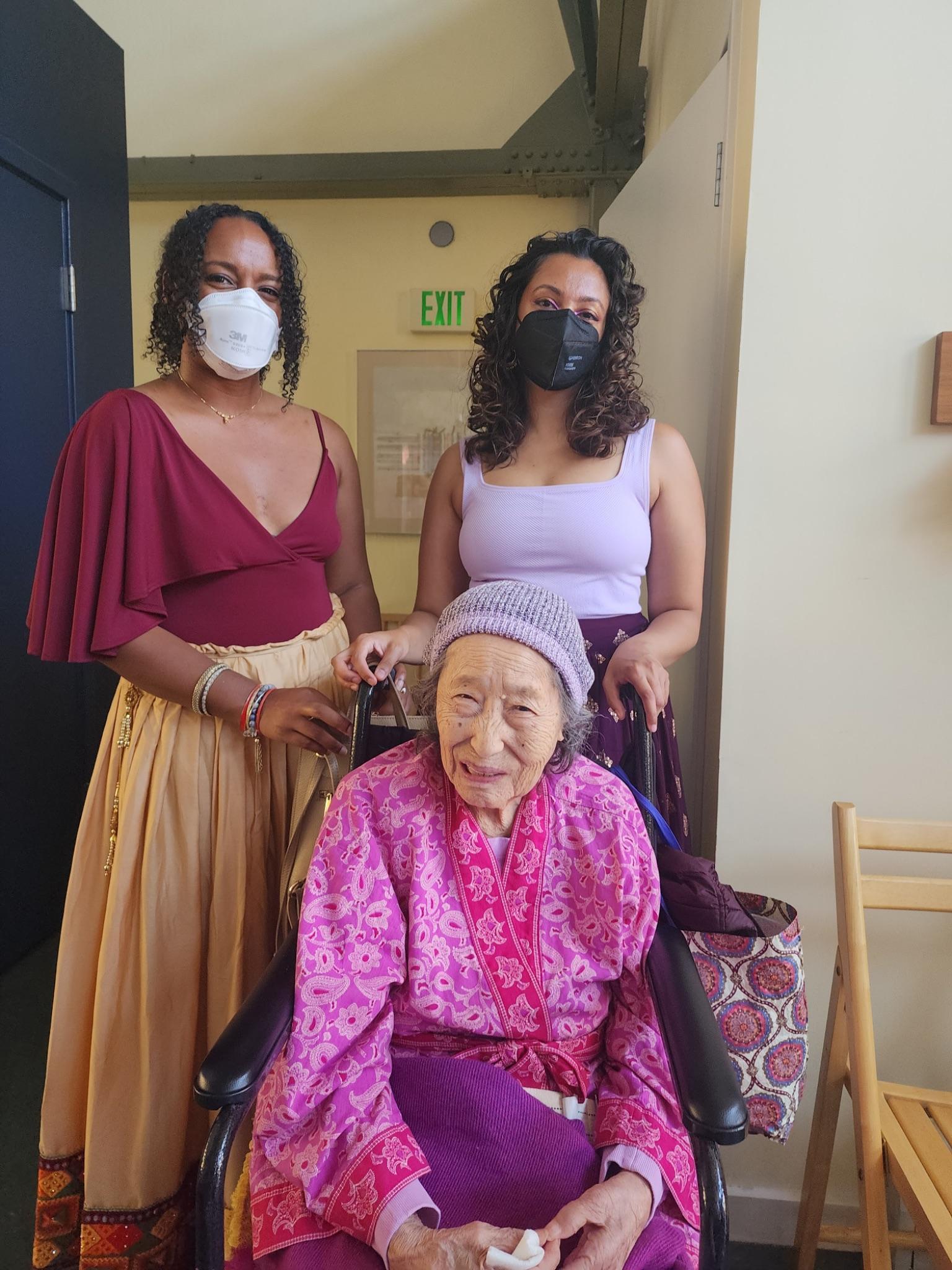


Explore further in: Community-OrientatedHousing: ReflectionsonaChurchill FellowshipJourney
Photo from a wedding at Swan’s Market cohousing
Murundaka, Victoria
“Before I was completely disconnected from what’s going on beyond my front door. Here, I know all my neighbours and they know me.”

Resident of a cohousing community, California

Community, not utopia
Common challenges
Sharing spaces, (some) resources and decisions requires a level of collaboration, compromise, and communication vastly dissimilar to most people’s prior experiences. Many residents told me that entering with a realistic expectation is key for satisfaction. Often, the very elements that make these communities so enriching can be hard work. Below are some common challenges:
Contributions and accountability
Decision-making can be slow
Conflict is inevitable
Whether it’s differences in parenting approaches, how funds are allocated, or values and personality clashes, disagreements arise regularly and are best dealt with directly; see NavigatingConflict.
In terms of self-governed communities, many rely on shared labour, such as cooking, cleaning, maintenance or conflict mediation. Attempting to maintain some fairness around contribution, while building a culture of trust and flexibility, is a delicate balancing act. Resentment can be poisonous in community, whilst unnecessary bureaucracy can lead to burnout. Thriving intergenerational communal homes find a happy medium, leaning on thorough co-created processes where needed, and accepting that this will need to shift and evolve as the resident cohort changes.
Many self-governed communities use an adapted consensus-based process, which, while democratic and inclusive, can be time-consuming and frustrating. Other common approaches include ‘consensus minus one’, time-limited consensus with voting, and adapted versions of sociocracy, which allows for intersected ‘circles’ to focus on and make decisions around specific areas.
Turnover and transitions
These can test the resilience of intergenerational communal homes, but without it there is a risk of stagnancy. Many residents have shared with me the importance of fresh
Community, not utopia
energy, and evolution of vision and practices. Tension can arise between newcomers and founders or early joiners who can be highly attached to original agreements, rhythms, and rituals. At the same time, long-term members often hold deep collective wisdom which can take years to rebuild. Welcoming, respecting, integrating and onboarding new members is a critical process that requires intentionality.
Conclusion
Despite these hurdles, I heard again and again: “now I can’t imagine ever living another way”. The challenges themselves often become opportunities for growth and
communities tend to benefit from tackling them head-on. Residents have also shared countless stories of how their communities rallied together in particularly challenging times – such as the Covid-19 pandemic, supporting a family through illness and collectively rebuilding after a natural disaster.
Explore further in: Collective Challenge,CollectiveStrength: CommunityAsaHealerinTimes ofDivision
Published by HousingLearning andImprovementNetwork

These moments reveal a true strength of Intergenerational communal living models: they provide not just a home but a network of support in a fragmented world, whilst delivering tangible benefit to broader society.

Explore further in: Community-OrientatedHousing: ReflectionsonaChurchill FellowshipJourney
Published by the UKCohousing Network
“Single people don’t become lonely here. When you share, life is better…It’s all about the community.”

Resident of a rural cooperative, aged 80+, New South Wales

“Being a neighbour is about connection – it’s someone coming over when you’re upset, dropping by for a cup of tea, asking about big moments, sharing in grief…”

Resident of a housing cooperative, California, aged
60+

Neighbourisms:
Informal practices of care that strengthen neighbourhood bonds not only rare but deeply powerful in countering our isolationist tendencies and increasing community resilience. Instead of turning inward, communal housing pioneers have turned toward each other, embedding networks of support into their lives through developing housing that is intentionally social.
For the purposes of this research, I use the term 'neighbourisms' to describe the everyday acts of support, care, and interest that flourish in communal living environments – yet remain rare in broader society. These practices range from spontaneous moments of kindness, to systems of mutual aid, to intentional rituals that establish group identity. They create social fabric through reciprocity and attentiveness to others' needs.
models into genuine communities. They stand in contrast to the disconnected existence common in broader society, where proximity rarely translates into mutual awareness and support.
Unlike formal structures or policies, these organic practices emerge naturally when people share physical space and develop a collective sense of belonging and investment in shared wellbeing.
Observed across over 50 intergenerational communal homes, neighbourisms represent the often invisible and sometimes taken-for-granted interactions essential to transforming housing
Whether it's a smile, a wave, or a shared cup of tea, small gestures create trust, belonging, and security – all hallmarks of a resilient society.
In an increasingly disconnected world, small acts of neighbourly care are
“I know if I need something, people are there. Cooperative culture is demonstrated time and time again”

Resident of a cooperative, California, 60+

Neighbourisms

Safety and security
Networks offering mutual protection through security awareness, key holding, support during vulnerable times, and monitoring homes during absences.

Cultivating community
Actions strengthening group identity via newsletters, excursions, showcasing photos and artwork, celebrations, collective problem-solving, environmental care, and shared space maintenance.

Building relationships
Intentional connection through social events, interest clubs, informal conversation and active listening in times of need, cultural exchanges, and welcoming rituals.



Informal practices of care that strengthen community bonds

Small acts of kindness

Simple, spontaneous gestures showing attentiveness: offering snacks, leaving notes, helping with chores, friendly greetings, assistance carrying or assembling items.
Sharing and exchange

Resource-sharing systems reducing waste and building interdependence through swaps, donations, food sharing, tool libraries, skill exchanges (e.g. DIY, languages, budgeting), and collaborative purchasing.


Practical help

Support addressing daily needs: post delivery, technology or translation assistance, plant, child or pet care, transport, meal preparation, and emergency aid.
Observed from visits to 54 intergenerational communal homes. Not exhaustive or comprehensive.
In a world grappling with rising inequality, increasing digitisation, and deep political polarisation, the radical act of being a good neighbour offers a refreshing antidote to division and isolation. Simple gestures aren't just niceties; they're the building blocks of a more connected, resilient society.

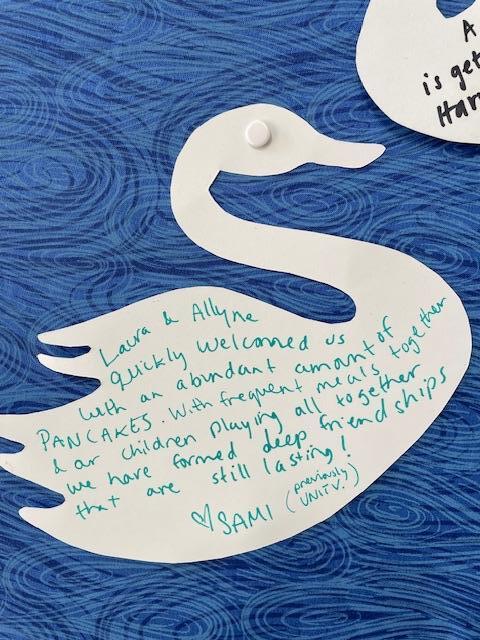


Reflections and memories of community life from Swan’s Market Cohousing’s 25th anniversary celebration
Benefits:
For residents and for society

Of particular interest to seekers and residents

Of particular interest to policymakers
“When I come home my child is always doing things with residents –I call it his ‘other life’. He goes to theatre with people in their 90s. I know he’s safe if I’m not around.”

Resident of an urban ecovillage, South Australia, aged
30+

● Reduced loneliness and isolation
● Shared purpose or mission
● Opportunities for contribution and communication
● Empathy, inspiration and advice across silos
● Collaboration during crisis
● Flexibility and support through life’s stages (multi-purpose housing)
Cultural enrichment and resilience
Social connection and belonging
● Collective purchasing (food, utilities, goods)
● Access to shared amenities and spaces e.g. gardens, creative spaces
● In some cases compact living arrangements

Sharing the load
Benefits of communal living – for residents
Affordability and convenience Efficient and sustainable consumption
● Social stimulation (self-esteem, stress reduction)
● Skill sharing and peer education
● Activities promoting mobility and cognitive engagement
Health, wellbeing and personal
growth
● Chore sharing and collective care
● Community meals
● Collective problem solving e.g. maintenance, security, crisis management
● Reduction of consumption and waste through sharing
● Shared purchase and use of tools, appliances, vehicles and goods
● Promotion of sustainable habits e.g. recycling, growing food
These are residents’ reported benefits. This list is neither comprehensive nor will each benefit be experienced in every communal living situation. On the following pages you can see benefits which ripple out into broader society.
“As a single dad it’s great to know someone is always around. If I get home late from work, there’s always people here. It’s like my daughter has lots of aunts and uncles… People watch out for each other. Everyone knows where my key is.”

Cooperative resident, California, aged
50+

Building social capital across silos e.g. ages, backgrounds and financial brackets
Piloting and demonstrating new approaches e.g. around governance, sustainable living and conflict resolution
Stronger Neighbourhood Networks Education & Skill Sharing
Innovation & Experimentation
Collective caregiving and proactive support which may reduce usage of health and social services
Offering rooms and buildings for regular and one-off events and activities

Alleviated Burden on Public Services

How communal living models can
benefit broader society


Providing Community Spaces
Boosting Local Projects
Stewardship of Local Area
Spreading approaches to social and ecological sustainability as well as teaching hard skills such as carpentry
Promoting ecological responsibility, safety, and shared care for public and natural spaces
Volunteering, Advocacy & Activism
Functioning as a hub for social causes and initiatives
Supporting ethical businesses and development projects through space, donations, advertising and labour
“All the support people get here is interrupting negative cycles around poor health, anti-social behaviour etc… saving millions of dollars.”

Staff member at a supported independent community,
Oregon

Catalysts, not bubbles: how intergenerational communal housing can enrich society
I often encounter stereotypes that communal living spaces are insular bubbles, withdrawing from society to attempt private utopias. But many of the 54 communities I visited are engines of positive change. Below are just some of the ways these communities are making an impact far beyond direct benefits for residents:
their common space to host phone-banking events, during which volunteers from both inside and outside the community made calls to potential voters. One resident described this room as “a launch pad to do so many other things,” from campaigning to baby showers.
1. Hubs for volunteering, activism, and stewardship
Attracting people committed to positive change, communities often serve as a base for grassroots organising. For example, over the lead-up to the 2024 US presidential election, Berkeley Cohousing used
Communities themselves are often established with a core ecological ethos; the Cohousing Research Network (henceforth CRN) survey on cohousers in the US revealed that 79.1% of participants believe their community does more to reduce its carbon footprint, conserve resources, and live sustainably than nearby neighbourhoods. Beyond this, many inspire and catalyse environmental
action outside their walls, such as Murundaka cohousing community in a Naarm (Melbourne) suburb. They first mapped local sustainability work, going on to support many of the initiatives such as vegetable planting (as part of the Transition Town movement) which, according to a resident, has “flourished since [Murundaka] was established.” Over in Adelaide Hills, Cennednyss, a small intentional community established on feminist principles in 1978, has built a “Kanga Palace” after rescuing various joeys whose mothers were killed in roadkill accidents. This has involved ensuring the land is safe, protected, and spacious for the kangaroos and nearby animals, as well as tirelessly feeding the babies.
At Canticle Farm – an intentional community in Oakland – residents are dedicated to activism on issues such as climate change and systemic racism. Functioning through a gift economy, the community provides a secure and affordable base for those committed to social justice. Furthermore, three of the homeshares on the urban farm are reserved for people who have experienced systemic discrimination, such as indigenous people and men of colour leaving incarceration.
2.
Sharing spaces and resources
The cost advantages from living more communally can mean a lot of these spaces have useful amenities
such as large event rooms and tool sheds. Around 70% of respondents to the CRN annual survey reported that outside organisations had used their community’s common spaces before the Covid-19 pandemic. Common uses include fundraisers, exhibitions, concerts, educational workshops, activities such as dance, support groups such as Men’s Sheds, civic meetings, upcycling, and group therapy.
3. Education and skill sharing
Across communities in the US and Australia, residents are not strangers to running workshops and hosting tours. Communities tend to be passionate about spreading their approaches to
social and ecological sustainability, with some offering free accommodation programmes to eager learners. Common topics include permaculture, conflict resolution, DIY, and carpentry.
For example Christie Walk, an urban ‘ecocity’ development in Tarndanya (Adelaide) home to around 40 residents, has welcomed 1,850 visitors in the last two years alone. Interaction with locals sits at the cornerstone of Christie Walk’s approach; one resident said, the name comes from the fact residents “always said we didn’t want to lock our community”.
4. Building social cohesion
At their core, these communities are about fostering connection – often bridging manufactured societal divides such as age, race, and socioeconomic status. Residents work to create inclusive spaces, addressing discrimination and interpersonal challenges head-on. This includes co-creating conflict resolution processes and hosting local events, such as potluck meals, clothes swaps, and community fairs. Magic – an intentional community in Palo Alto grounded in valuescience– cohosts neighbourhood gatherings for 100+ people to nurture community bonds, providing entertainment through their own community band as well as
leading set-up and clean-up.
My scope has been broad, including visits to community-oriented supported housing, such as HiFi Collective in LA.
Here, residents need stable housing and struggle with chronic physical and mental health issues, including loneliness. The community has a social focus, intentionally promoting relationships amongst residents, building a community of trust and support. One older resident struggled at first to accept her neighbours, but through a mix of gentle intervention by staff coupled with event programming designed to catalyse meaningful connection, she has developed a close bond with her younger Transgender neighbour, and they now share clothes
and meals. As a resident at Canticle Farm put it, “It’s about relationships. Proximity changes a lot – when you live together, stigma goes out the window.” The work of these communities to develop relationships both amongst members, and with neighbours outside of community, helps with longterm resilience as social connections organically lead to more mutual aid and support. A resident at LA Ecovillage shared how important this is for her as a single parent without family in the country: “residents of all ages have figured out so many thoughtful ways to connect with my daughter; she now has a web of caring people around her.”
Setting an example: inspiration through existence
As well as the myriad tangible ways intergenerational communal homes can benefit society, through their very existence these places also play a pivotal role of providing hope, experimentation, and inspiration in a world where these can be sparse.
are more single-person households than ever. These communities can be seen as a form of prefigurative politics; instead of fighting unequal systems through forms such as protest (though many residents will do this) they create change through building and showing new solutions which embody values of egalitarianism and sustainability.
me “our version of activism is creating something new and better.” A very different example is the Queen City
The UK, Australia, and the US are all societies which are increasingly disconnected while loneliness and mental ill health statistics soar, where pressures around consumerism are everywhere yet we face a climate crisis, and the nuclear family is constantly presented as the most legitimate way of living whilst there
According to CRN, nearly 90% of cohousing residents reported feeling that their community provides a model for positive social or environmental change. At the Lost Valley Education Center, an intentional community in Oregon grounded in holistic permaculture and nonviolent communication, one member said to
Cooperative in Colorado, a limited equity cooperative in a single home. They offer affordable housing during a housing crisis and a “family-like” community based on mutual aid, connection, and collaboration. The founders, who are bringing up a child in this house, fought to change state law around barriers to living together as unrelated adults.
Why this matters
Intergenerational communal living models have the potential to address some of today’s most pressing challenges, namely:
● Loneliness and isolation: through nurturing deep social connections and support networks.
● Housing insecurity: while it is true that some are no cheaper than traditional housing options, many communities do provide affordable — or fully subsidised — living.
● Climate crisis: by demonstrating sustainable, low-impact lifestyles and
● and catalysing important work such as regeneration.
● Social resilience: through bridging divides, fostering empathy, and functioning as inclusive community anchors.
These communities provide live testing spaces for tackling some of society’s most wicked problems, and they themselves can be catalysts for positive change. Through more showcasing of the vast opportunities presented through intergenerational communal housing models, I hope that interest, advocacy, and investment will increase, so that we can move toward a place where policy facilitates, instead of disincentivises, living more communally.

Explore further in: Catalysts,NotBubbles:How IntentionalCommunitiesEnrich Society
Published in Communities Magazine
CohousingResearchNetwork(CRN)statistics arefrom“AntecedentsandEffectsof Cohousing:AStudyofCohousingCommunities andForming-GroupsintheUnited States—Five-YearAnnualSurvey(2022-2026),” (Berggren,HeidiM.,LaDonaGKnigge,Chuck MacLane,DianeMargolis,JaneNichols,Neil Planchon,andAngelaSanguinetti.)


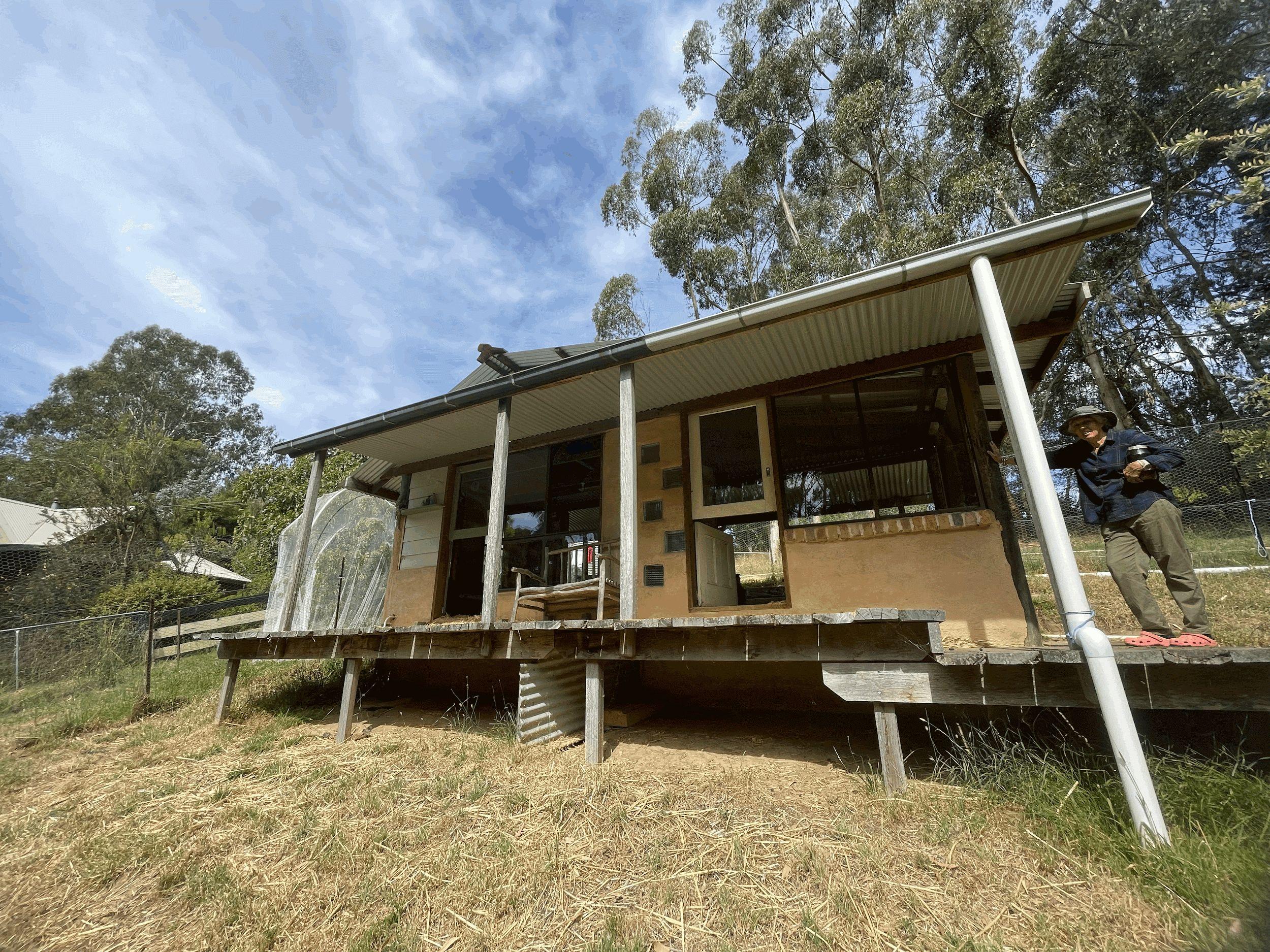
Photos taken at Cennednyss, a rural ‘social cooperative’ and farm on privately owned land in Adelaide Hills, Australia. The intergenerational, intentional community, currently 8 people, built a ‘Kanga Palace’ (bottom right) to care for kangaroos rescued after road accidents.
“People
here in their 90s have been thrilled to end life without needing nursing or being isolated. It remains neighbourly: we don’t play personal care roles, but we care. Having people for coffee every morning makes all the difference.”

Cohousing resident, South Australia, 50+

Making it work

Of particular interest to practitioners
“Because we’re neighbours, we just bond. At 74 I’ve done it all – a kid, a divorce… my door is constantly being knocked on for advice. ”

Cooperative resident, aged 74, California

Building blocks for intergenerational communal living
Sharing skills, learning and experiences
Community rhythms and rituals
Celebration, care and personal acknowledgement
Belonging and Purpose
Community agreements and processes
Social Infrastructure
Evolution and renewal
Accessible and transparent communication
Child and age-friendly design
Multi-purpose and transition-friendly design
Physical Foundation
Connection-orientated design, balanced with privacy
Resource security and sustainable policy foundations
Notexhaustive orprescriptive.
Building blocks for intergenerational communal living
Turning housing into community
In thriving communal living spaces, neighbourisms – informal acts of support, care and interest – are the norm, not the exception. But these micro-communities exist within broader society where mistrust and competition are dominant – so what makes their culture so different?
● Establishing reliable income streams to support community operations and shared resources.
● Securing land tenure – whether through ownership or long-term, stable leases.
● Navigation of national and local regulation and collective advocacy.
My research surfaces some key building blocks that create the conditions for neighbourisms to flourish, which, in summary, includes:
Resource security and sustainable policy foundations Long-term viability hinges on secure resourcing and navigation of the policy landscape. This includes:
Physical foundation
The spatial design of communities provides groundwork for social connection. This includes:
● Child and age-friendly design: safe, accessible architecture (inside and outside) appealing to all age groups.
● Multi-purpose and transition-friendly design:
community spaces that accommodate diverse activities. Transition opportunities for life's stages, such as larger units as families grow or units without stairs as accessibility needs change.
● Connection-orientated design: spaces that prioritise visibility and spontaneous interaction, balanced with privacy. Green areas and shared practical spaces – such as laundry or mailboxes – are important for chance encounters.
Social infrastructure
Systems and practices that structure community engagement. This includes:
● Community rhythms and rituals: regular social and task-oriented events, with food being particularly important.
● Community agreements and processes: frameworks for decisions and conflict resolution.
● Accessible communication: digital and physical tools (such as whiteboards) supporting regular communication, as well as transparent decision-making processes, and convenient meeting times for different age groups.
Belonging and purpose
Intentional and spontaneous elements which build meaning and collective identity. This includes:
● Sharing, skills, learning and experiences: individuals sharing knowledge and expertise, as well as collaborative projects such as gardening, DIY and storytelling.
● Celebration, care and personal acknowledgement: mutual aid processes, cultural recognition, acknowledgment of life transitions, and expressions of gratitude.
● Evolution and renewal: changing roles and governance approaches as needed, integrating new members, and community reflection.
These building blocks were consistently present on my visits, though implemented in different ways according to each community's unique context and values.
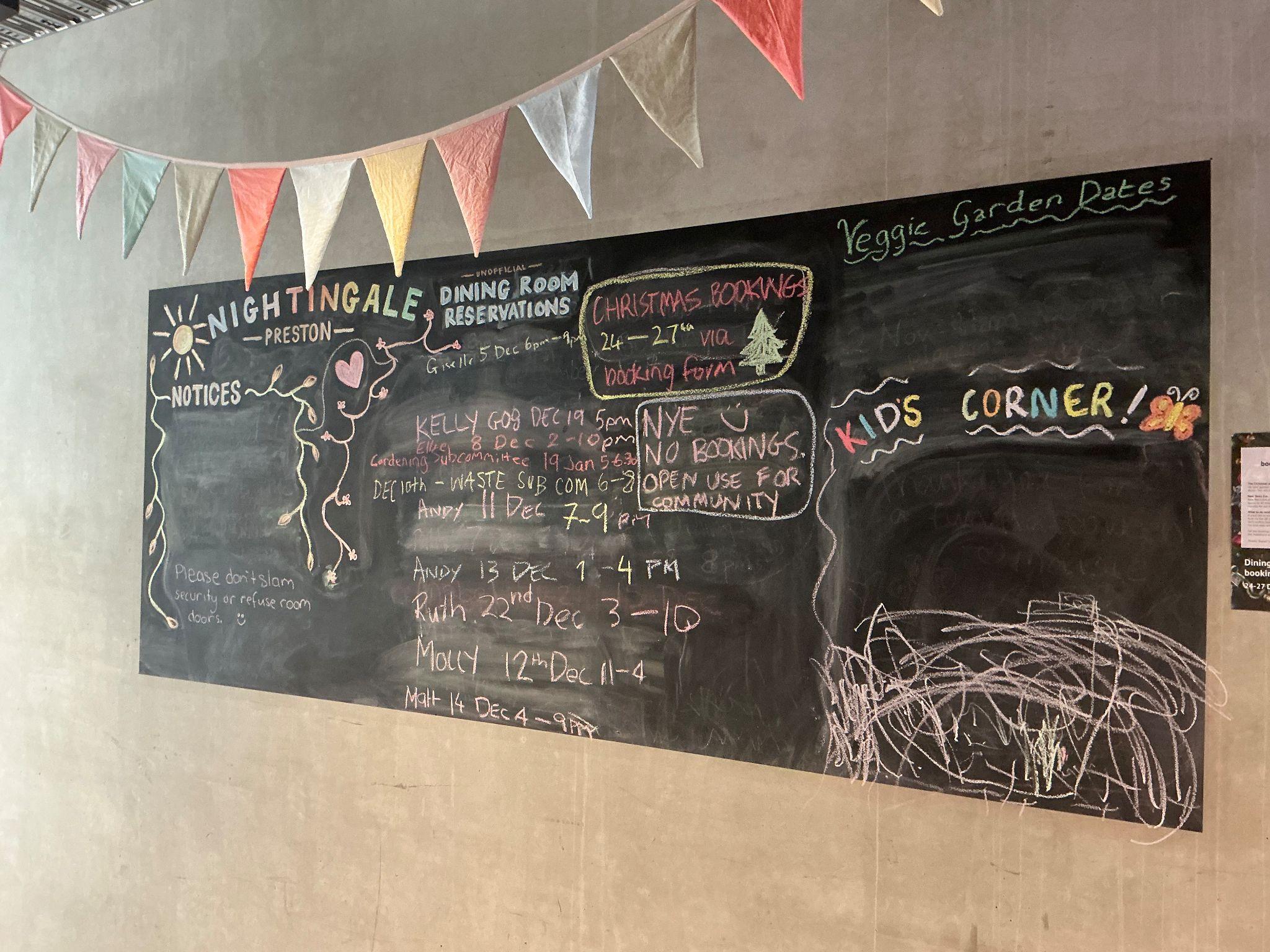
Nightingale Preston, Melbourne
“I feel closest to people at meals – we can relax and enjoy each other, they’re always low tension times whereas house meetings can be stressful.”

Housing cooperative resident, California, 40+

Food as social fuel
One of the first things that came up in almost every community I visited was food. Whether I was speaking to residents of cohousing, tiny home villages, or cooperatives, people kept returning to the same idea: food is the glue that holds a community together. It can bring people into shared spaces, facilitate conversation, and create a sense of belonging.
Each community had its own way of embedding food into everyday life, but some recurring practices stood out:
● Food exchanges: Communal spaces where people leave and swap food items. Often this would be food which has been grown on
the property. For example LA Ecovillage’s lobby features a ‘freebie table’.
● Growing food together: Many communities had shared gardens, “food forests,” or individual plots where residents grow and distribute produce, either working together or side-by-side. Gardening together was often named as a key moment of interaction for residents, providing a relaxed and regular moment to connect.
● ‘Potlucks’: Highly popular in communal living spaces, ‘potlucks’ invite attendees to bring a dish of their choice, resulting in a wide range of dishes to choose from and share together. A simple yet effective way to bring people
together, for some communities as regularly as twice a week, or for others, organised around cultural, seasonal or celebratory moments.
● Regular communal meals: A staple of most communal homes, shared meals are organised in a variety of ways. Often residents cook for the community, or a smaller faction, on a rota system. In some communal homes, every resident joins regularly, and for larger communities, smaller groups meet.
Sometimes people from different units come together to cook, creating an additional opportunity for connection beyond households and across the community. In some communities, the challenges of allergies and dietary requirements
Continued:Food as social fuel
has meant that people come together to eat regularly, but bring their own food instead of using a cooking rota.
● Community soup: Some communities, such as Santa Rosa Creek Commons, have a tradition of residents contributing vegetables or ingredients throughout the week for a shared soup at their monthly work day.
● Rotating dinners: Residents taking turns hosting meals in their individual units, helping people see each other’s living spaces and build relationships, for instance at Narara Ecovillage in New South Wales, during a period shortly after move in.
● Happy hours and snack-based
socialising – whether a wine and cheese evening at Fair Oaks EcoHousing or a weekly coffee and cake morning in Castlemaine’s The Paddock ecovillage, structured but casual moments create consistent touchpoints for connection and food draws people in.
● Food co-ops and bulk-buying: Many communities run self-governed food programmes, allowing residents to access produce sustainably and create deeper relationships through shared responsibility.
● Acts of care through food: Many communities told stories of kindness which centred around food, for instance ‘meal trains’ (residents taking it in turns to cook
for others who were sick or had recently given birth), ‘secret angel’ gifting (people would give a specific individual small gifts regularly, often sweets or baked goods) and knocking on resident doors to invite them to meals if they have become more socially withdrawn. At Goodness Village, a tiny home community for people exiting chronic homelessness, some residents take on parental or caregiving roles by cooking or shopping for others – shifting from survival mode into a more trust-based, communal way of living. This community also has an annual tradition where local volunteers act as waiters for a fun and lavish celebratory meal.
Continued:Food as social fuel
● Food as contribution: Not everyone in a community can participate in physically demanding work days, but cooking a meal or bringing baked goods offers an alternative way to contribute. Flexibility helps ensure that participation in communal life is accessible to more residents.
More than just a meal
The role of food in communal living goes far beyond sustenance. It can build trust, celebrate culture, and help people to feel seen and supported. Whether as structured dinner or an informal exchange of homegrown produce, food creates the conditions for connection in ways that few other rituals can.



Text from FoodasSocialFuel:Food asavitalsocialconnectorin intergenerationalhousing communities, published on the Foundation for Intentional Community blog
Bulk buying at a cooperative in New South Wales
Swan’s Market, courtesy of Katherine Nagasawa
“People here are from a real range of cultures, backgrounds and speak different languages… It's food that brings everyone together.”

Quote from staff member at a supported independent housing community, California

Navigating conflict

Of particular interest to practitioners
“Sharing spaces, (some) resources and decisions requires a level of collaboration, compromise, and communication vastly dissimilar to many people’s prior experiences. Community is not homogeneity –people have different views, and conflict is inevitable.”

Speaking the same language: embracing conflict in communal homes
Through visits to a broad range of models – such as housing cooperatives, cohousing, ecovillages, tiny home villages and permanent supported housing – one lesson emerges loud and clear: conflict is a necessary component of a thriving intergenerational communal home. Diversity sits within the very essence of community; each one is home to a range of values, communication styles, capabilities and histories, which will naturally breed conflicting viewpoints and preferences. I’ve come to believe that conflict is an essential part of living together, and how it is handled can make or break a community.
While wider society often shies away from conflict, seeing it as a problem to be minimised or avoided, intergenerational communal homes benefit from embracing it as a (sometimes messy) pathway to growth and deeper connection. In our society, many people are comfortable reflecting on how our backgrounds have shaped expression of emotion in other spheres, for example the popularised ‘love languages’ theory, but our conflict-averse culture is less encouraging of self-analysis when it comes to managing disagreement, tension and frustration. However, just as we express love in varied ways, we all have learned responses when it comes to dealing with conflict, such as direct confrontation, avoidance,
passive aggression or ‘stonewalling’. Intergenerational communal homes will be home to a range of preferences and skillsets. Residents can benefit from developing a shared conflict language and striving to resolve disagreements head on. Many of the communities I have visited have built comprehensive conflict policies and strategies, for example: ● A three-step process such as:
1. Direct one-to-one conversation
2. Mediation from a chosen person within the community
3. Mediation from an external facilitator funded by the community.
● An agreed structure of how issues are initially verbalised, for instance:
1. Observation, 2. Feeling, 3. Need, 4. Request.
● Assigning proactive roles in the community, for example a ‘Vibes Watcher’ in meetings or a trained ‘Conflict Resolution Committee’.
● One community, Canticle Farm, even has a Restorative Justice Room (see below). The founder

explained that the windowed space is purposefully visible so that people can see fellow residents’ “tough but necessary work” of navigating disagreement in a healthy way.
There is no right or wrong – different processes and policies will work for different communities. One of my biggest takeaways is how powerful it can be to build in regular space for conflict – instead of waiting until it inevitably becomes necessary. One resident described disagreements within the community as ‘knots’ – like

with wool, if you act fast, untangling is easy. If you wait around, the ‘knots’ can grow and even merge together.
Some communities have a regular ‘clearing’ item on their meeting agenda, encouraging each other to share grievances, frustrations, or concerns openly. ‘Clearings’ not only allow residents to address tensions early to avoid accumulation, but they also help a group develop a shared ‘conflict language’ and build a culture where conflict isn’t feared, but seen as part of the community's regular rhythm.
Conflict is not inherently bad, but when unresolved or ignored it can damage relationships and community fabric.
By creating structures for conflict to be aired, processed, and addressed, communities strengthen their bonds and create a culture which celebrates diversity of opinion. Instead of allowing conflict to fester, and the knots to wind tighter, proactive communities can build resilience through establishing healthy regular processes. Embracing conflict means embracing the messiness of real human connection, so in these communities, it’s a key ingredient in building the all important sense of belonging.


See the following pages for the common causes of conflict.
Bridge Meadows, Portland, Oregon


Explore further in: Speakingthe SameLanguage:Embracing ConflictinCommunalLiving published by the Cohousing Association of the US
Los Angeles Ecovillage
Hifi Collective, Los Angeles
“A bunch of people living together means people think differently and not everyone will get on – like family! But we care for one another and are committed to something greater than each individual”

Resident of a cohousing community, California

Common causes of conflict in intergenerational communal homes

Underlying factors

Purpose



My ‘Seven P's' framework builds upon Laird Schaub's pioneering work on conflict in intentional communities. In his 2009 article 'Minding the "Ps" for Cues,' Schaub identified his own, different set of 'P' challenges, establishing a foundation for understanding conflict patterns in communal living that this research seeks to extend.
Possessions & privacy


Underlying factors
Communication Styles
● Clashing approaches to conflict; these can be influenced or exacerbated by trauma, past experience, generational norms and cultural difference.
● Conflict avoidance tendencies.
● Varying comfort and expectation around vulnerability and emotional disclosure.
● Differing preferences around structure vs. organic approaches to conflict resolution.
Community Evolution
● Turnover and transition. Tension between founding members and new residents over community direction.
● Shifting demographics and size impacting preferences, needs and priorities.
● Changing governance structures and leadership transitions.
● Handling of institutional knowledge and ‘unwritten rules’. Balancing tradition and innovation.
● Technology adoption and evolution.
Resource Allocation
● Financial inequities. Balancing individual financial autonomy with collective economic needs.
● Common space, boundaries and maintenance.
● Resource (water, electricity, shared properties) consumption.
● Individual unit quality and size.
● Budget priorities and community investments.
● Attitudes toward frugality versus abundance.
External Pressures
● Economic instability, natural disasters, health crises.
● Climate emergency and sustainability practices.
● Political tension and division.
● Regulatory and policy shifts.
● Public perception, social norms and media portrayals.
● Ageing in place challenges e.g. health and social care access and transportation.
● Technological evolution.
● Balancing self-sufficiency with external engagement.
Common causes of conflict in intentional communities
Pets
● Noise, waste management, allergies and cleanliness.
● Mental health considerations (both gaining support from animals and experiencing disruptions).
● Native wildlife protection and ecological impact.
● Different views on training, freedom of animal movement and raising animals for specific purposes e.g. food, profit.
● Conflict amongst animals.
Parenting
● Discipline and educational styles, which can magnify generational and cultural divides.
● Noise and mess expectations.
● Collective vs. family-specific responsibilities, routines and interventions.
● Adolescent rights, resources and privacy.
● Integration of children into community work and decision-making.
● Differing opinions around young people’s involvement or responsibilities in community life.
Partners
● One partner not ‘buying in’ to values or expectations.
● Relationship conflicts affecting community dynamics.
● Integrating new/multiple partners into community.
● Stigma and non-traditional dynamics.
● Resource allocation and housing adjustments.
● Generational differences in relationship norms and expectations e.g. polyamory, chosen family setups.
Power and privilege
● Genuine or perceived power and leadership – especially around decision-making and establishing or upholding rules or guidelines.
● Cliques, informal hierarchies and influence. Unaddressed structural inequalities e.g. class, race, gender.
● Transparency and information flow.
● Balance between efficiency and inclusive decision-making.
● Educational, economic, ownership, age, accessibility or linguistic privilege.
● Tension between newcomers and founders/‘originals’.
Continued:Common causes of conflict in intentional communities
Possessions and privacy
● Boundaries between use and ownership of personal and communal items and spaces.
● Different standards of tidiness, organisation, noise and aesthetic preferences.
● Confidentiality practices and gossip.
● Expectations around social connection.
● Negotiating visitor access.
● Rights to modify or personalise spaces.
● Use and borrowing of private possessions.
Participation
● Inequitable contributions creating resentment.
● Different levels of skill and capacity.
● Weighing up structure and flexibility.
● Burnout from excessive bureaucracy.
● Shifts in enthusiasm, expectation and pacing.
● Valuation of visible and invisible types of contribution.
● Handling temporary reduced participation.
● Balancing expertise against democratic participation.
Purpose and principles
● Evolution of mission and rules as context and demographics change e.g. sustainability practices.
● Different interpretation of mission and guidelines.
● Tensions between pragmatism and idealism.
● Balance between individual freedom and collective responsibilities.
● Handling of divergent worldviews.
● Balancing multiple purposes e.g. social, ecological, educational, economic.
These insights emerged through visits to a mix of staffed and self-governed communities, though some causes of conflict will only be relevant for the former. This framework recognises that conflict is an inevitable and necessary component of communal living, with the potential to strengthen community bonds when addressed through appropriate conflict resolution processes.
“Conflict tends not to fester because there is just so much affection, especially with the kids.”

Resident of a suburban ecovillage, California

Case studies
“If the world falls apart, we’ll go to our village hall, we’ll pool resources, skills and knowledge, and we’ll chat about what to do.”

Ecovillage resident, New South Wales

Case study overview
Continued on the next page
From 54 inspiring visits, the following case studies are selected to highlight a range of approaches and funding models
Community Structure
Country Financing and affordability
LA Ecovillage Ecovillage, cohousing, intentional community, cooperative US Limited equity cooperative, land trust. Residents pay reduced rent.
Christie Walk Ecovillage Aus Open financing and support from professional networks. Buy-in is market rate.
Camphill California Social or public housing, intentional community, homesharing US Financed 80% by the state, 20% through fundraising. Residents pay reduced rate, often covered by benefits.
Santa Rosa Creek Commons Cohousing, intentional community, cooperative US Limited equity cooperative. Buy-in is around half of market rate.
Murundaka Cooperative, ecovillage, intentional community, cohousing Aus Common equity rental cooperative, residents pay 25% of gross income as rent.
Staffed or self-governed
Key themes
Self-governed Eco-activism, urban density, social justice, growing food, education, shared ownership
Self-governed Eco-activism, urban density, education, growing food, new build
Staffed Disability inclusive, growing food, social programming, trauma-informed, life-sharing
Self-governed Growing food, shared ownership, new build
Self-governed Shared ownership, eco-activism, social justice, growing food
The Village Homesharing, intentional community US Residents pay rent to a landlord. Self-governed Life-sharing, family-orientated
Continued:Case study overview
Community Structure Country Affordability/funding
Bridge Meadows Social or public housing, intentional community, cohousing, supported independent housing US FInanced by a mix of private donors and state services. Residents pay reduced rent (affordable housing).
Swan’s Market Cohousing Cohousing, intentional community US Financed through a combination of public funding and private equity. Buy-in is market rate.
Open Field Coliving
Homesharing, intentional community Aus Privately financed by two individuals, others rent from the owners.
Wild Sage & Silver Sage Cohousing, social or public housing, intentional community US
40% of units are affordable through City of Boulder income and deed restricted. The rest are market rate.
Moora Moora Intentional community, cooperative Aus Members own land in common and buy their homes with the option of vendor financing.
Staffed or self-governed
Continued on the next page
Key themes
Staffed Trauma-informed, family-orientated, foster families, mutual support, interconnected but age segregated housing, social programming
Self-governed Urban reuse, family-orientated
Self-governed Mutual support, life-sharing, family-orientated, eco-activism, growing food, rural
Self-governed Interconnected but age segregated housing, new builds
Self-governed Eco-activism, rural, shared ownership
Continued:Case study overview
Community Structure Country
Affordability/funding
Staffed or self-governed
Anita May
Rosenstein Campus Supported independent housing, social or public housing, apartment block, cohousing US
Financed through a mix of government funding, individual donors and grants. Youth services are free for clients. Senior housing is partially government subsidised. Staff connect residents to funding sources while meals and programming are free.
Urban Coup Apartment block, cohousing Aus
Fair Oaks
EcoHousing
Canticle Farm
Ecovillage, intentional community, cohousing, homesharing US
Continued on the next page
Key themes
Staffed LGBTQ+, homelessness, wraparound support, social programming, trauma-informed, interconnected but age segregated housing, new build, urban density
Ecovillage, intentional community, social or public housing, homesharing US
Financed by Nightingale Housing (a non-profit focused on social, financial and environmental sustainability). Buying and rentals are on the private market.
Homes are market rate, but in at least one case, three households chipped in on the purchase to be equity partners.
Gift economy, funded through grants and support of individual donors.
Self-governed Urban density, new build
Self-governed Growing food, new build, family-orientated
Self-governed Activism, social justice, growing food, trauma-informed, family-orientated, education
Continued:Case study overview
Community Structure Country
Affordability/funding
Goodness
Village Social or public housing, tiny home village, cohousing US
Berkeley Cohousing Cohousing, intentional community US
HiFi Collective Social or public housing, supported independent housing US
Queen City Cooperative Homesharing, intentional community, housing cooperative US
Narara Ecovillage Intentional community, ecovillage, housing cooperative Aus
A non-profit leases the land from a church, with funds from government grants, local businesses and community members. Neighbours pay 30% of their income or commit to community work hours.
Self-financed by residents. Houses are around 50% below market rate due to a limited equity cap.
Financed by the state and a traditional construction loan. Rental subsidy provided by the state.
Originally bought by a couple, who transferred the house to a limited equity cooperative with support from a cooperative bank.
Lots sold on the open market, land on community title. Some people share lots to reduce cost, and some rent. Financed through installment payments on the land and member loans.
Staffed or self-governed Key themes
Staffed Social programming, homelessness, tiny homes, trauma-informed
Self-governed Activism, family orientated, food growing, shared ownership
Staffed Homelessness, wraparound support, urban density, social programming
Self-governed Shared ownership, life-sharing, family-orientated
Self-governed Shared ownership, family orientated, eco-activism, growing food, circular economy, self-builds
Types of intergenerational communal homes
See working definitions here




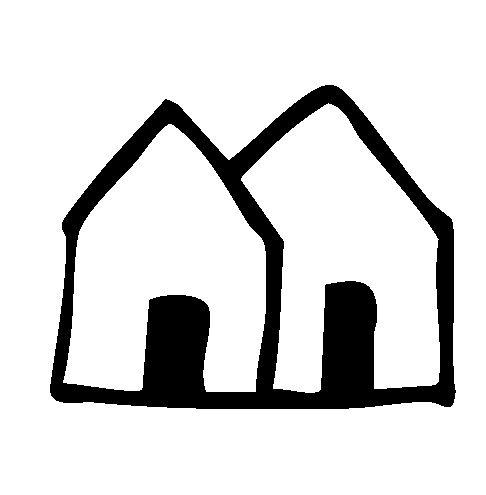
Ecovillage

Tiny home village
Homesharing

Housing cooperative
Social or public housing
Apartment block

Intentional community
Cohousing

Supported independent housing
Look out for these icons in the following case studies
LA Ecovillage, Los Angeles
Urban intentional cohousing cooperative committed to demonstrating an economically and socially sustainable way of living

Approx 50 residents aged 3-87

Urban
“Living in LA can be ruthless, nuclear, anonymous. Here people know each other. There’s a coziness.”

Residents are primarily very low to middle income and intentionally diverse across age, ethnicity, gender, house composition and income

Move in year: 1993

Limited equity cooperative. Land Trust ensures permanent affordability through a ground lease arrangement.
“The intergenerational aspect is particularly important – it gives me ways of looking at problems I’ve never considered.”
“One resident recently had a stroke and straight away we started a meal chain… I know that I can rely on anyone.”

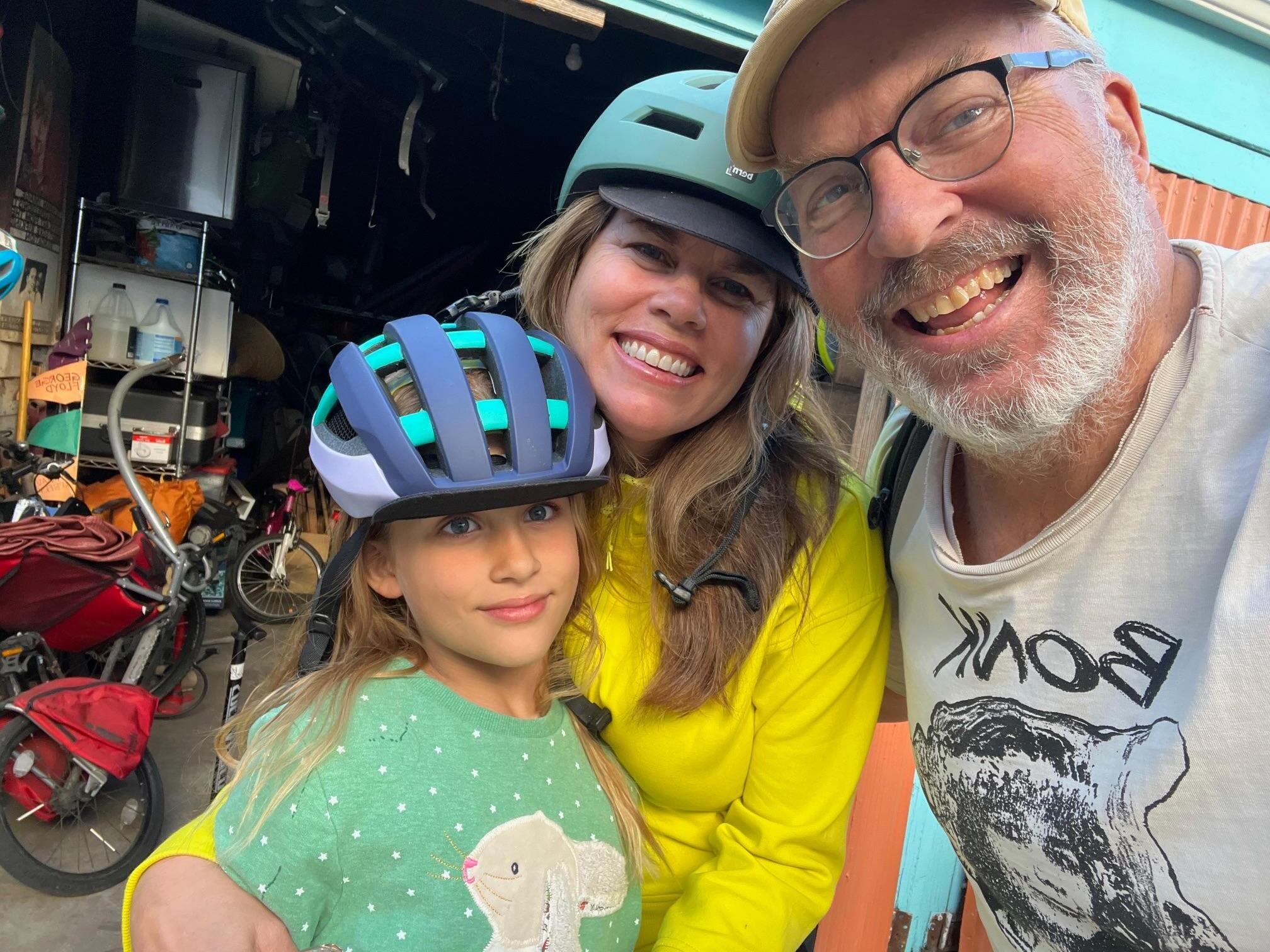

LA Ecovillage, Los Angeles
The pioneering LAEV was made possible through an Ecological Revolving Fund, enabling block purchases via loans from trusted individuals. They have transitioned to a cooperative, emphasising shared decision-making, and created a rubric to establish a culture of expectation and shared values with new members.
Residents have private units and share resources including: two communal kitchens; laundry; a play area; garages hosting equipment for DIY, exercise and arts; vegetable gardens; a ‘freebie table’ and a bulk shop. Membership is intentionally diverse across gender, ethnicity, age, income and house composition. One resident lives in a tiny home. There is a culture of mutual support, for instance: meal trains for the sick, sharing items and clothes, and childcare with various residents describing their neighbours as “like family”. One resident said “people have different views and interests, but living together with intention makes it work”.
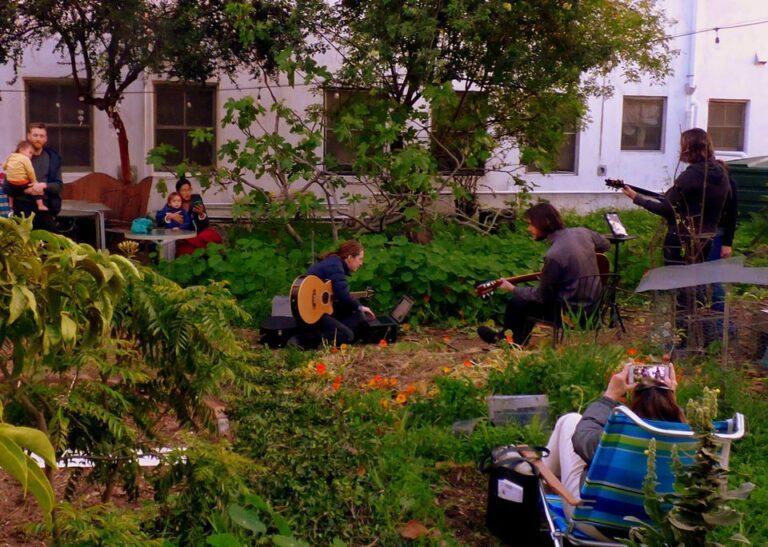
Activities such as work parties (for maintenance and gardening tasks), weekly potlucks, celebratory happy hours – and during the Covid-19 pandemic, outside music-making (see photo) – encourage connection. Impact extends into the local community, from bike upcycling, tree planting, building permeable sidewalks to save rain and run street zumba, to securing a car-free zone for safer streets. Opposite where residents live is LAEV’s beautiful garden which local school children often visit.
“Frankly being around people my age is depressing – hysteria about technical changes, always talking about medical conditions… here people have empathy to all the challenges the younger ones face. We’re neighbours – so we naturally bond.”
Quotesfromcurrentresidents
Christie Walk, Tarndanya (Adelaide)
A biodiverse ‘ecocity’ development in central Adelaide modelling environmentally and socially sustainable living

Residents are “nature-friendly and people-friendly urban dwellers of all ages”

The stages of development of Christie Walk, comprising small, medium and larger housing options, were open financed; however, social and professional networks supported the project in times of need.

40-45 residents aged 2-85

Move in year: 2001

Urban
“When you share, life is better. We have learned sharing resources together is important and more cost effective than sustainability credentials alone.”


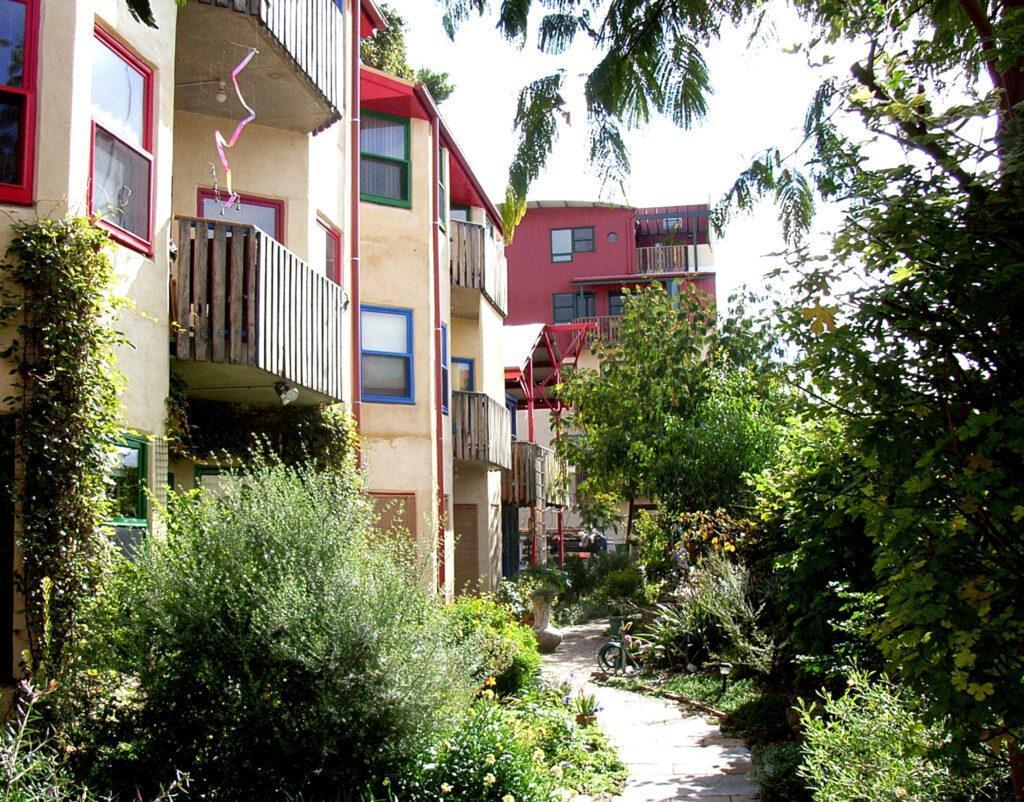
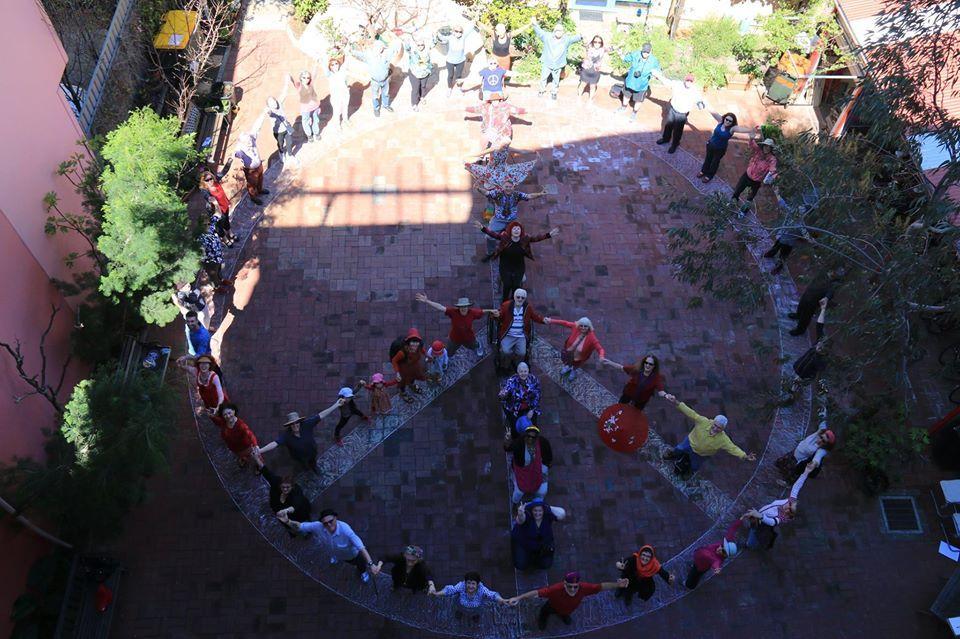
Photo: Effie Best
International Day of Peace sign project by resident. Photo: Jane Manifold
Christie Walk, Tarndanya (Adelaide)
Central Adelaide's Christie Walk is a biodiversity-rich community designed for sustainable and connected urban living. This is conveyed by their iconic wall mural commissioned to show the building stages and values. The social fabric is strengthened through mid-monthly working bees and end of the month communal dinners, often with films, local walks or updates on community activities. Two dedicated car parks help promote spontaneous interaction in the green spaces, and with 13 parking spaces between 27 apartments, transport sharing occurs. Buyers purchase units on the open market, whilst around one quarter of homes are rented, often by residents who have become central to community life. Shared spaces include a laundry, bike shed, community room and gardens. Voluntary groups manage garden planning, maintenance, bicycles, social opportunities and wellbeing, recycling, laundry and tours. As legally mandated by the strata system, decisions are made by voting but the community works hard to achieve consensus before decisions are made.

With 850-1000 visitors last year and rituals like their “Waifs and Strays” Christmas open to friends, the community is both dedicated to education and, as one resident put it, “open, engaged with the broader community, not opting out of life”, participating annually in South Australia’s Sustainable House Weekend (tours), and Good Neighbor Day barbecue. “There’s a beautiful intermingling across ages, and with the wider community.” Numerous residents have lived out their lives in Christie Walk. There is a palpable commitment to care, which “across the board, takes the form of a neighbourly interest in each other, without being intrusive.”
Quotesfromcurrentresidents
Photo: Alex Kwong
Camphill, Soquel



A life-sharing community where individuals with and without intellectual and developmental disabilities live, grow, and work together with a deep sense of autonomy, interdependence, and belonging

Friends (clients with special needs) are aged 22-77 but children of staff live onsite too

Urban

Approx 50 residents, 22 with disabilities, living in 10 buildings

Established: 1998

Funded 80% by the State, 20% through fundraising
“Our daily circles are key. We get a sense of where everyone is at, share exciting news and remind ourselves of our shared mission.”

“Being involved in caring for your house daily helps people know they’re important. We invest in making the space welcoming and doing tasks together.”


Camphill, Soquel
Part of the global Camphill movement, individuals with and without intellectual and developmental disabilities live at this anthroposophical community (based in Rudolf Steiner’s philosophy). Each different sized house has its own amenities, routine and character, housing a mix of co-workers, international volunteers (on a one-year programme) and ‘friends’. People move households based on need/life stages. Everyone has a mentor and there is a strong emphasis on personal growth and self-advocacy.
Routine is inbuilt through a weekly programme of activities; residents both have fun and contribute through meaningful work and activities which they choose based on skill and interest, such as gardening, preparing meals, weaving, and maintenance – utilising the range of shared spaces.
Belonging is cultivated through both community and single house activities including: frequent multi-cultural celebrations; moments of gratitude and appreciation; games; dance; yoga; a weekly lunch cafe; and beginning each day together at Morning Circle. Many social activities are based around the arts or spirituality; “It isn’t about performance, but sharing experiences – and something bigger than the individual”.

“Living with people you bond in a different way –we have an intuitive empathy through understanding one another.”
One resident aged 76 said, “I have a purpose in life. I’m not here to live with people with special needs necessarily, it’s about being with others. Homemaking, cooking, caring”.
Quotesfromcurrentresidents
Photo credit: Misha Hammond
Santa Rosa Creek Commons
Intentional community where everyone is a stakeholder and manager

Residents are people interested in cohousing

Around 30 residents aged 0-80

“I look out my window and see my kid pop into other apartments, talk to anybody and be herself… She is accepted, encouraged and thanked, and understands boundaries.”
Move in year: 2000


Urban
”I know if I need something, people are there.”
Not low income, but rates are about half of market rate. A limited equity co-op means all shareholders collectively own the community, not their own units.
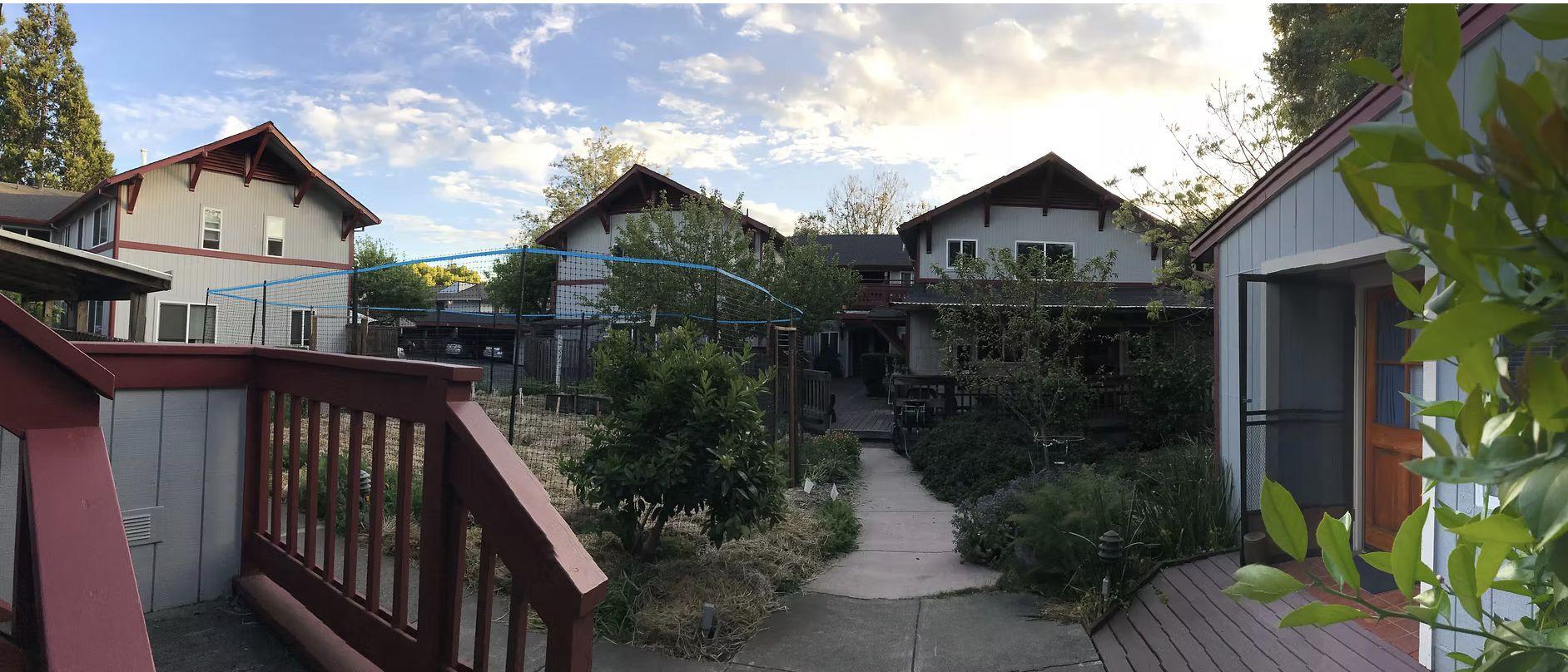





Santa Rosa Creek Commons
Santa Rosa Creek Commons is a rare example of a limited-equity housing cooperative, made possible by now-defunct state policies offering co-ops low-interest loans. Homes aren’t bought or sold on the open market; instead, departing members receive their initial investment plus modest interest – keeping the community affordable long-term.
Designed to spark connection, three major buildings face a central common space, with the laundry room, deck, and gardens acting as natural gathering spots. Community life is rich and reciprocal: from potlucks after meetings, wine and cheese evenings (see top right photo), and rallying in times of need, for instance 63 car rides were organised for a member undergoing chemotherapy.
At monthly workdays “we laugh, talk and interact in a different way to meetings” and community soup is made from ingredients that people contribute over days prior. Residents are generally part of two of the 10 committees (including one for conflict resolution), and decisions are made by consensus.
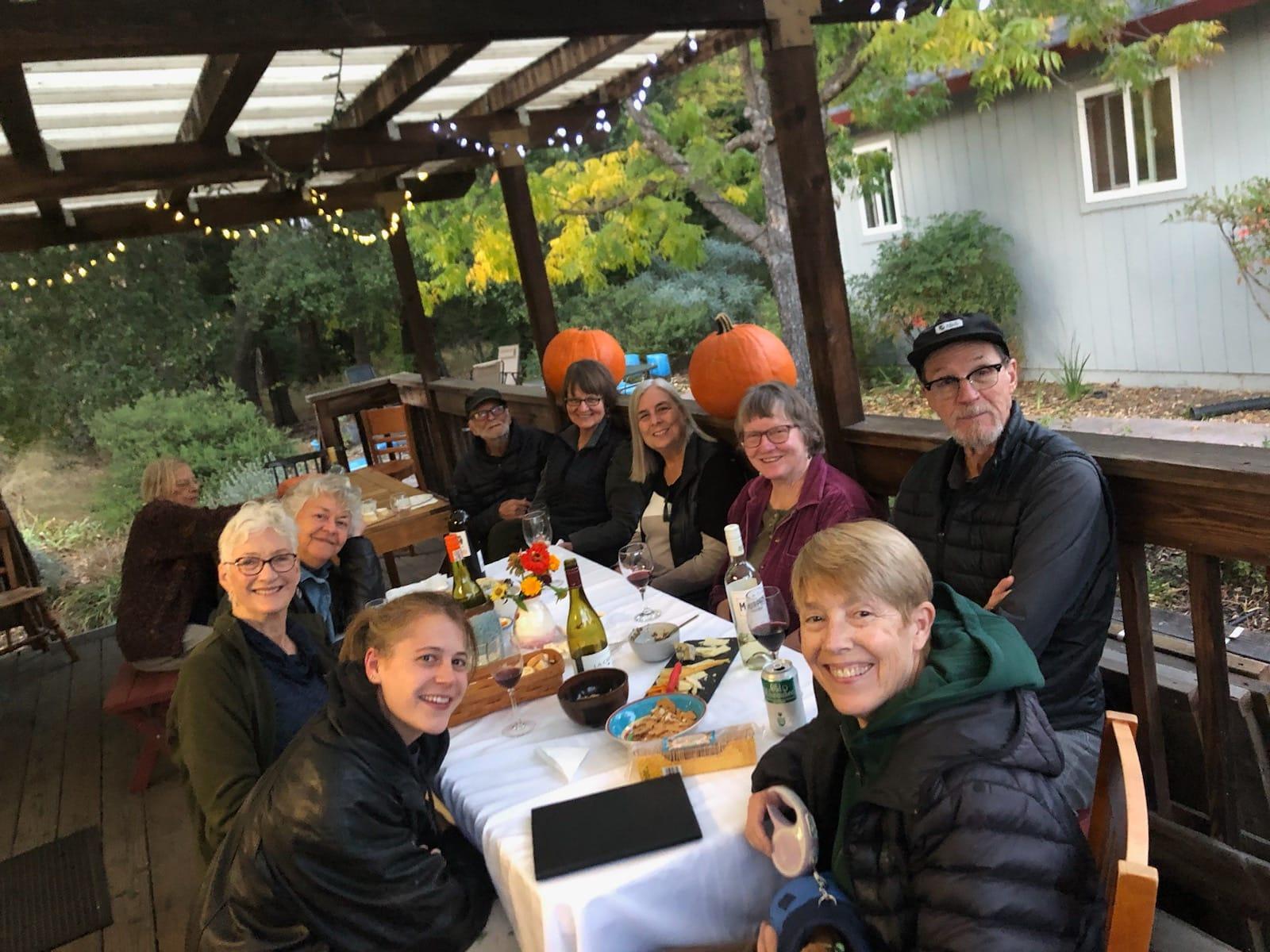
Though challenges around issues such as mental health, contribution and pets have emerged, residents have supported one another to resolve conflict. Children enjoy cookie time after school, put on plays, and even once ran a “chaotic but joyful” board meeting, though many have grown up and left, leaving a concern about the community ageing.
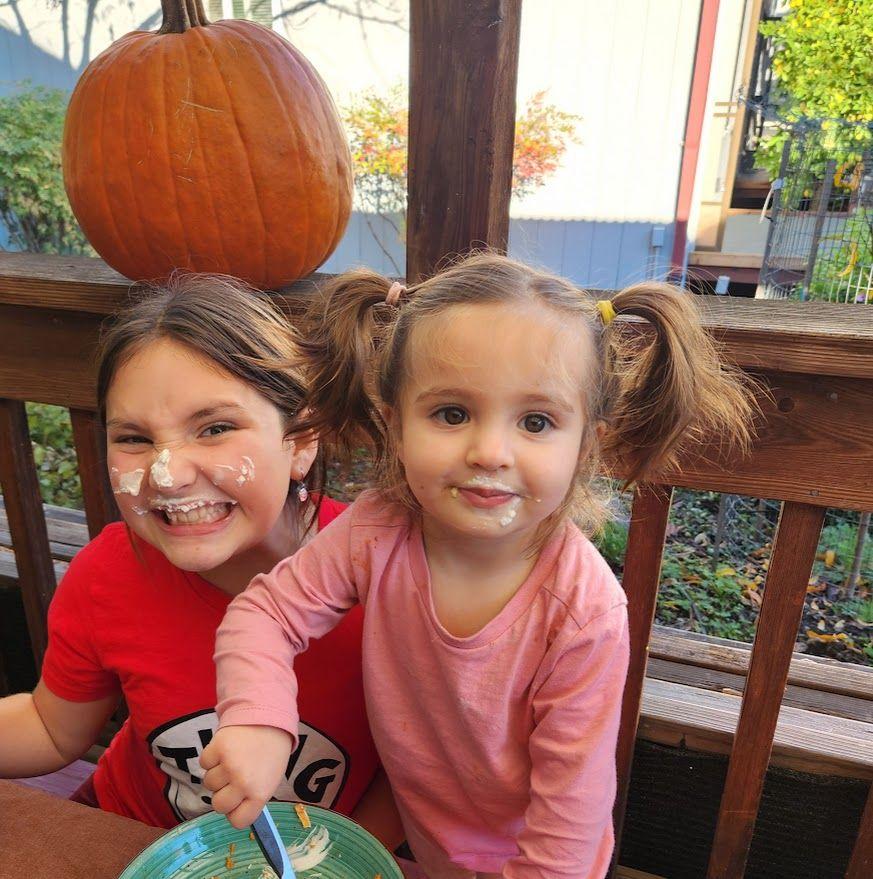
Quotesfromcurrentresidents
Murundaka rental cooperative, Naarm (Melbourne)
A long-term intentional all-renter community blending cohousing and cooperative housing

30-40 residents aged 3-81
“We gift time when we can, and make a real difference. It’s a nice way to live.”

Residents are low-middle income, and “hungry for community and for collaborative and sustainable living”



Suburban
Move in year: 2011
All residents are $1 shareholders in Earth CERC (Common Equity Rental Cooperative), an all-rental, social housing programme.




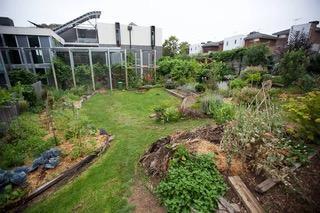
“I’m a single mum, but my son has always had role models around. Everyone has skills to share.”
“The buzz of community has spread locally and inspired other projects –here every day is a community building day.”

Quotesfromcurrentresidents.
Murundaka, Naarm (Melbourne)
Murundaka is an affordable self-governed rental cooperative. Rent tends to be 25% of gross income (with a floor and cap) which includes utilities (including internet) and a weekly common meal.
Each unit has a private kitchen, a small balcony or vegetable garden, living space and a bathroom. Shared space includes gardens, a communal kitchen and dining area, a play space, an upcycling room and a multipurpose activity room.
Residents are deeply embedded in the local community, hosting events, running workshops and catalysing various social and ecological projects. Children share lifts to school and play together as a “squad”.
Residents are expected to contribute across areas such as cooking, governance, maintenance and gardening up until the age of 65 – though older members tend to be deeply active, for instance, at 81, one hosts intergenerational art sessions, makes soup for workdays and ‘thrifts’ birthday presents for each child. Organic relationships are supported by structures such as a Buddy System for newcomers and an Annual Retreat at a nearby community.
“My son goes in and out of houses and I know he’s safe, and his life is richer.”

Quotesfromcurrentresidents
The Village, San Francisco
Family-orientated co-living in a multi-floor house in the heart of the city

Residents are a mix of people in different life stages, interested in living with children

Urban
“It’s helpful for single parents to share responsibility and not have to be on 100%.”



13 adults and 5 children, aged 5-48


Move in year: 2022
Owned by a landlord. Rent ranges between $700 and $1750.

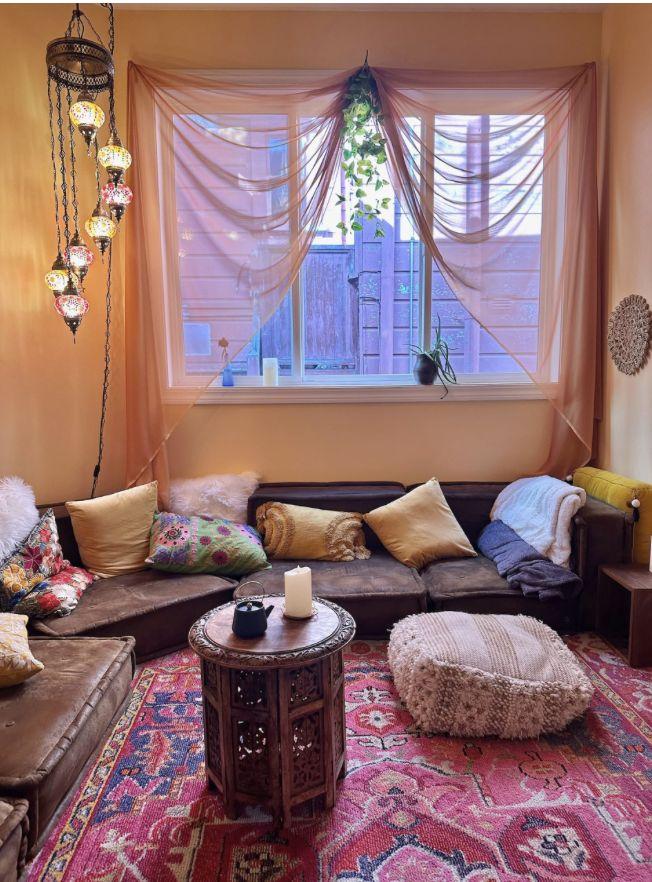

The Village, San Francisco
The Village is a family-oriented community within a single house. Across each of the three floors there is lots of interaction, though each has its own kitchen, laundry, and social dynamic. Alongside spontaneous communal time – such as coworking and childcare – residents connect through shared meals, monthly craft nights (open to non-residents), a board showcasing what brings each person joy, and “clears” at the start of meetings: emotional check-ins to encourage openness. One resident noted: “Shared parenting is so helpful for adult bonding – both shared struggle and shared play.”
Shared amenities include a workout room, tea room, communal bookshelves, camping gear, and a playroom, described as “the heart of the house”. Shared food is bought through pooled funds and there are warm personal touches such as the wall of memorable things children say. Cooperatively run (but not cooperatively owned) The Village uses ‘do-ocracy’: residents take initiative to try new things that can easily be undone, while significant or long-lasting decisions are made by ⅔ majority vote. Responsibilities are shared through role-specific “hats”, personal accountability, and ongoing experiments to support chore-sharing, like a digital self-celebration channel and a kids’ dirty plate basket. Childrens’ potential participation in governance is also being explored.

Quotesfromcurrentresidents
Bridge Meadows, Portland
An intentional community housing children impacted by foster care, and individual elders

60-75 residents aged 1-92

Funded by a mix of private donors and state services. Elders have to be low/medium income. Majority of community members are at or below 80% AMI (area median income).

Youth impacted by the foster system, their families, and elders in need of affordable housing


Urban
“Being secluded to your age group means you lose access to shared information, ideas, energy and wisdom. Shared experiences build trust and resilience.”
Bridge Meadows (move in year, 2011), is the successful replication of Hope Meadows, which started in 1994.
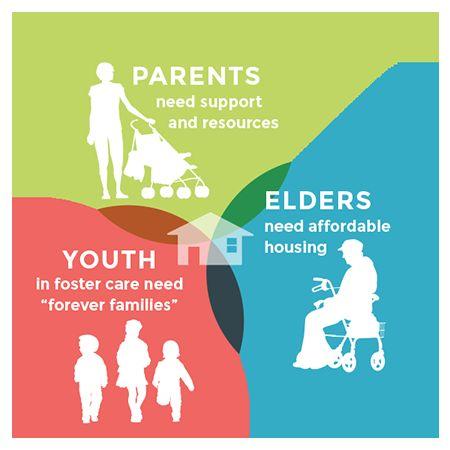





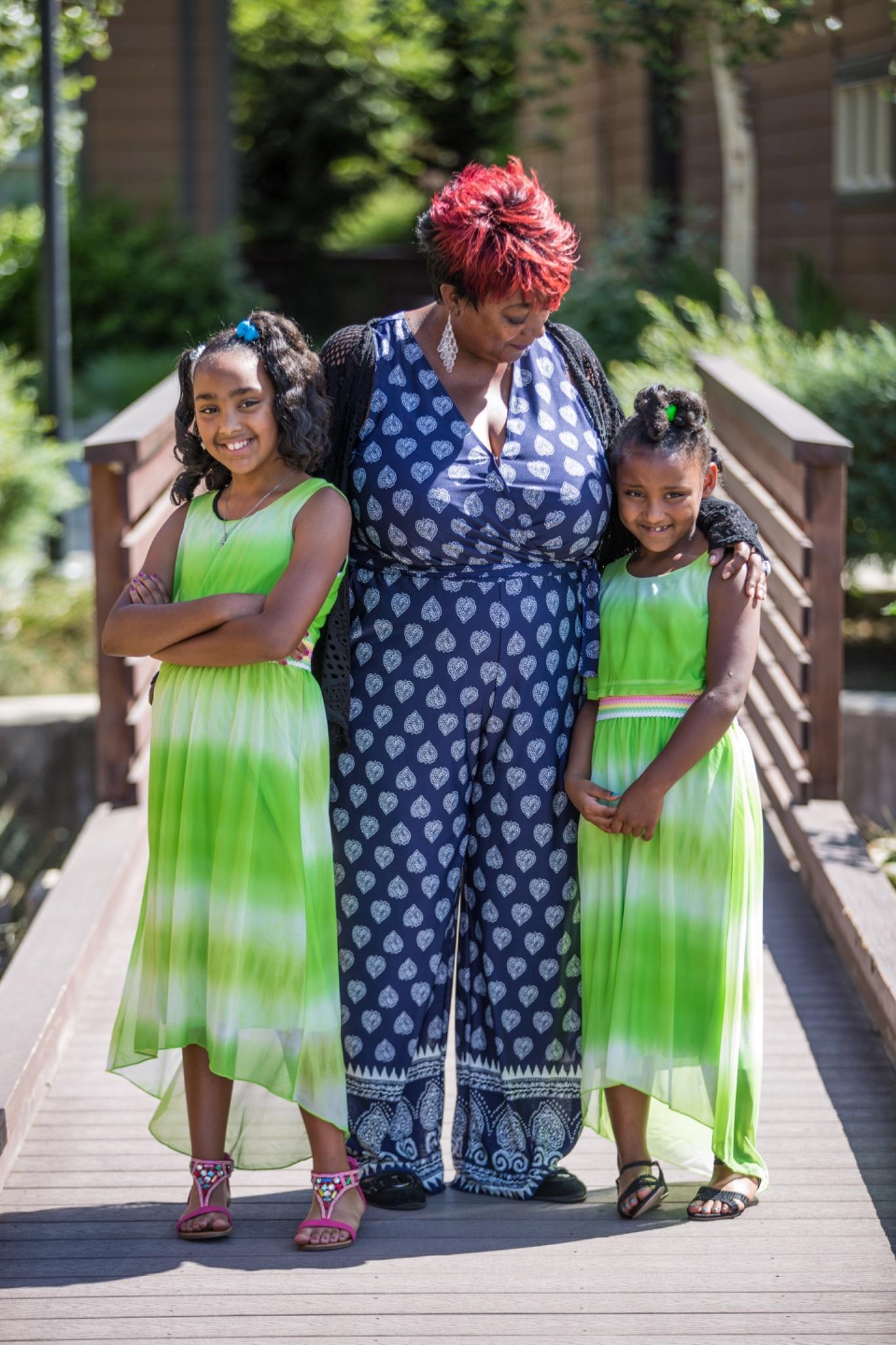
Bridge Meadows, Portland
Bridge Meadows brings three generations of youth, parents/caregivers and ‘elders’ (adults over 55) together – using “community as an intervention” to help children heal from the trauma of foster care and tackle loneliness. High-quality housing ranges from single units to a 10-person household. Shared amenities include garden boxes, a library, multiple community/therapy rooms, a BBQ, a single shared backyard and community-run pantry.

Lots of quirks make the space feel like home, such as an overflowing gratitude and support board, showcased art by residents and a rock garden – a rock for every resident and pet; ”we see pets as our fourth generation!”
Staff deliver individual and group support, skill-building workshops, and trauma-informed activities including parent/elder coffee and chats, bingo and teen hour – involving anything from video games to making slime. Social connection and intergenerational support – particularly around childcare – is the bedrock of this community; “people prioritise taking care of each other”.
Down the road is New Meadows, for young adults who have aged out of the care system, and programmed activities interconnect with Bridge Meadows.
“When young people have human relationships with older people it destigmatises something that happens to us all – ageing.”
Quotesfromstaffandresidents
Swan’s Market, Oakland
Urban cohousing community in a converted market building


Urban Residents have a desire to live in cohousing


Around 33 residents aged 2-85. Two resident children and one teenager, and lots of visiting non-resident children


Move in year: 2000


Market-driven
“If I lived in a senior community it would be depressing. No matter how crazy it can get, having kids around is enlivening and invigorating.”
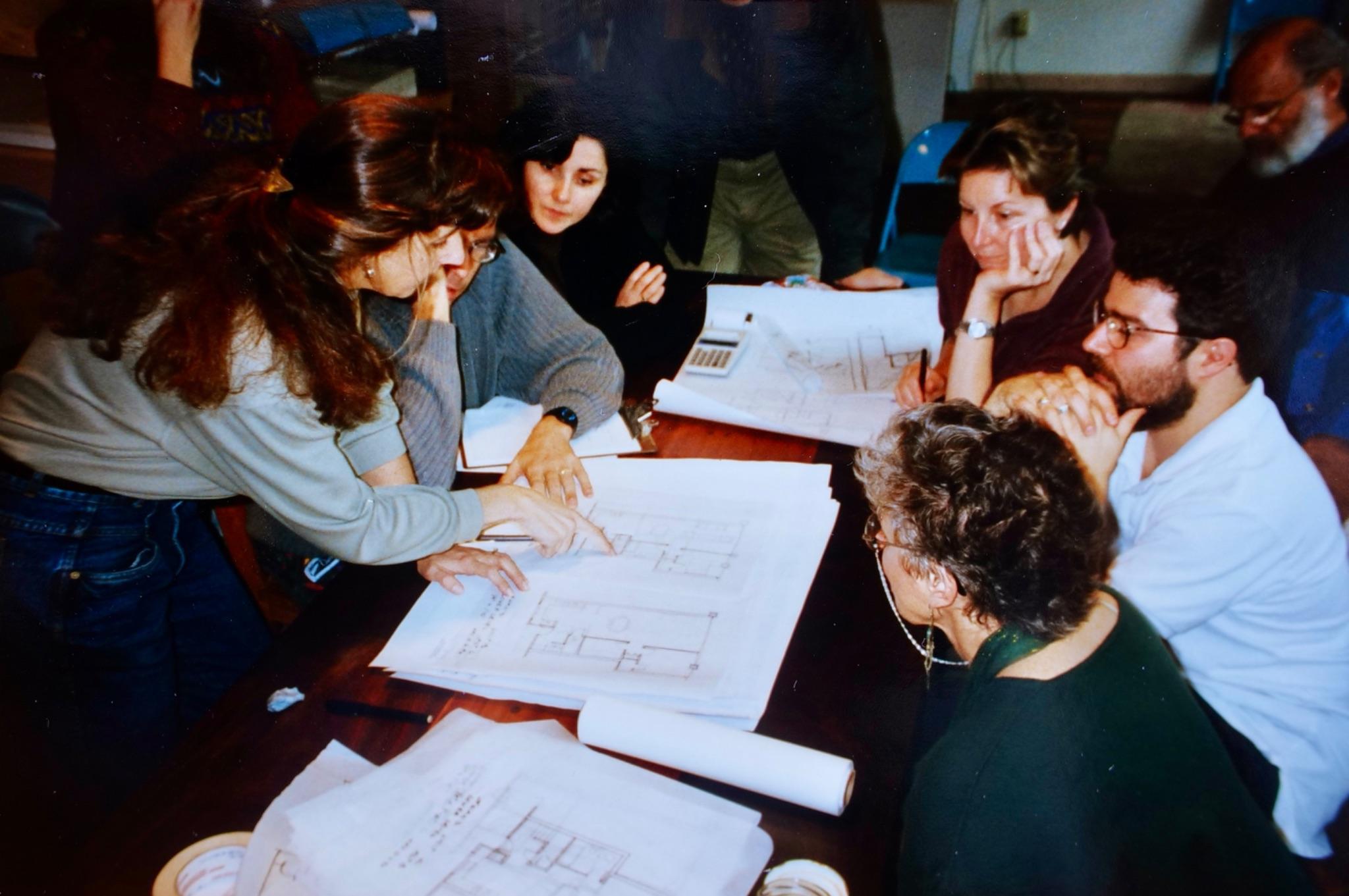
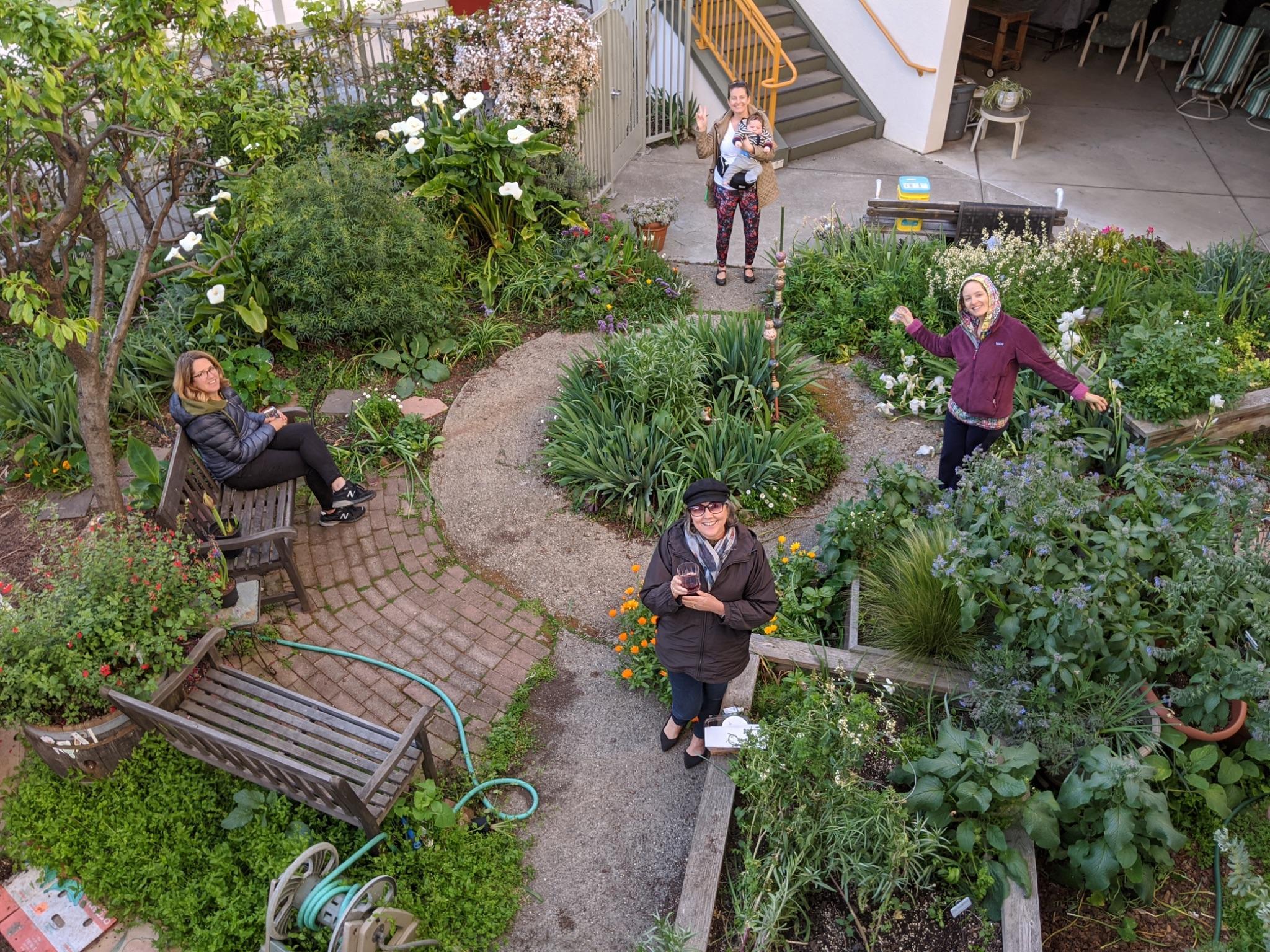

Swan’s Market, Oakland
Swan's Market is a cohousing community of around 20 households – a mixture of single, dual and family occupancy – in a converted historic market building in downtown Oakland. Units face each other and shared facilities include a kids' room, kitchen, exercise room, guest room, and tools workshop.
The community aims for two shared meals a week, cooked by volunteers, and hosts 10 workdays annually. Social events like BBQs and trick-or-treating help people connect, while committees (meeting monthly) and a monthly Homeowners Association meeting after common dinner enables self-governance. All owners are on the board, though some residents are renting their units. Decisions are made by consensus, although the by-laws allow for a vote if consensus cannot be reached.

Challenges which have emerged include differing expectations around closeness and interaction as well as conflict aversion, but an annual retreat with a facilitator helps build trust and cohesion. People frequently lend and borrow resources, and there is a single gas and water meter and shared laundry. “You’re never going to be sharing everything with everyone,” one resident reflected, “but this is a good place. You can depend on every single person. If there’s an emergency, it’ll be taken care of.” There is an informal culture of mutual support, an intentionality about being family-orientated, and desire to attract more parents with children.
“Community is like marriage – you need a sense of humour and a commitment to make it work.”
Quotesfromcurrentresidents
Open Field Coliving, Djaara Country (Castlemaine)
Multiple families and individuals sharing an ecologically sustainable rural home

12 adults and 5 children, aged 0-65
”As new parents, having mutual support on the parenting journey and other children for our child to grow up with is worth more than anything.”




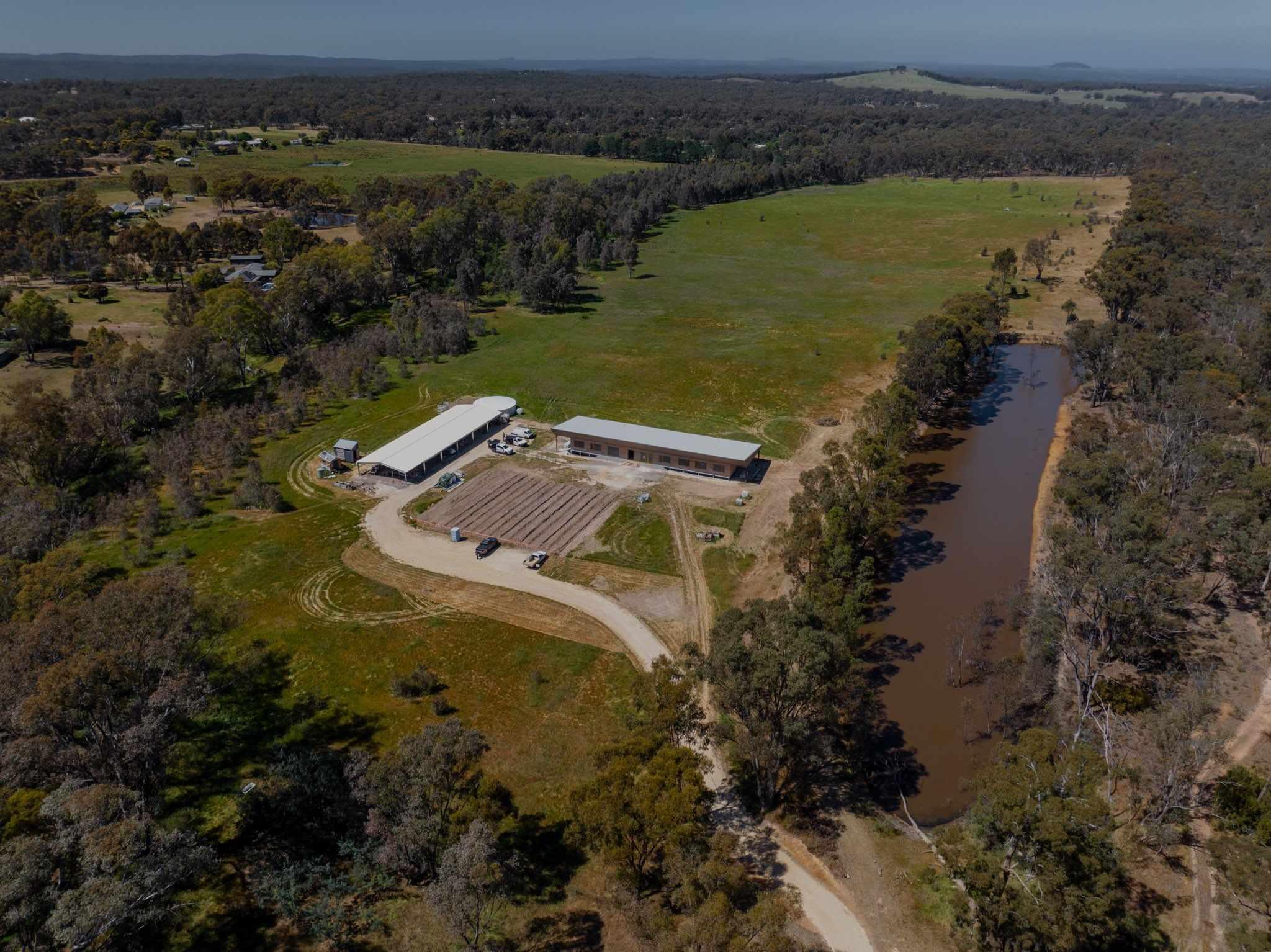
Residents want to live in a close-knit non-nuclear multi-family structure
Rural
Move in year: 2024
Privately financed by two individuals, others “rent from the owners at a reasonable rate”.
“Coming home to hugs from friends and deep chats over a home grown meal is just the richest way to live.”


“Saving money through sharing resources enables us to more effectively put our values around anti-consumerism and climate resilience into practice. It also involves way less housework!”

Open Field Coliving, Djaara Country (Castlemaine)
Born from frustration with isolated, insecure rental housing, Open Field Coliving Homestead is a single home – on 10 acres of land – built by a couple to offer sustainable, socially connected living beyond the nuclear family model. Despite one family currently owning the home, there is a shared commitment to managing the household collaboratively, with long-term goals for joint ownership. The chemical-free, near-zero-energy home features permaculture systems, regenerative agriculture, and off-grid water and waste.
Residents share a kitchen, pantry, bathrooms, study, a multi-purpose space and tiny house in the garden to host guests. A household kitty supports shared food, bulk buying, and investment in the garden and infrastructure. Sound-insulated bedrooms and lockers support privacy and reduced clutter, with personal touches adding to the sense of belonging, like a gratitude wall.
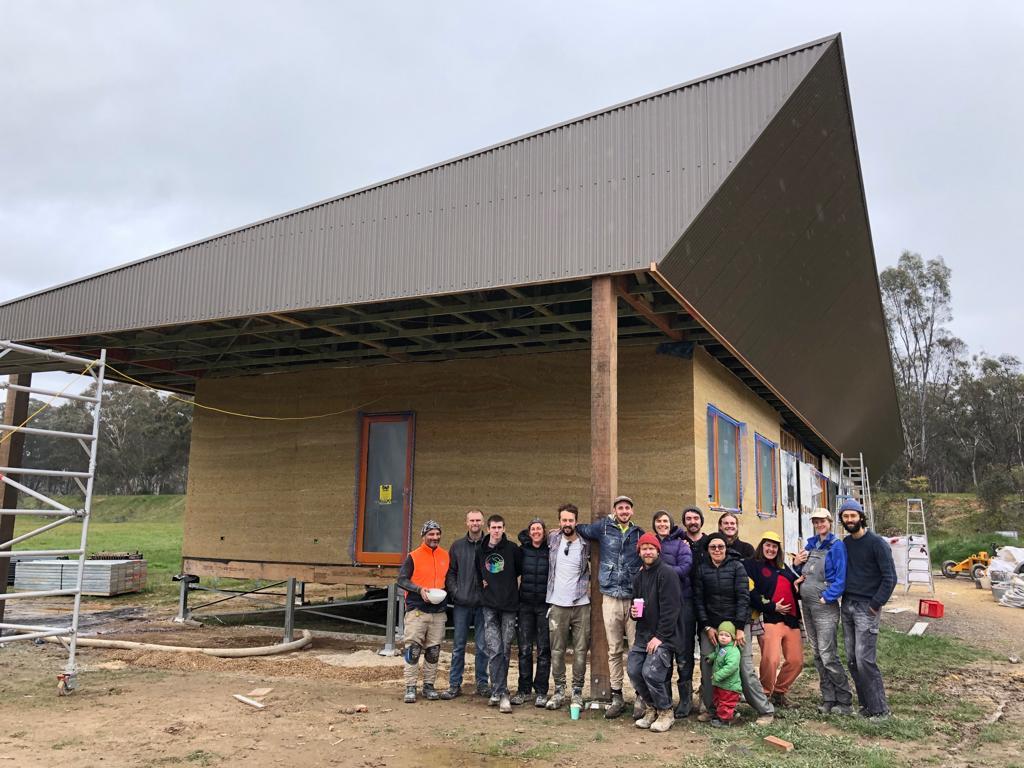
Community life is structured around fortnightly working bees, shared dinners multiple times a week, and taking turns with school runs and childcare. Decision-making happens through weekly meetings with rotating facilitators, and committees are empowered to act within agreed budgets. New members apply and can join if there is resident consensus, with participation expectations made clear upfront. The community have found ‘Compassionate Communication’ and facilitated conversations useful tools for conflict management.
“There’s a lot of intentional sweetness and kindness here – I get shivers thinking about it.”
Photo credit: Nicola Beatrix
Wild Sage & Silver Sage Village, Boulder
Silver Sage Village and Wild Sage are two adjacent cohousing communities, integrating ageing and intergenerational living within a single development

Wild Sage has 34 townhomes, while Silver Sage has 16 units made up of flats, duplexes and townhomes. At Wild Sage residents are aged 0–92





Mixed income. Residents at Silver Sage are seniors, while Wild Sage is intergenerational

Move in year: WS 2004, SS 2007

Suburban
“The goal is to generate a better, more delightful life, to share resources, and to live in a way that is more fulfilling and fun.”
At both, 40% of units are affordable through City of Boulder income and deed restricted.

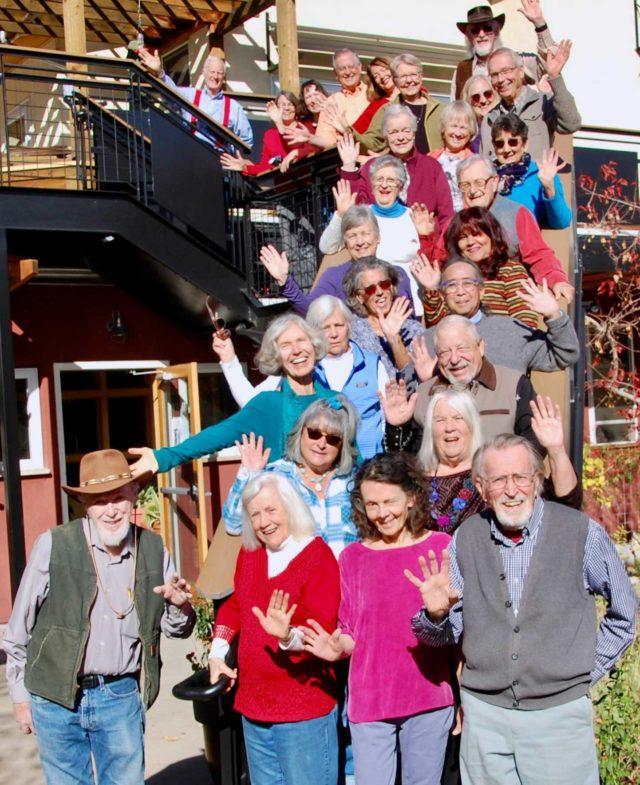
Wild Sage & Silver Sage Village, Boulder
Silver Sage Village and Wild Sage are two cohousing communities across the street from one another, integrating ageing and intergenerational living. They were created, designed and built separately, though the developer was the same person.
Silver Sage is a mixed-income senior cohousing community, offering a buddy system for mutual aid while maintaining independent living. Wild Sage, also mixed-income, is intergenerational, home to family-friendly design including a climbing wall and a playroom which is visible from the Common House dining room to allow for simultaneous supervision and connection amongst adults.
Both communities host shared meals, workdays, and events to encourage social connection – and have amenities such as a large shared kitchen, vegetable gardens, a jacuzzi, home cinema and tool sharing. They run some joint events, such as Halloween celebrations, but largely maintain parallel programming.
Some residents have moved from Wild Sage to Silver Sage as they have aged, noting that parents and elders often different schedules, preferences and pacing, as well as expectations around noise.
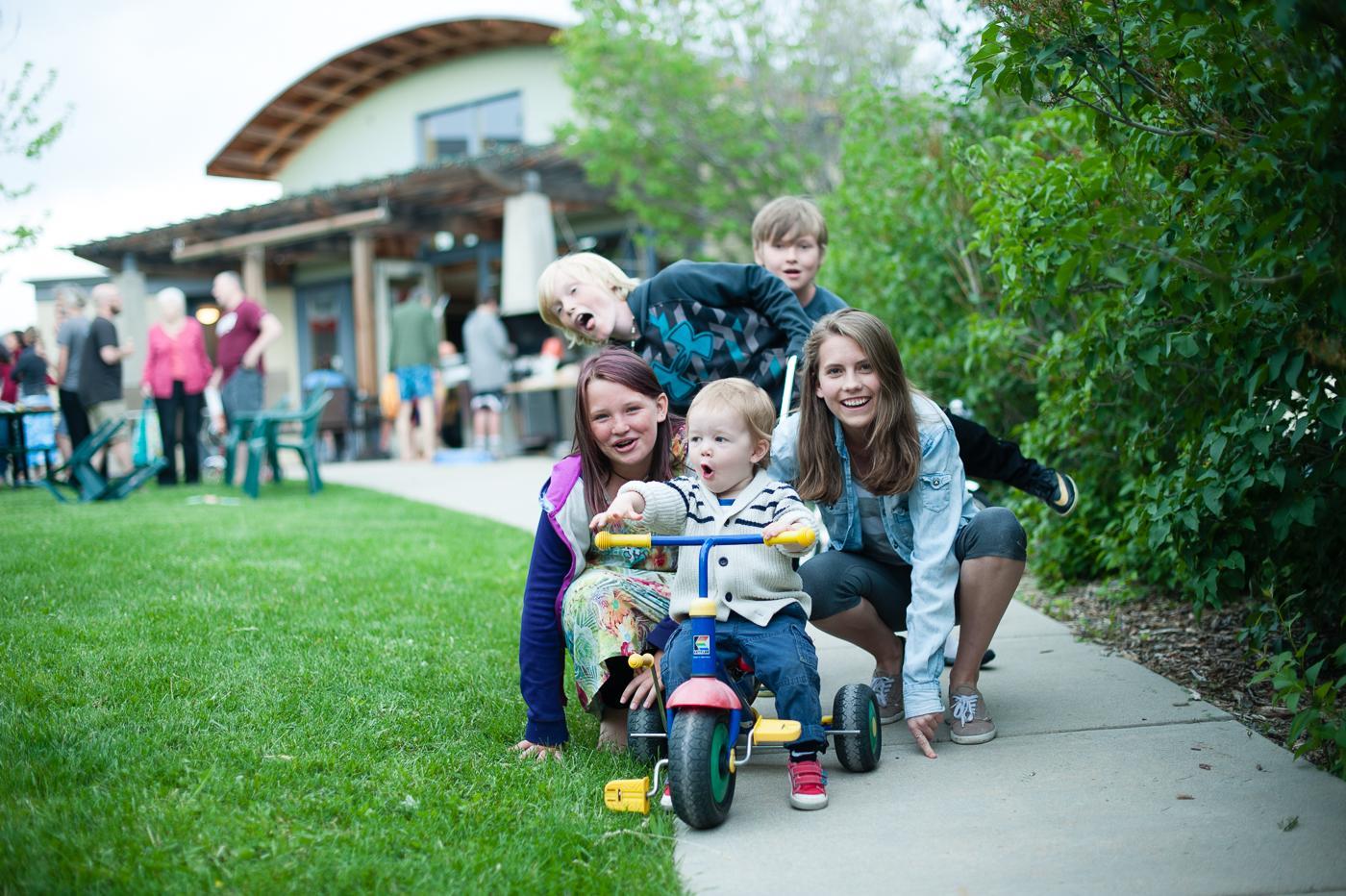
“Whether we call ourselves empty-nesters, active adults, near-seniors, or simply human beings in our later years, community is more important than ever… neighbours become friends, amenities are close at hand and you can live your best life.”
Quotesarefromcurrentresidents.
Moora Moora, Mt Toolebewong on Wurundjeri country
A spacious rural cooperative, living together intentionally since 1974

Around 50 residents including children




Residents are living intentionally together, often driven by environmental sustainability
Rural
Move in year: 1974
The land is owned in common.
Members purchase their individual homes, and non-members can rent. A key benefit is the potential for vendor financing offered by sellers to member buyers (instead of the buyer needing to secure a traditional mortgage from a bank or other financial institution). The restricted market and the absence of separate property titles contribute to affordability.
”Even a 10-minute conversation makes me lighter. People are 100% less isolated than they would be – some might retreat, but people will check on them, knock on their door, offer tea…”
“Being unselfish and generous with time and emotions is not the norm in society – but here the norm is much more fulfilling. There’s less focus on the material, but instead on the here and now, being with your friends”.


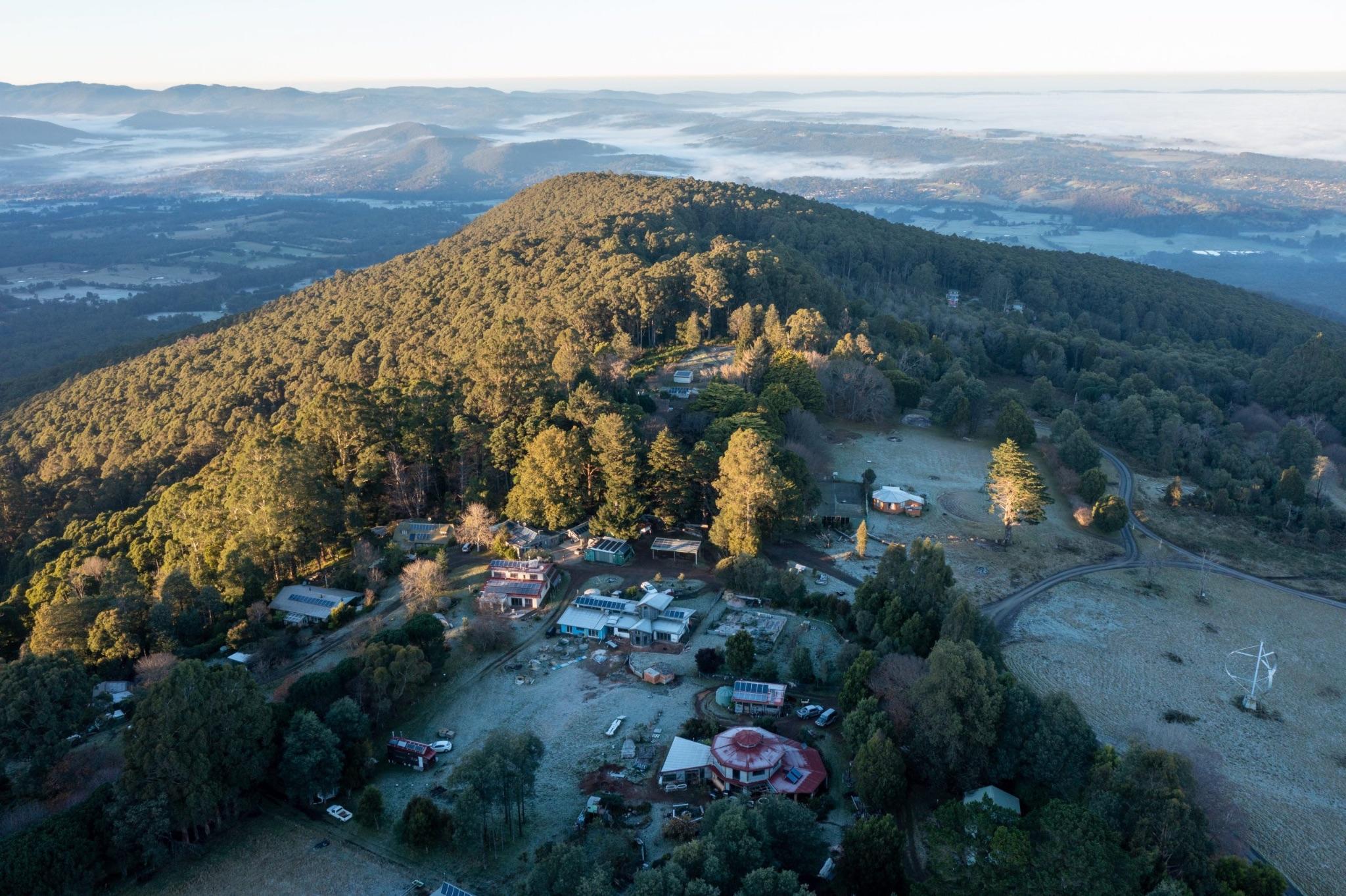

Quotesfromcurrentresidents
Moora Moora, Mt Toolebewong on Wurundjeri country
Nestled atop Mount Toolebewong, the rural Moora Moora community – created during the ‘Back to the Earth’ movement of the 1960s/1970s – spans 245 hectares comprising six residential clusters each with slightly different structures and levels of interaction; “people tend to be loyal, social and collaborative in their clusters”. The community is grounded in ecological values, being entirely solar-powered and hosting educational initiatives through its Learning Centre.
Governance is managed by an elected, rotating Board of Directors, supported by various committees. Residents are encouraged to contribute at least 60 hours annually to communal tasks. Decision-making strives for consensus, resorting to majority votes when necessary.
Social cohesion is enriched through monthly meetings, shared meals, open mic nights, and collaborative gardening; one resident notes that “the size means that if people disengage in community life there is enough of us to carry along”. If needed, two members who have had mediation training can assist in conflict resolution. A dedicated “reach out” committee promotes inclusivity; “we recognise people need personal space, but make sure they feel welcome, especially if they have had a tough experience like a breakup or illness”.



Quotesfromcurrentresidents
Anita May Rosenstein Campus, Los Angeles


Separate youth and senior centres on a shared campus for LGBT+ people with experience of homelessness





300+ residents (117 youth housing, 200 senior).
Youth is 18-24, senior is 55+
LGBT+ low-income seniors and youth
Urban Move in year: 2019
Partially government funded, 10% from individual donors, and some funding from grants.



“So often the biggest failure is treating isolated things –housing, mental health, food insecurity. But these things are intuitively tied to one another. Looking holistically at health and wellness allows this to work.”
“People come because they want community. You can see the innate benefit of connection a million times over through friendship, camaraderie, support.”
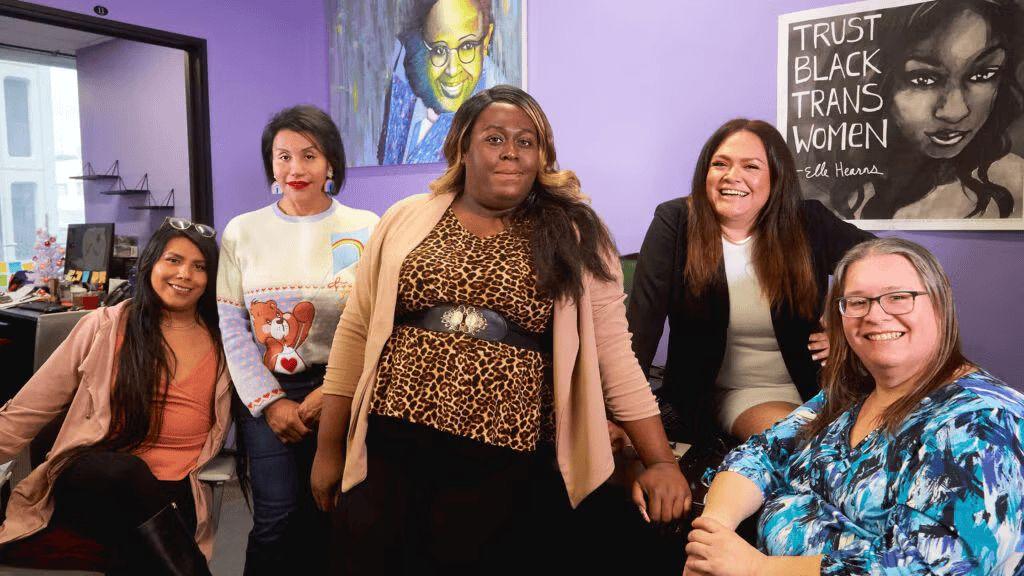

Anita May Rosenstein Campus, Los Angeles
Run by the Los Angeles LGBT Centre, this Campus offers housing and wraparound care –including skills and job support for both LGBTQ+ young people (18–24) and low-income seniors (55+). While housing is age-specific, the campus’ intergenerational programmes include, for example, a particularly successful culinary job training course and five annual celebratory events including a Black History celebration: “that’s when you see people aged 16-95 getting down on the dancefloor, side-by-side, organically”.
For young people – most of whom arrive at 18 as foster care support ends – there is a progression from emergency beds, to micro-apartments, to a longer-term living programme, and permanent microhousing. Government money given to the Centre is put into savings for young people to support with a house deposit. They have access to a broad range of activity spaces such as a computer lab and music studio and “peer supporters are often joining in”. For seniors there are 200+ permanent units and more than 100 social events a year; “the single biggest issue facing our seniors is social isolation”.
“It can sound more idyllic than it is in practice; people here have faced a monstrous about of abuse – especially from institutions – and it’s tricky to get young people to participate in rigid programing. So codesign is vital. Even if you repeat something that’s been successful, it won’t be as successful again unless you’ve gone to them and asked for involvement.”
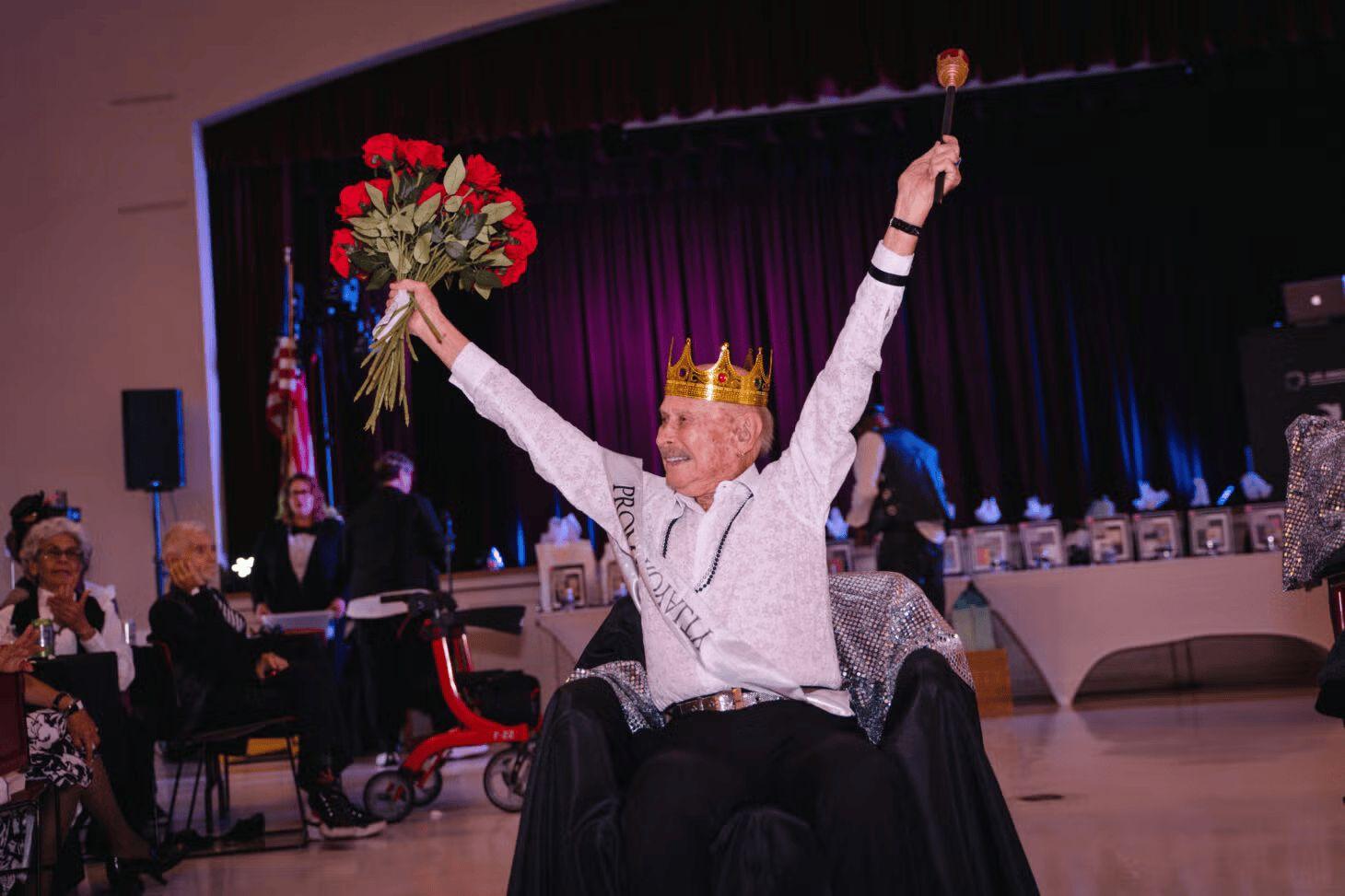
“We provide people with life changing and saving experiences because the wraparound model of support reduces barriers to care.”
Quotefromstaffmember
Urban Coup, Naarm (Melbourne)
Urban Coup is a multi-storey cohousing block, situated within Nightingale Village which comprises of six neighbouring buildings designed with an emphasis on social, environmental and financial sustainability

Urban

Both buying and rentals are on the private market. In Nightingale Village some of the buildings are 20% rented social housing, owned by a Housing Association.

Urban Coup has around 50 residents aged 5-81

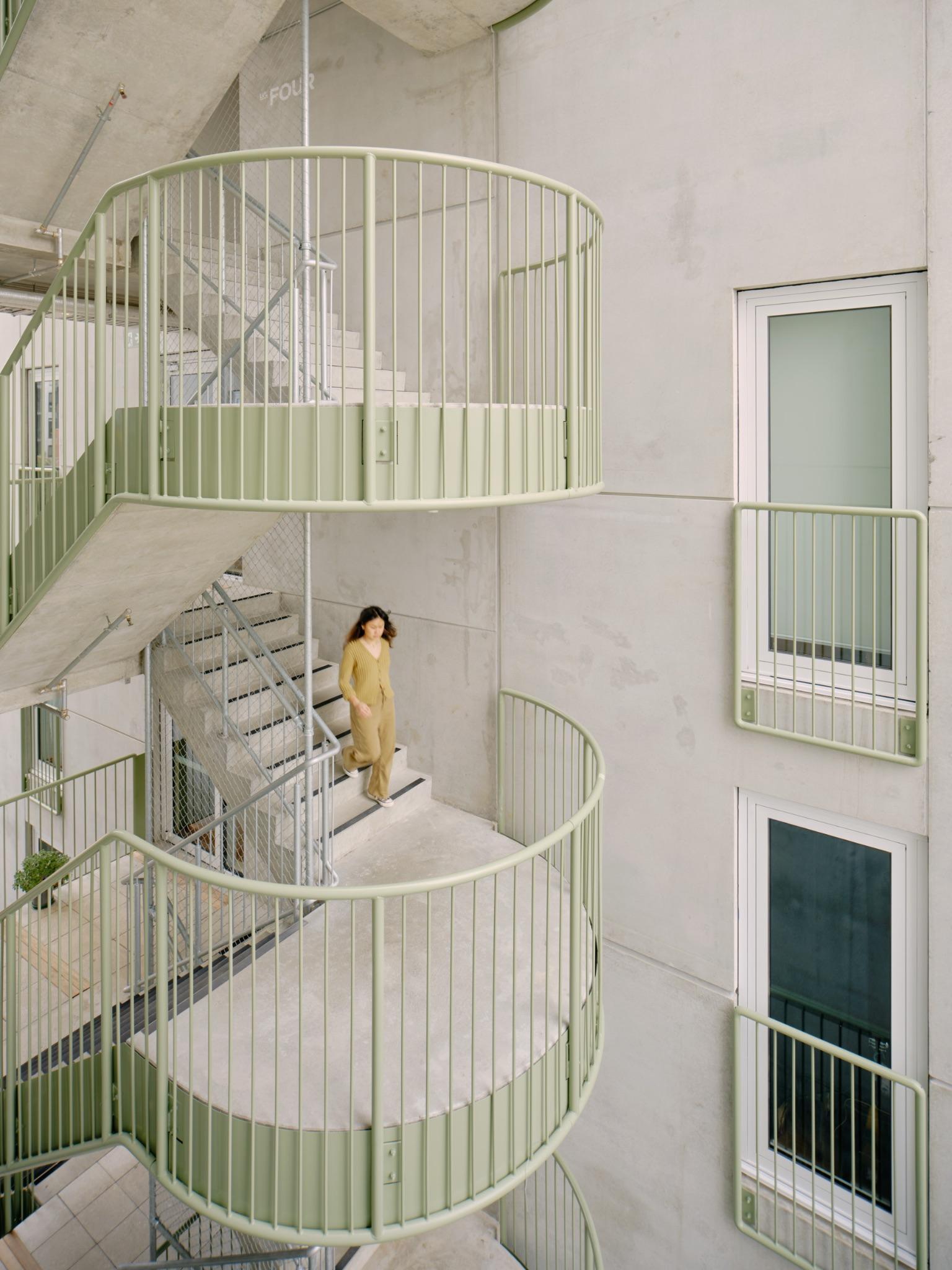
Unlike the rest of the buildings within Nightingale Village, Urban Coup is an intentional community; residents have chosen to put time into self-governance processes.

Move in year: 2022
“I’ve been on my own for a very long time. Cohousing
just made sense… having people around me.”



Urban Coup, Naarm (Melbourne)
Urban Coup is a cohousing community, the first multi-storey, owner-designed, such building. Urban Coup is the only cohousing community within the Nightingale Village: six neighbouring buildings designed with social, environmental and financial sustainability principles, connected through means such as a shared Facebook page, a park and occasional events.
Urban Coup is an apartment block with outdoor and indoor common spaces. Mutual support is common, for instance child-minding, grocery shopping and watering each other’s balcony gardens. Some floors have more social interaction than others.
Social integration is supported through architectural features such as the shared laundry, meeting enclaves along the staircase, and lots of vegetation – made possible through irrigated materials – which attracts people to host and enjoy social events.

Residents put time into their self-governance processes which are based on a sociocratic model. Although there is no mandatory time contribution requirement, and cleaning and basic maintenance are externally contracted, some members do volunteer a lot of time, for instance cooking two weekly meals (people pay through a community currency), forming a Community Care Group to look out for one another, and hosting intergenerational events such as games nights, clothes swaps, morning yoga and craft.
“We’ve got privacy, and we’ve also got connection… There are spaces where we can have formal and informal gatherings… There’s no other building in the inner city that has been designed like this.”
Quotesandphotosfromwebsite
Fair Oaks EcoHousing
Self-governed, pedestrian, ecologically sustainable, intergenerational village

“Those 30-minute breaks for me as a single mum when my 6-year-old scoots off to see someone else means everything.”





Around 45 residents, including 6 children




Residents have chosen to live at FOEH to live a more connected life
Suburban
“I can see my friends here every day if I want. I never have to worry about finding a dog sitter or someone to water my yard.”
Move in year: 2020
Homes are market rate, but in at least one case, three households chipped in on the purchase to be equity partners.

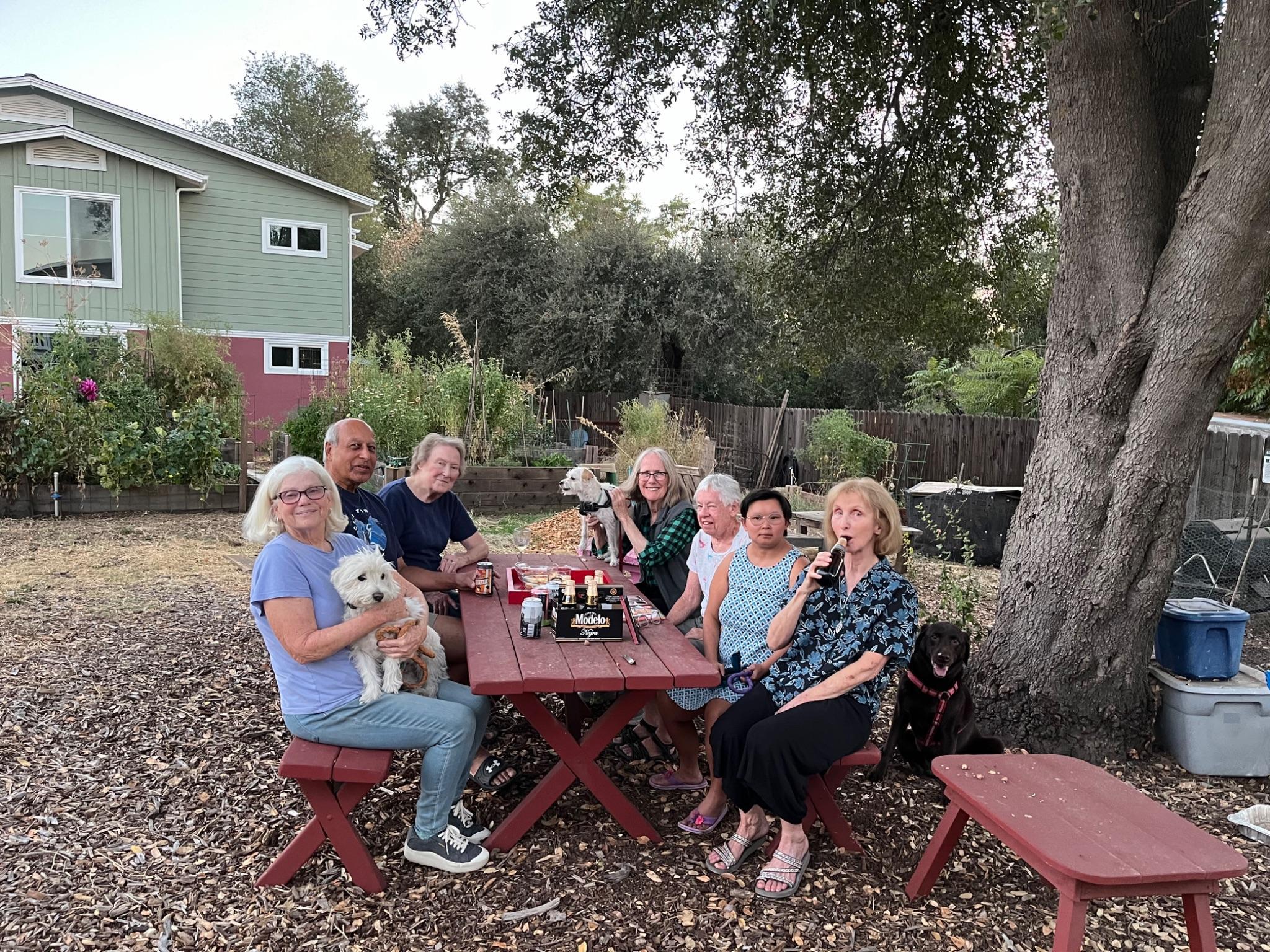
Fair Oaks EcoHousing
Fair Oaks EcoHousing is a relatively new intentional community built around shared values of sustainability, cooperation, and connection. Governance is managed through multiple committees and regular general meetings, with every resident expected to contribute. Homes are colourful, and there is lots of outdoor space where “a lot of life happens”. The common house hosts weekly shared meals ($5 per head), monthly potlucks, tai chi classes and celebrations. Design features – garages clustered away from homes and a common house in the middle – are intended to increase connection. However, some residents reported concerns about the walk from garages to homes making it difficult to transport things, and a central common house bisecting the community. Residents are navigating what one called “teething problems,” including differing views on contributions, governance, noise, parenting styles, and personality clashes. ‘Sharing circles’ have become a valued space to ensure people feel heard and tension can dissipate.
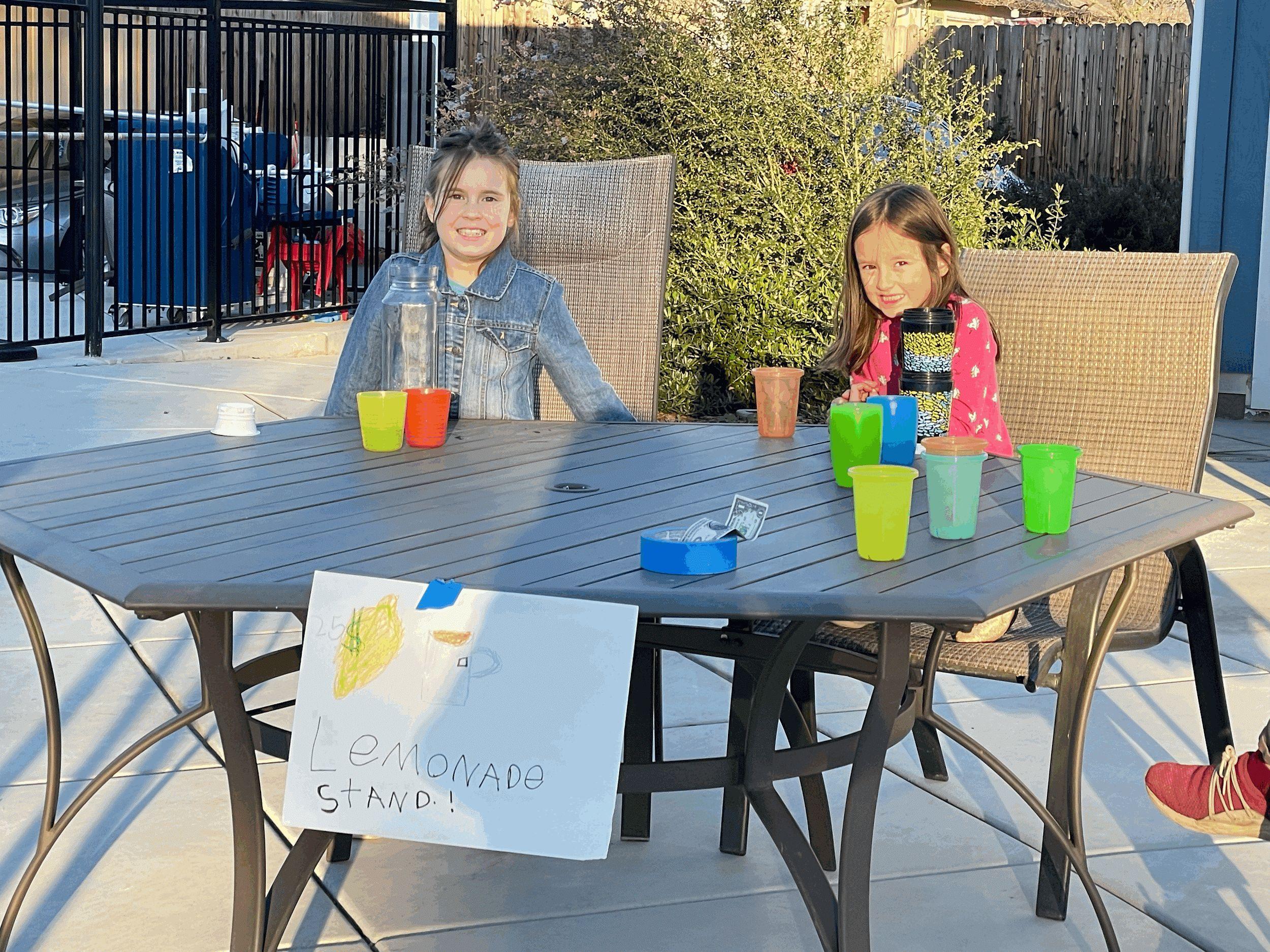
The cost of buying a unit means most residents are older adults, though one family’s unit was subsidised through co-ownership to encourage more intergenerational membership. In one instance, a renter and owner homeshare. Children are cherished here; one resident shared, “Everybody loves kids. The whole community is in love with the baby.” Communal life offers informal childcare, giving parents support and children a sense of freedom and responsibility: “It’s amazing for kids… they learn how to knock on doors, talk to adults, do jobs.”
“The 4-year-old told her 6-year-old sister that they needed to get home. The 6-year-old said ‘Are you kidding? There are 29 other households here that would be happy to look after us!’”
Quotesfromcurrentresidents
Canticle Farm, Oakland
Urban farm hosting a diverse range of people committed to social justice and intentional communal living


Urban Residents are activists and people who have been systematically discriminated against

Around 40 residents in 11 houses, aged 0-79


“For me it’s about daily interaction. If I’m bored or lonely I’ll sit outside and chat to someone. If I need support, I can ask. People here are coming from a good place –they care.”
Move in year: 2010
Gift economy, funded through grants and support of individual donors





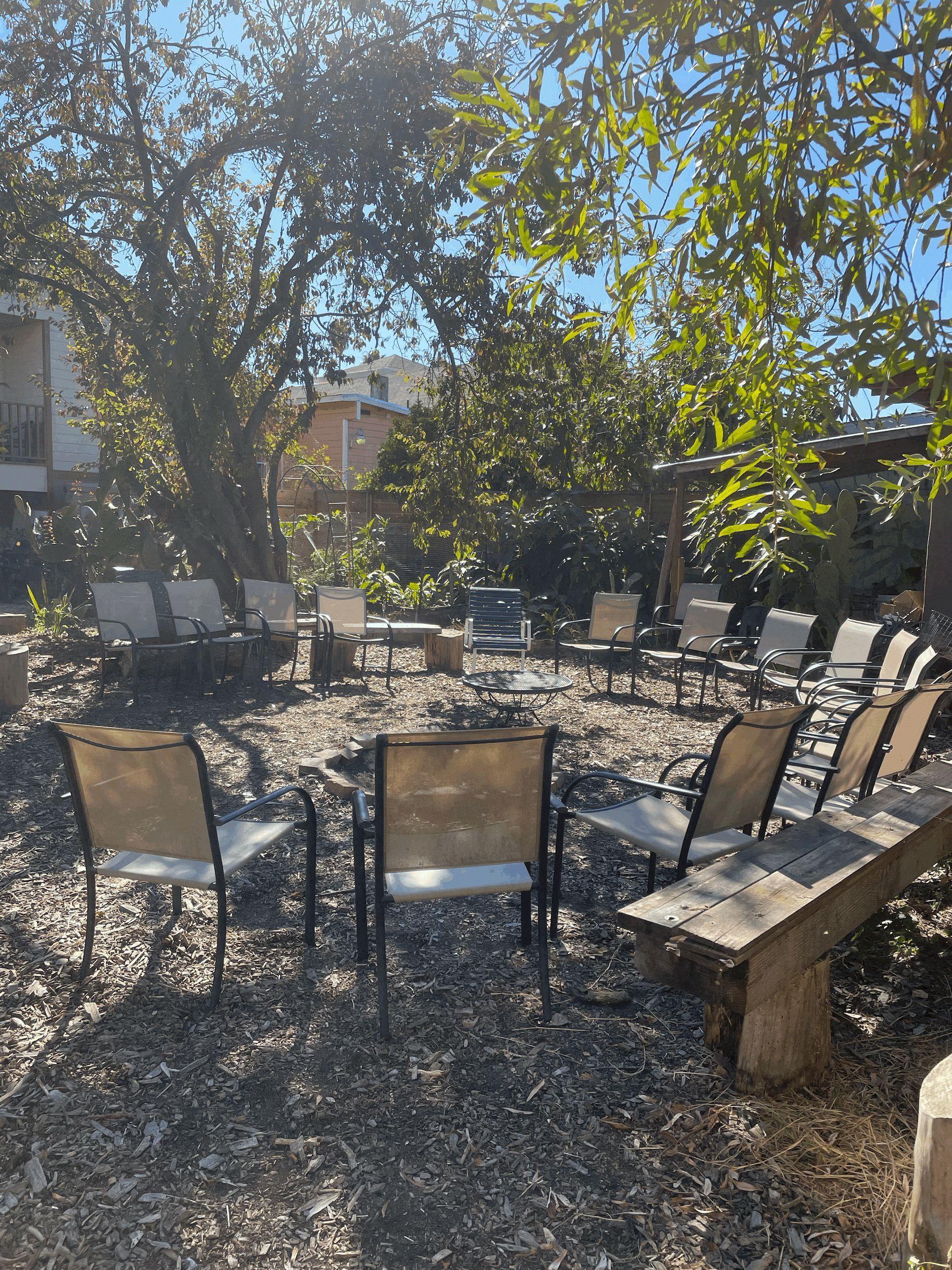
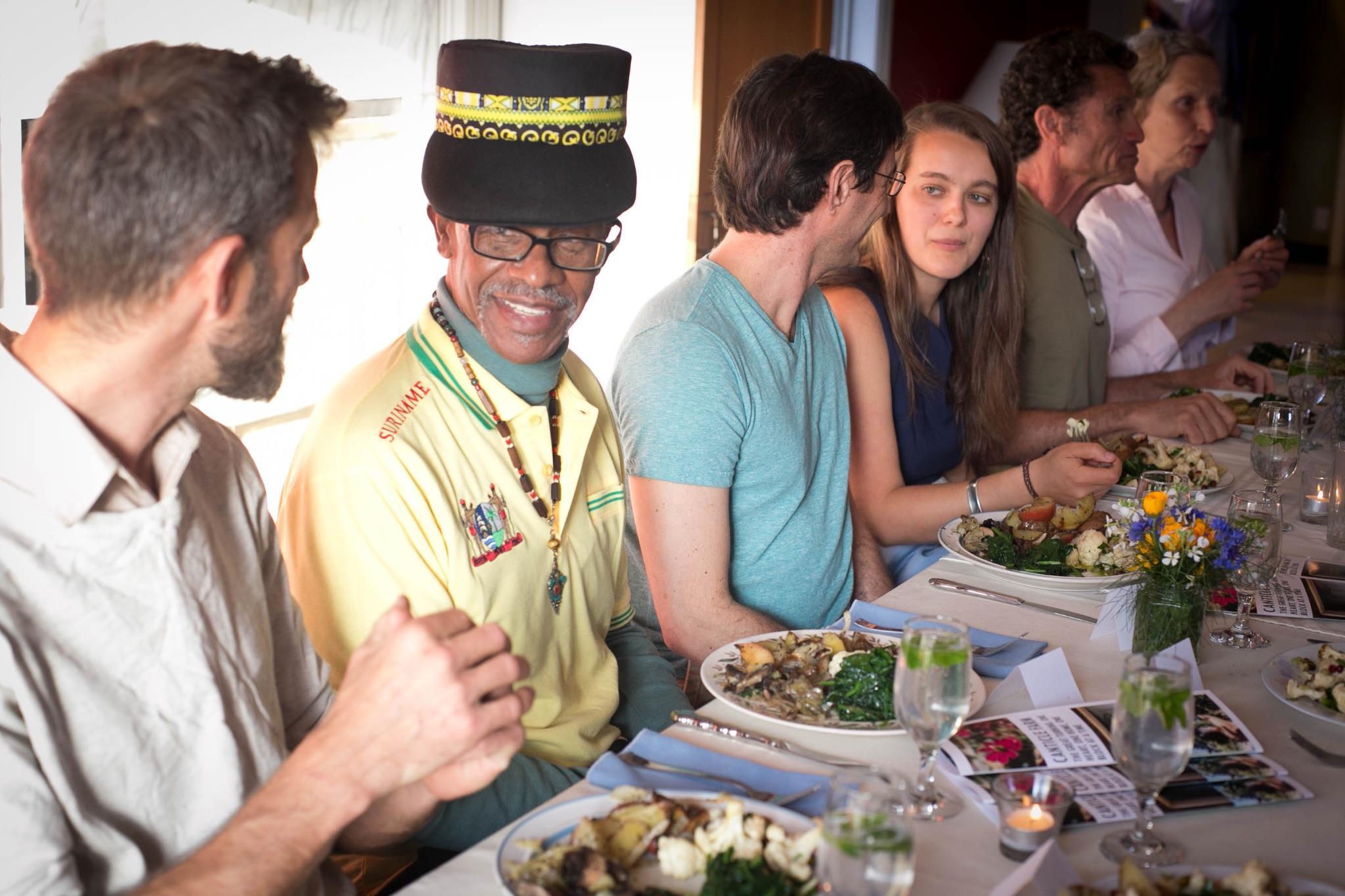
Canticle Farm, Oakland
Canticle Farm provides a secure, affordable and social home for activists working on a range of issues – such as racial equality and global warming – as well as people who have faced systemic discrimination. Canticle Farm is funded through a range of grants and uses Gift Economy, taking donations not rent.
Amongst the 11 mission-based houses on the urban farm, one is reserved for Black men leaving incarceration while another is for ancestors of indigenous people. As well as outside meeting points and vegetable gardens, there is a common kitchen and common room used for events such as weekly meals, creative writing and workshops.
Developing strong relationships and working through interpersonal conflict is Canticle Farm’s cornerstone. Their restorative justice room is made from glass, so people can see others “walking toward conflict rather than away from it”. Canticle Farm is working to heal divides across, for instance, race, gender, and class. This community is intentionally diverse in these areas, as well as intergenerational and interspiritual. There is a well-attended weekly community liturgy, as well as a weekly meditation practice. Several bodies of philosophy and practice inform Canticle culture including the Work That Reconnects (Joanna Macy), Franciscan spirituality, Nonviolence, Restorative Justice and decolonising, and trauma transformation work.

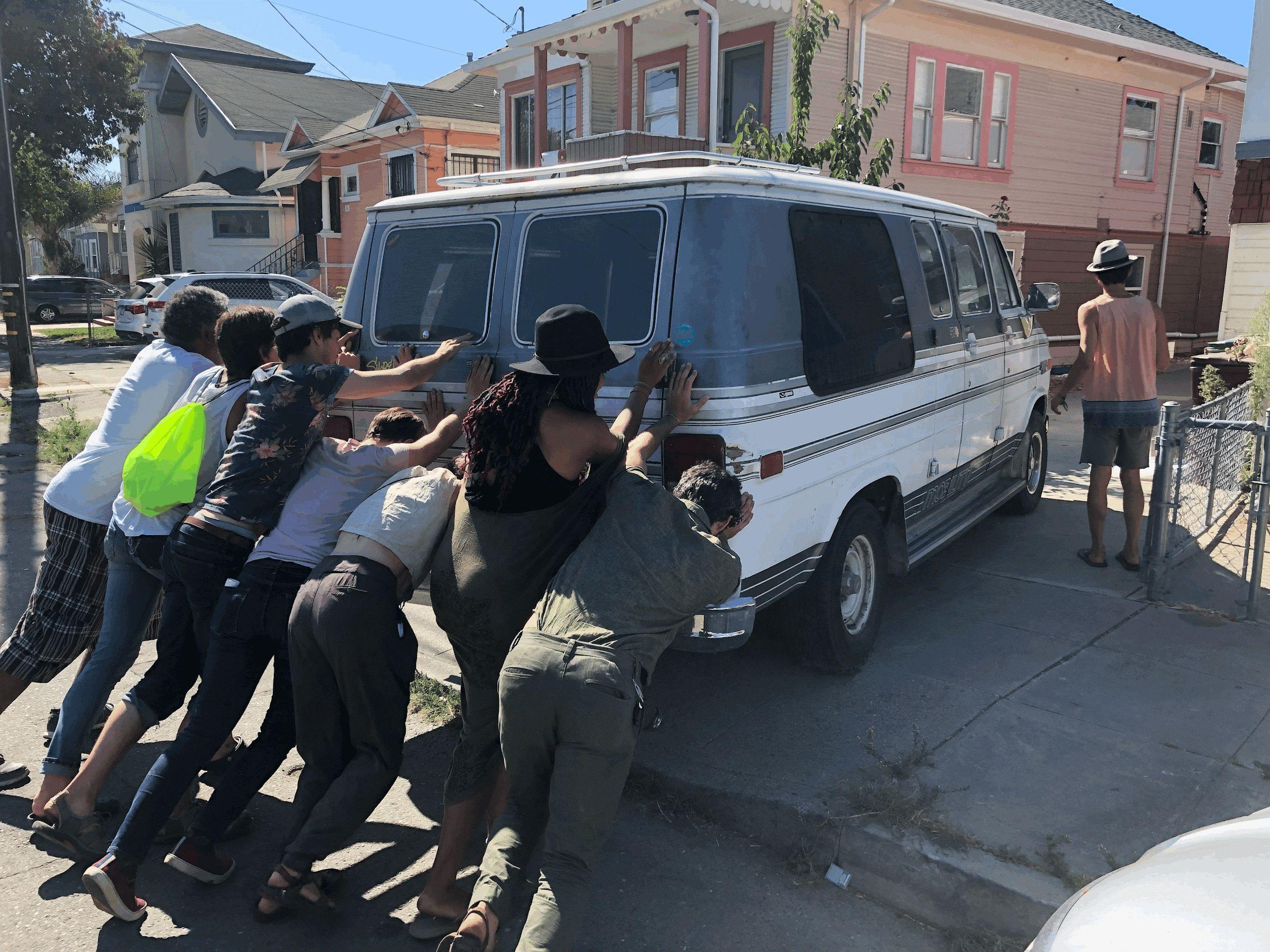
Goodness Village, Livermore
A staffed village of tiny homes for people who have been chronically unhoused

28 neighbours aged 30-80


“Goodness Village changed my life, and all of us here… Others would be blessed to have the same chance to start over.”



Suburban 28 single-occupancy tiny homes
Move in year: 2021
The non-profit leases the land from a church. Funds come from a mix of government grants, local businesses and community members. Neighbours pay 30% of their income or commit to community work hours.




“Cameras face out not in – this is their sanctuary."

QuotesfromtheExecutiveDirectorandacurrentvillager
Nina Pomeroy Photography
Staff and neighbours – Will Bennett Photography
Courtesy of Goodness Village
Goodness Tiny Homes Village, Livermore
Goodness Village provides affordable and permanent homes to the chronically unhoused, prioritising a culture of trust; “being a neighbour takes time but the pay-off is immense. We see villagers transitioning from fight and flight, to permission to play and set future goals.” One said they particularly “enjoy helping [their] neighbours and talking to them”. Wraparound support is provided through two permanent staff, rotating nurses and volunteers such as an optician, nutritionist, doctors and a massage therapist.
Shared spaces include a community centre with a washer and dryer, firepit and event barn. Frequent but non-mandatory activities include: s’mores nights, dinners twice a week, coffee and fishing groups off-site, as well as moments of celebration and recognition such as the Star Award, birthdays and a grand Thanksgiving dinner where local volunteers serve villagers food. Villagers “love connecting with the local kids through the church”.
Mutual caretaking shows up in many ways such as cooking for one another, walking pets, sharing grocery runs and parental roles forming across generations. “Navigating shared spaces mean arguments do not last long.” Residents can contribute through paid roles, such as an ex-military villager who has taken on security duties.

“Without the community aspect, maybe 1/8 of villagers would still be here.”
QuotesfromtheExecutiveDirector
Nina Pomeroy Photography
Berkeley Cohousing
A social cohousing community of 15 units – mainly cottages and duplexes – scattered around a green


Around 30 residents in 15 households
Diverse range of people interested in living in an ecologically sustainable and socially connected way



Urban
Move in year: 1900
Limited equity arrangement with the city restricts price appreciation to area median income growth plus capital improvement, for 30 years from each resale; buyers have to earn less than 120% or 150% of area median income. Prices are about 50% below market and turnover is low, with resale every 8-10 years.



“There’s a flexibility in community that lends itself to matching needs, skills and support.”
“Community space gives us a launchpad to do other things, whether it be a baby shower or political activism.”
Photo credit: Saikley architects
Berkeley Cohousing
Berkeley Cohousing is a long-standing, low turnover community with a diverse range of ages, gender identities and family structures. Residents have been known to move units within the community, accommodating changing family sizes or accessibility needs.
There are strong intergenerational bonds, shared childcare fosters deep bonds among parents, and regular social rituals such as shared dinners (three times a week), skill-sharing, art nights, and singing events act as social glue. The physical layout encourages bump-ins, with parking at the edges and communal paths. Close ties were particularly appreciated during the Covid-19 pandemic; one resident said “there wasn’t the sense of isolation some people had. Your neighbours were right nearby”. Participation is lightly structured: members are expected to contribute to committees, cooking, and cleaning, and decisions are made by consensus with time limits and elements of sociocracy.
Residents offer one another support such as car lifts, and describe remarkable end-of-life experiences, with teams organised to support dying residents; “we support each other through the good and bad.” The community is outward-facing too, hosting activist events and even removing a fence to welcome in a neighbour.
Some Berkeley Cohousing members occasionally rent out spaces in their homes, or entire units.

Photo credit: FLICKR/COMPLICATED
HiFi Collective, Los Angeles
A social supported housing community – in a single five-storey building – for people who need stable housing and struggle with chronic physical and mental health issues

64 residents in single units aged 27+




Individuals with experience of homelessness
Urban
Move in year: 2022
Rental subsidy is provided by the Housing Authority of the City of Los Angeles and all residents receive wraparound services thanks to funding from the LA County Department of Health Services and No Place Like Home funding.
“It’s a blessing, everybody respects each other, there’s always someone to talk to, my neighbours are good people. The last place had so much animosity.”
“All it takes is for one resident to come to the social space, and somehow others just know and they come and join.”



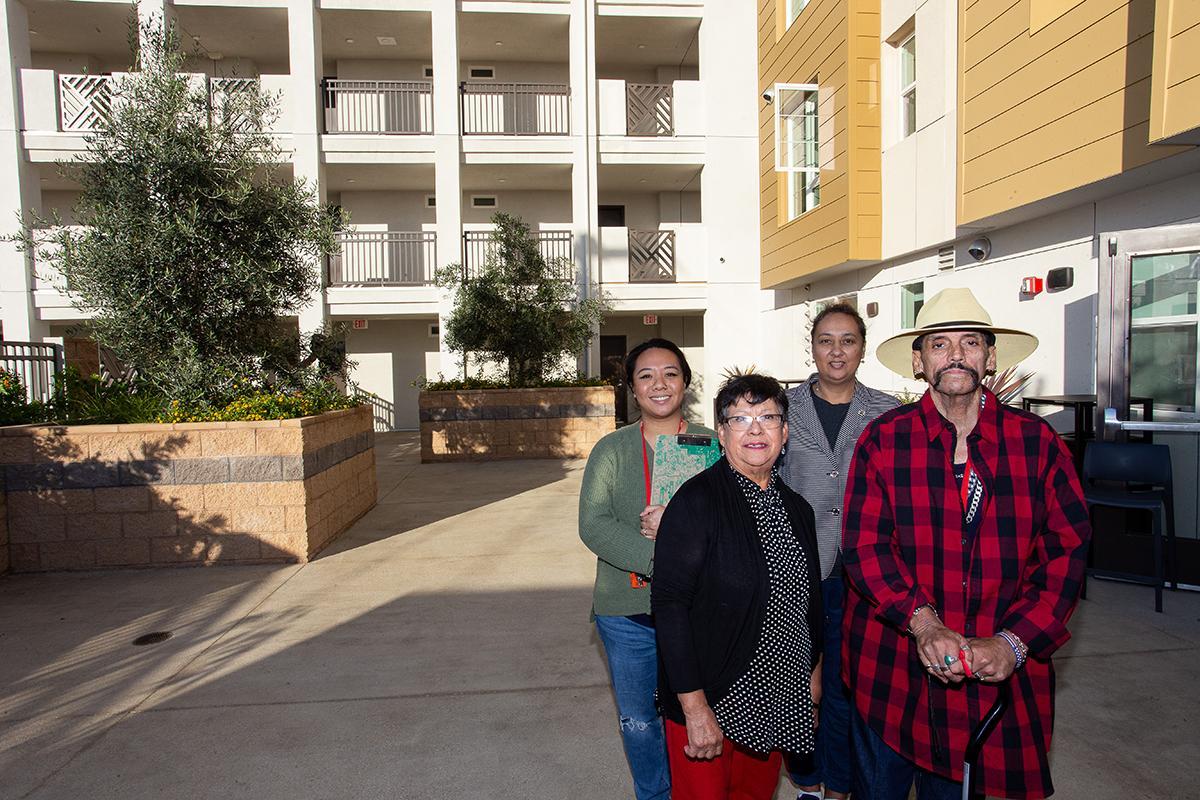
HiFi Collective, Los Angeles
Linc Housing partnered with Search to Involve Pilipino Americans (SIPA) to create an inclusive, supportive, permanent housing community rooted in Housing First principles. Located above SIPA’s headquarters in LA, residents have their own unit and kitchen but share a computer lab, communal kitchen, and meeting rooms for supportive services with visiting health professionals. The community is richly diverse, accepting anyone homeless, and activities such as volunteering – for instance decorating – are particularly useful for more introverted residents to casually interact with one another. Bi-weekly produce deliveries are a key moment for connection; “food brings everyone together”. Intentional conversations take place with newcomers about what it means to be neighbourly, and there is “zero tolerance for disrespect”. When settling in, residents are asked about their triggers and what support they need to feel at home.
Intentional community-building is central. At community meetings, residents make joint decisions and air grievances. Regular rituals — like birthday celebrations, monthly cooking demos, and daily coffee mornings — are key for cultivating long-lasting belonging. Organic intergenerational reciprocity thrives, for instance younger neighbours teaching older residents about tech and elders giving parental-like support and advice. Natural partnerships emerge, such as a neighbour paying for groceries whilst another cooks, and one young Transgender resident’s close bond with an older Catholic resident; they originally had tension, and now have a strong friendship and swap clothes. Staff mediate challenges and hold supportive group spaces.
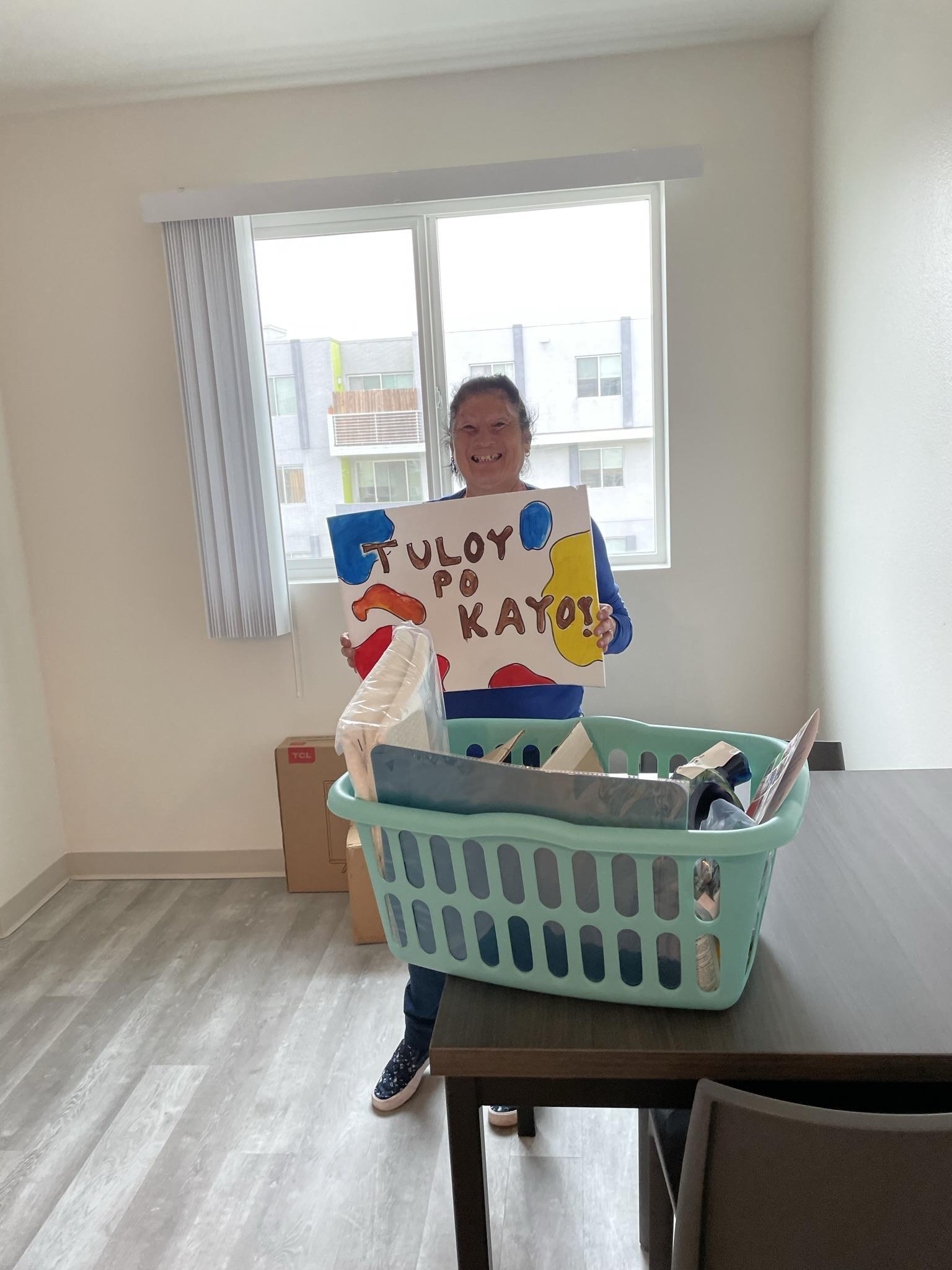
“There’s trust, belonging and pride. I leave my wallet or phone around, and I know it’s safe.”
Quotesfromstaffandresidents
Queen City Cooperative, Denver
A limited-equity cooperative in a single-family home








9 residents in a single building, aged 5-52. In total, the cooperative includes three buildings
Urban Residents are diverse across income, age, race and class
Move in year: 2015
Limited equity cooperative
“We strive to create a system in which people are emotionally safe, financially secure, and living lives of abundance.”
“By living with and connecting with people from different backgrounds, we increase our capacity to understand each other and our collective needs.”
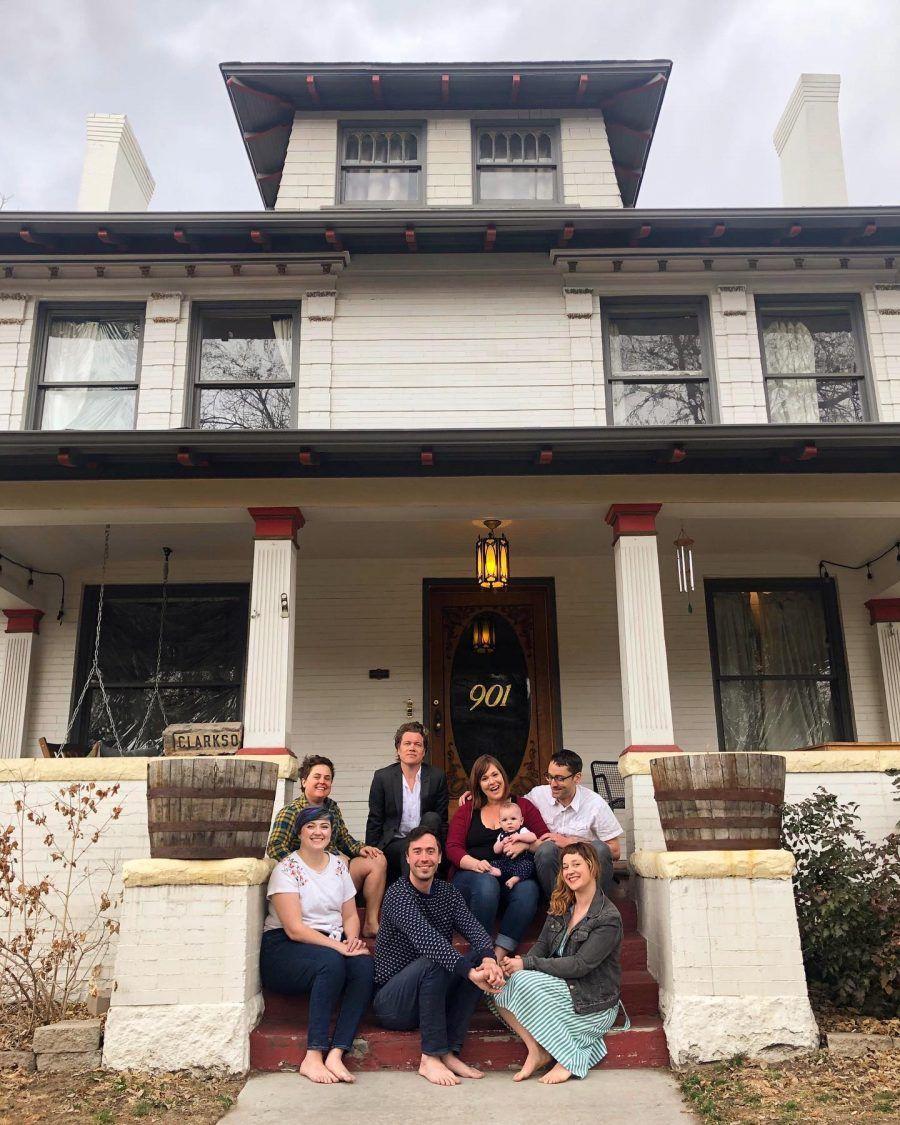

Queen City Cooperative, Denver
Queen City Cooperative includes two houses across three properties, with one of the houses accommodating nine people, including children, in seven bedrooms. Members gain equity by purchasing a share for the exclusive right to a room – starting at $10,000. When they leave, they receive their share back plus 3% appreciation. Payment plans are available, and by-laws ensure the home cannot be sold for profit.
Despite being a single-family home, the space is designed for communal living, with a large shared kitchen space and multiple separate living areas. Residents participate in budgeting, governance, and maintenance, and monthly housing costs of $750 cover food and utilities.
The founders changed state law to allow unrelated adults to cohabit, initially fronting personal equity to make the model viable. Careful recruitment includes a six-month probation and consensus voting. Culture-building is a priority, with weekly meetings, shared meals, specificity about what chores involve and an app to assign them, conflict resolution training, and approval is required if guests stay more than 48 hours. For residents, the co-op fosters deep connections – “it feels like family.”
“Property ownership provides wealth creation and stability –we wanted to find a way that this could be shared.”
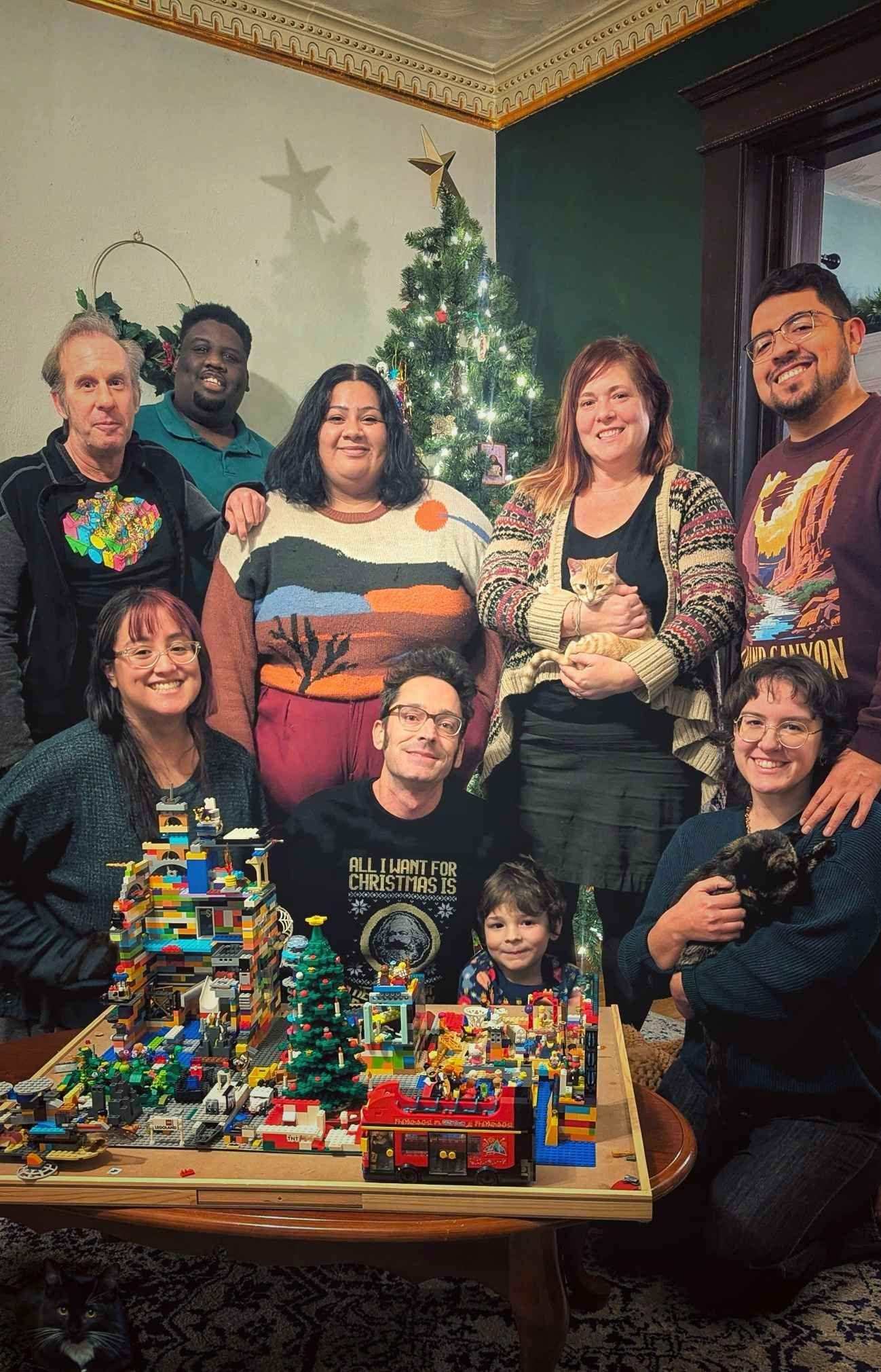

Quotesfromcurrentresidents
Narara Ecovillage, New South Wales
Large scale residential and demonstration ecovillage located on the Central Coast of NSW

Currently around 130 residents, including 30 children, though it will grow to around 300. Currently around 55 units, in the future there will be around 140.




Wide demographic of people who want to live a more ecologically sustainable and socially interdependent life.
Rural on three sides and urban on the 4th
Land purchased: 2012
Lots are sold on the open market and people build their own houses but the land is on community title. Some people share lots to reduce cost, and some rent. It was financed through installment payments on the land and member loans; no financial institution was involved.
“I think, most people, whether they admit it or not, are here for community. The social side is number one.”
“I thought, I don’t want to be dependent on my kids… maybe we can build a village where we look after each other.”




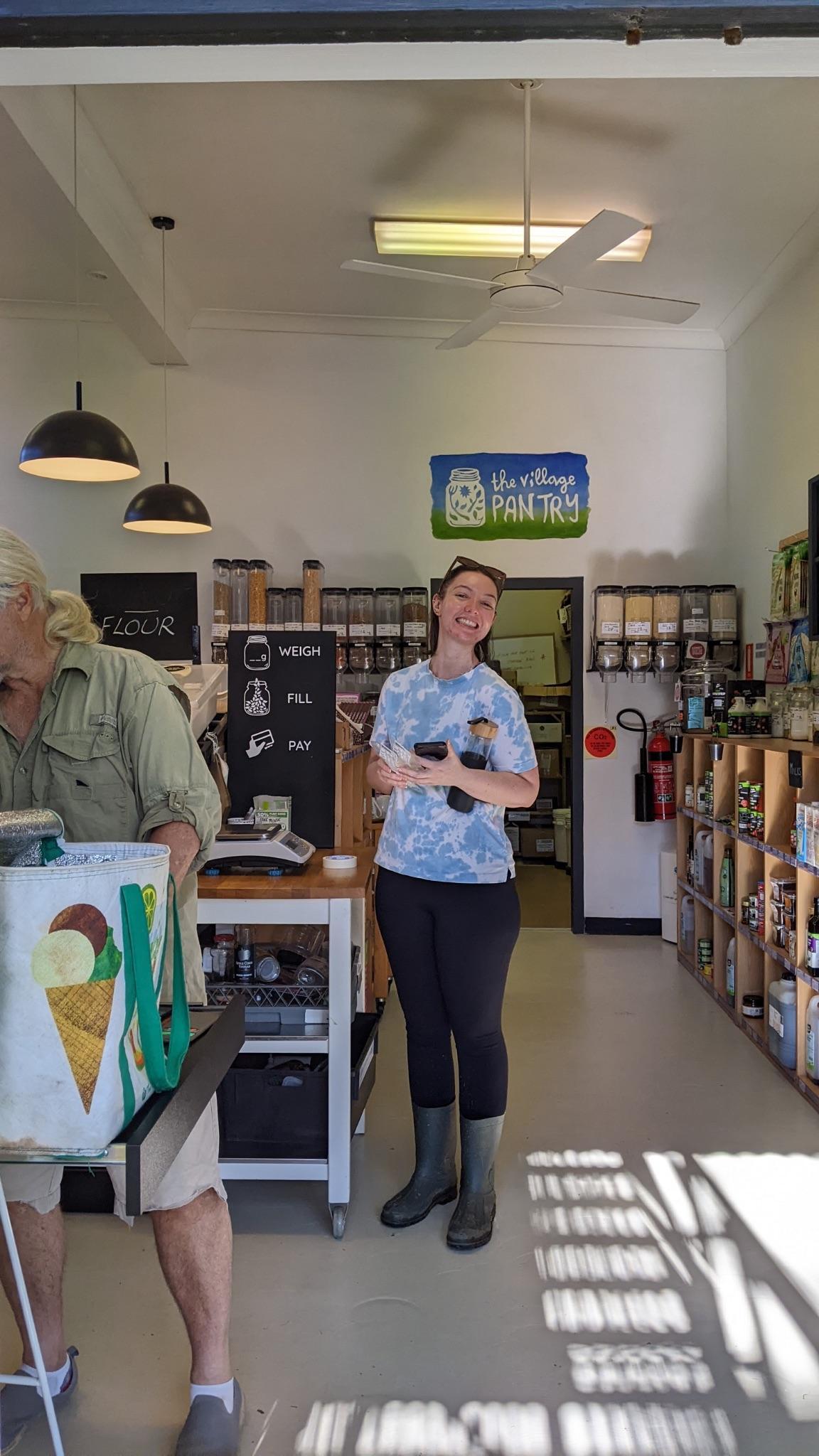

Narara Ecovillage, New South Wales
At Narara Ecovillage residents collectively own the land and share responsibility for its care. With house lots around $400K, residents self-fund and design their own homes, sometimes sharing a lot, creating a “diverse, people-powered neighbourhood”. Children roam, supported by a culture of informal shared care; “generally if we need something, we just ask”. The village is rich in shared spaces – such as a community garden, playground, library, offices, workshops, pottery space and shared kitchens – and appliances such as lawnmowers. Initiatives feed into a circular economy, such as the coffee cart and volunteer-run bulk pantry. A handful of paid roles support the essentials, and residents have a recommended contribution time, but most contributions are voluntary and varied; one resident said that “counting hours is antithetical to building a culture of trust and gratitude.”
Designed to nurture connection, homes have no fences, pathways link every lot, and postboxes cluster together. “There is so much going on socially”, such as board game nights, book groups, working bees, yoga, Dancing in the Dark, community choirs and communal dinners. The “size allows for different layers of interaction.” Conflicts do emerge – for example around pets, ecological standards, and visions for resilience – but their Sociocracy governance model heads off much of it early on. They are working on a Conflict Management Pathway as a suggested offering to residents to help re-establish harmony when needed.


Individual stories
From a broad range of inspiring visits, the following stories give an insight into some individual experiences of intergenerational communal living
Troy, Watani and Rubin
Troy (58), Watani (77) and Rubin (74), residents of Canticle Farm
Troy, Rubin, and Watani, all formerly incarcerated, found a new beginning at Canticle Farm. Each house in the community has its own mission and theirs is reserved for Black men who have been incarcerated. The three men share their home with one of their daughters.
Their path to Canticle Farm began after brief stays in transition houses. Troy, who spent six months in solitary confinement and paroled at San Quentin – in a "space not as wide as you are tall" – was not looking for community after 25 years of incarceration; "in prison you wake up to thousands of voices." Similarly, Watani “craved solitude not community” but met with the founder who personally invited him to join. Now all three men are deeply involved, attending morning circles, community dinners, and doing proactive collective work to challenge racism. "Community looks out for each other – that feels good."
Rubin, who also spent significant time in solitary confinement, describes Canticle Farm as a "lifeline," asserting, "if someone hasn’t experienced living like this, they’ve missed out." For him, it’s "one of the most positive things in my life in a long time." The community is a base for activists working on a range of missions, bringing together people who intentionally create a culture of belonging and support.

Larry's life took a significant turn when he moved to Goolawah Community
"If I fell over but he now speaks about the positive experience of living with people of all having the support of

Paola
Paola (53), daughter (24) and son (14), residents of LA Ecovillage
After years of battling housing insecurity – including navigating restrictive rules of RV parks in Southern California – and isolation, Paola and her children found a long term home at LAEV. LAEV offerers stable affordable housing with shared amenities; “You have all that extra space you feel you can really go and use.” Originally from Colombia, Paola reflected, “I don’t have family in this country apart from my kids, so living in community makes me feel protected.” Early on, when Paola fell ill, LAEV neighbours brought her soup and medicine, and when she moved in, neighbours helped and one even gifted them a TV – kindness “it’s not easy to find in regular neighborhoods”. Paola appreciates LAEV’s relaxed, flexible culture where people support one another without obligation. “Kindness invites more kindness,” she says. Her teenage son spends time with a friend in the community and her daughter values the intergenerational relationships; “generational differences here feel less severe than in families — there’s enough proximity to relate, but enough distance to avoid pressure… Older people here aren’t respected just because they’re old, but because they’re amazing people with skills, ideas, and attention to detail I don’t have time for.” While noise and slow decision-making can present challenges, Paola loves the sense of calm, care and stability. “This is where I belong. Here, your neighbours are connected to your life in ways the outside world forgets. When you come here you’re part of the community. I feel relieved: I have landed.”


Kathryn and Bryan
Age 70 and 48, residents of Camphill California
Bryan and Kathryn are friends and housemates living in a life-sharing community where people with and without intellectual and developmental disabilities live, grow, and work together. While many live in larger, shared houses, Bryan and Kathryn chose to homeshare as a pair, which Kathryn describes as “ideal”. After some time living with other members of Camphill – ‘co-workers’, volunteers and ‘friends’ –both were drawn to a smaller, quieter space. “Bryan and I have known one another for many years, and we had been going on weekly lunch outings together when I told him I was moving and needed to find a roommate, to which he immediately responded ‘Me!’”
With family spread across the country, Bryan connects with the community through his expert work as a weaver and cooking meals for nearby households. A co-worker at Camphill, Kathryn supports community members to create homely, welcoming spaces. “We both lead active independent lives, but we support each other and others around us. We take turns in cooking, while also hosting friends for supper on a regular basis. I’m not a mother figure – we’re housemates of different generations,” says Kathryn. Their friendship reflects the mutual respect and interdependence at the heart of Camphill life.
Mikoto
Mikoto, resident of Murundaka
When Mikoto emigrated to Australia from Japan and later separated from her partner, she felt isolated and financially stretched while balancing work, motherhood and other parts of her life. Everything changed when she moved into Murundaka, a rental cooperative in Melbourne.
Living among 18 households she didn’t know was daunting at first, but Mikoto quickly found affordable, stable housing — “as long as you follow the basic requirements you can stay here forever” — and a strong network of friends. Her son, who was 11 when they moved in, grew up surrounded by other children“friends his age and a big brother figure” - alongside adults who offered childcare, advice, and support. Mikoto reflected that because of community “his life is richer”.
Murundaka’s flexibility allows people to move between rental units as their needs change. Mikoto says being surrounded by people with different skills enriched her son’s childhood and living in community gave her time to balance motherhood and work. “The kids play together, go to each other’s houses — you know it’s safe. Tasks like the school run and childcare are shared, so there’s more time to work. It’s ‘I do something for you you do something for me’”.
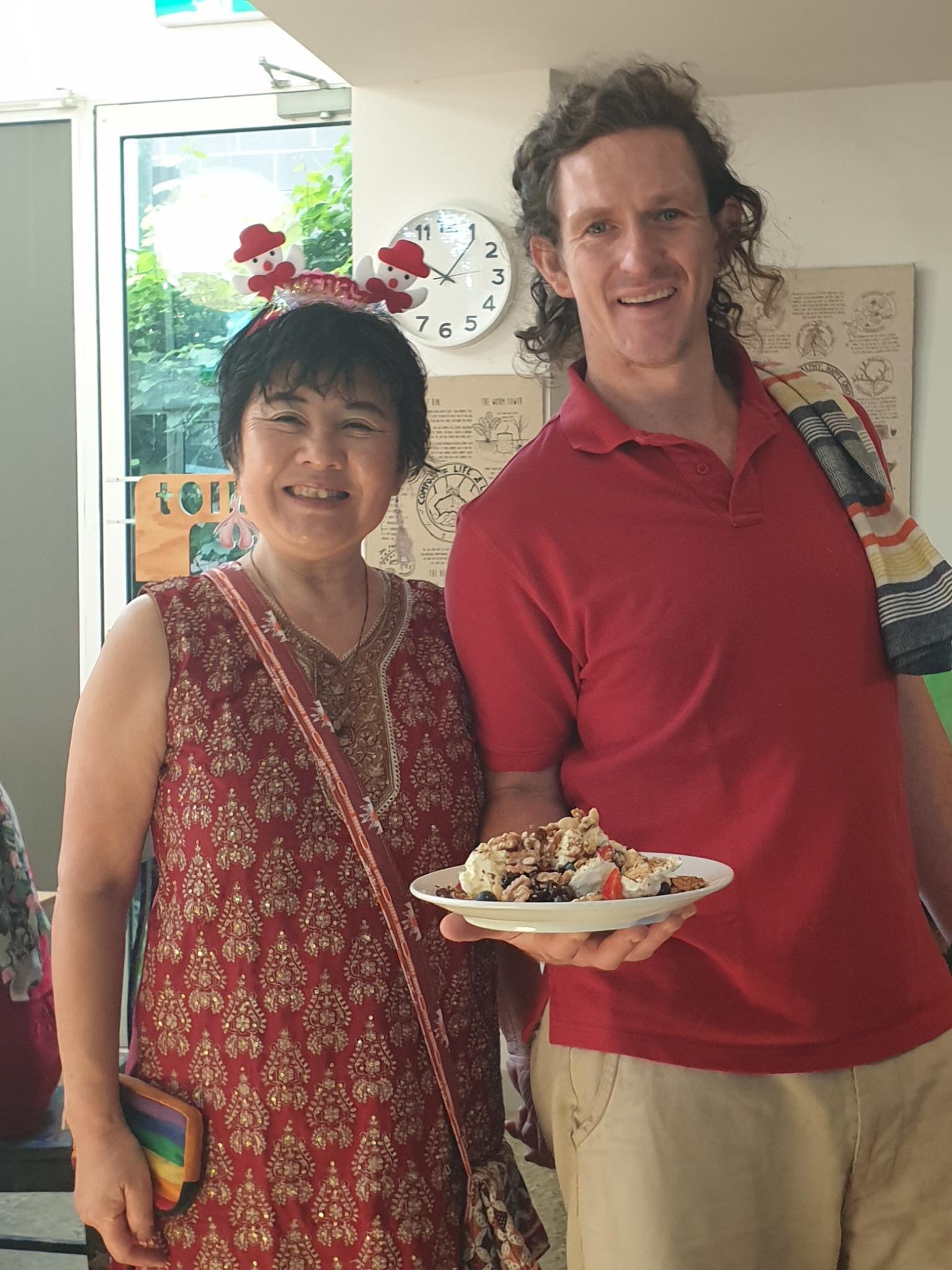
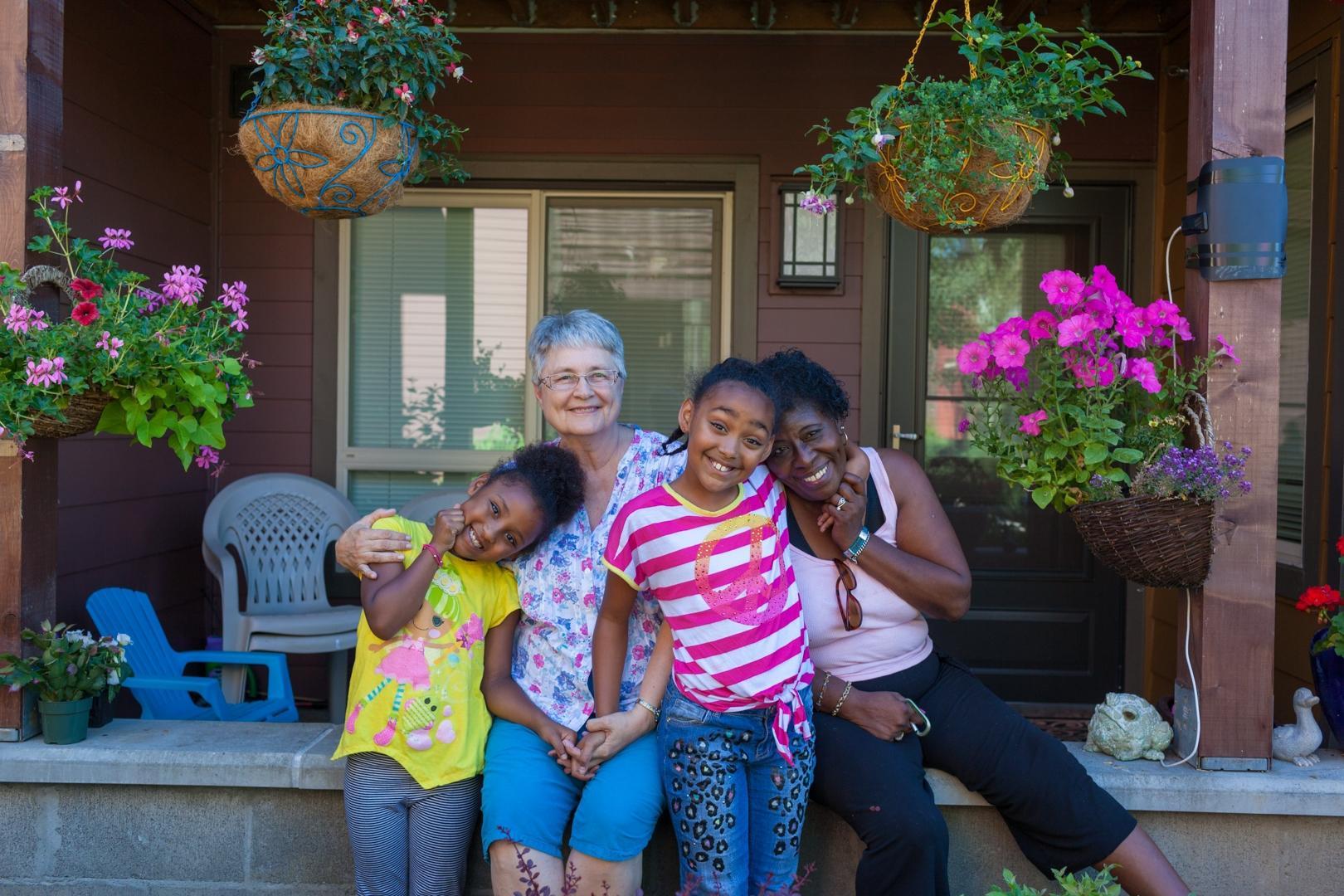
Bridge Meadows
Vivyan came from a farm in Kentucky to Oregon to help her daughter with her children. She lived in her daughter's rental house down the street from her. “As my grandchildren grew up and I wasn't needed as much, I wanted a place of my own. I searched all over town but couldn’t find the right
Eventually, Vivyan found Bridge Meadows. “I loved the concept of caring for families and their children. It was just what I wanted. Bridge Meadows fulfilled a purpose in my life – being with children and supporting families, plus having my own apartment.”
“Living here with elders and families has been so different from what I was I learned to appreciate the differences in personalities and characters of everyone living here. It was kind of scary, but a learning experience. Even working with the families and children was an eye opener because I never had to personally hear of the trauma they’d been through. I was glad the mothers and children learned to trust me.”
I truly feel like a grandmother to some of them. I’m so grateful I found Bridge Meadows and proud to live here.”
Jasper and Christie*
Jasper (52) and Christie (13), residents of Mariposa Grove cohousing
Jasper has lived at Mariposa Grove for 12 years with his daughter, Christie. “I grew up in a big family – I like having people around. After moving away, living alone felt lonely. In community, I can have casual, non-scheduled chats. Just being here builds social fabric.”
For Jasper, raising a child in community has been invaluable. “It’s great as a single dad to know there’s always someone around. I get home late and there are people here who are like her aunts and uncles – a type of passive security.” Christie’s grown up eating fruit from the communal garden, benefiting from large shared outdoor space (“allowing us to be happy in a small apartment”), and playing with the same friend since she was one. “Kids grow up together and learn how to deal with adults,” says Jasper. “Everyone has their own relationships with the kids.”
One simple ritual means a lot: since Covid, Jasper and a neighbour have lunch outside when he works from home. “We text 15 minutes before, chat about whatever’s on our minds, and have to set a timer because we never stop talking.”
“It’s easy to just be, to say hello – that’s what makes this place work.”

*Pseudonyms
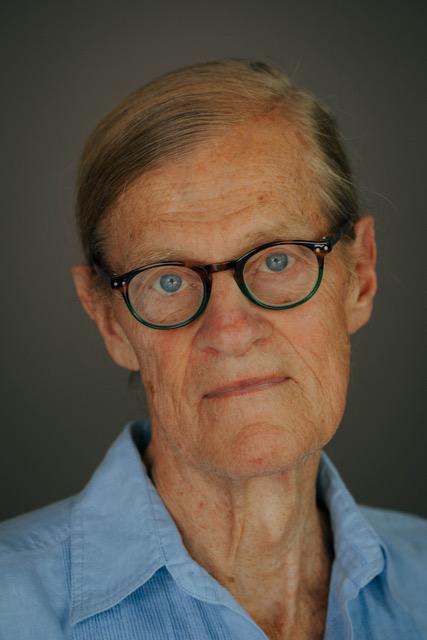
David
Age 76, resident of Camphill California
David’s life has been shaped by a deep commitment to community, beginning as a conscientious objector during the Vietnam War, when he completed two years of alternative service. A gay man who raised a family with his wife, he’s found chosen family and enduring friendships within Camphill California – a life-sharing community for adults with and without intellectual and developmental disabilities.
David has shared homes with both children and adults as a ‘householder’ though his health now means he lives in a separate unit while remaining actively involved. He says, “we learn to notice each other. Take an interest in each other.” David has spent years teaching at the Camphill Academy, where students from around the world study topics like social therapy and social agriculture. “As you teach, mentor, live with people, your bosom just grows.”
David stays close to the volunteers, describing them as “sons and daughters”.
For David, it isn’t about living with people with special needs, but about living in community. “To live in community gives me purpose… Although, it can be painful and difficult at times, it is often filled with love, light and kindness as I experience, truly, that we are all in this together. I couldn’t possibly do it alone. I couldn’t bear not being in Camphill.”
Morgan, Joel and Sonny*
Morgan (43), Joel (44) and Sonny (6), residents of The Paddock ecovillage
When Morgan and Joel were expecting Sonny, they searched for a family home that reflected their environmental and social values; more than just a house – “a sense of care for each other and the land”. Morgan, who emigrated to Australia from the US, says “it’s like having extended family nearby” and is grateful for the “support we receive from our neighbours, including child care and sharing cars” – a world apart from their previous experience as “transient renters with superficial or nonexistent relationships with neighbours”.
Although it isn’t structured as an affordable housing development, the family benefits from “greater amenity through shared facilities, such as the common house with guest accommodation”. During the pandemic, they “were genuinely reliant on neighbours”, both practically if someone was unwell, and the “implicit mental health value of having people nearby”. Sonny has built strong bonds – “we sometimes say he has multiple adopted grandparents” – and has developed independence through helping in the garden and delivering mail. “I have to go get him because he ends up hanging out with neighbours… I often end up staying awhile myself.”

*Pseudonyms
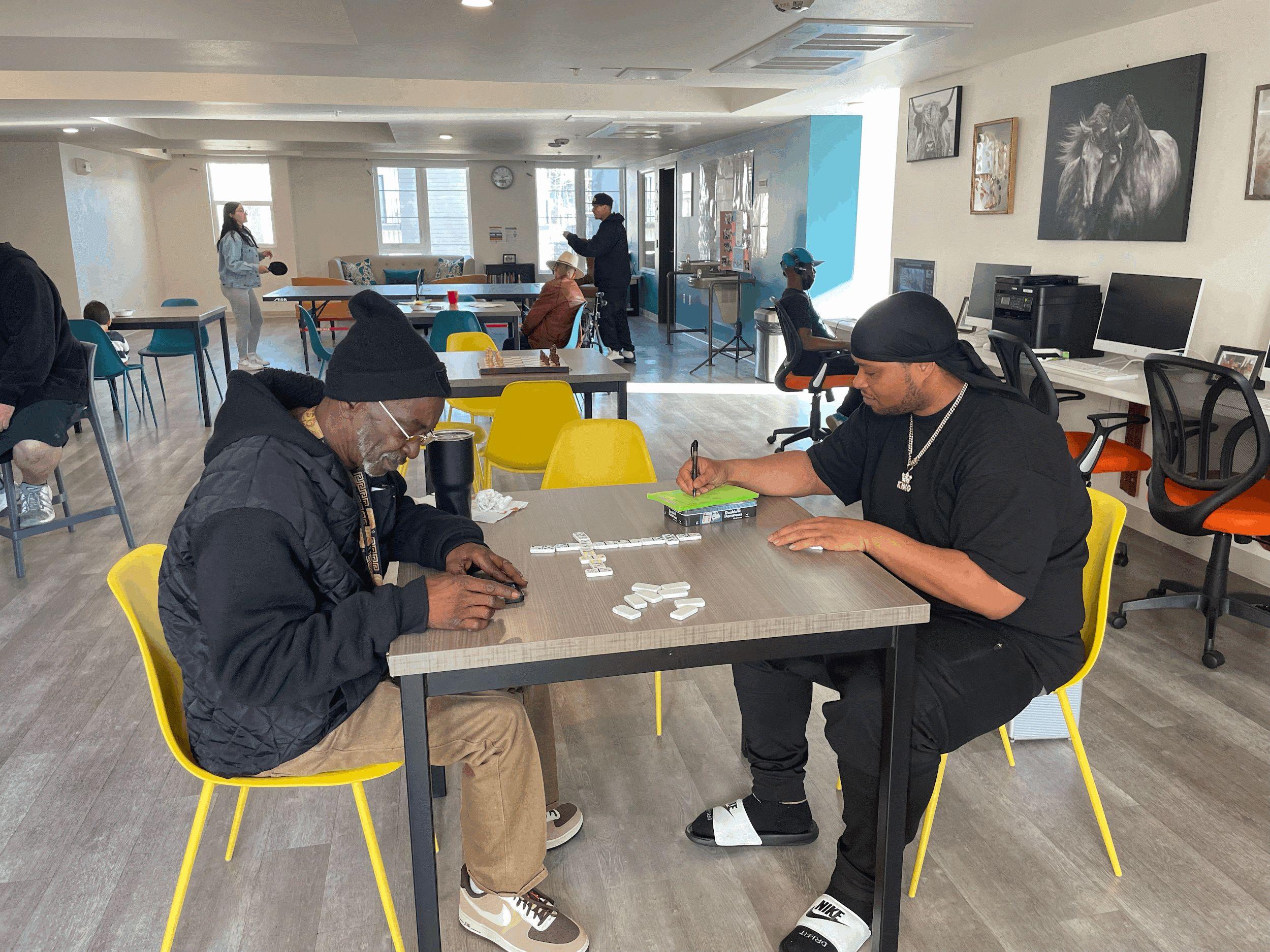
Age 37, resident of HiFi Collective
King grew up in Compton and spent two years living in a shelter before moving into HiFi Collective — a permanent supportive housing community in LA with an intentional focus on building community. “It’s a blessing — My neighbours are good people,” he says.
At HiFi Collective, King has one thing he was missing before: connection. “Everybody respects each other. People are polite.” The 64 residents are a range of ages, and often cross-generational friendships, or mutual support roles emerge organically. King said, “You’ve got to be kind to the older people and understand they deal with things differently.”
HiFi Collective staff run frequent events and the space has been designed to nurture connection. King loves the community courtyard and events, especially cooking and craft sessions. “It reminds you of being at school.”
Unlike his last place, which was full of animosity, here there’s always someone to talk to. “I’m never lonely.” King values the way people look out for one another. “Community connections — everybody getting on. That’s what makes it feel like home.”
Age 44, resident of a large rural community in Australia
Jess is long-term resident of a rural community of 110 residents. Her parents were co-founders and having grown up there, she shares deep bonds with childhood friends, whose parents are "like aunties". After living away, Jess returned, finding it like “being embraced by family."
Raising three children (aged 7-19), Jess says that although people can clash over different parenting styles, her children benefit hugely from community. She recalls her own "free, great, connected" childhood, with friends entertaining one another amidst nature. Her teens actively participate in community life, such as working bees, developing a sense of ownership, or “playing volleyball with the older folk. I love that, the mix of generations”. Jess' own early participation, for instance in meetings, and cooking in the communal kitchen, built up her responsibility and confidence. Jess values casual interactions with young people; “my heart swells when they tell me something they’ve seen or done… What is it all about if we’re not thinking about future generations?”
Her family is close to an older neighbour who lives alone; he is "like an uncle. We genuinely care about him, it’s not a chore. Taking care of each other is our culture, it works for everyone”.


Daryl
Age 76, resident of Goodness Village
Previously a successful mortgage lender, Daryl turned self-employed until a series of health crises changed everything. Denied insurance in 2003 because of his diabetes, he was later diagnosed with stage 3 prostate cancer, spending $380,000 of his savings on treatment. Six years from paying off his mortgage, and tackling a range of severe health diagnoses meaning he had to relearn how to “walk, talk, write and swallow”, he lost his home and spent over a decade unhoused.
Living in “a junk vehicle” with “no idea where to sleep or pick up meals,” Daryl met a police officer who told him about Goodness Village. Moving in was life-changing. “I have a bed, a TV, a full bathroom, a stovetop, desk and heating, air conditioning, and all the food I could need.” What matters most to Daryl is dignity and belonging: “Having a residence which is mine, a safe place with dignity, and without the worry of being harassed by others. To know your neighbours and interact with them on a social level.”
After days in hospital during a recent health scare, it was the response back at the village that stayed with him: “I was surprised by the genuine concern for my wellbeing by the residents.” At Goodness Village, Daryl has found more than a home – he found people who notice, care, and look out for one another.
Deborah
Deborah (50), resident of Temescal Commons Cohousing
Deborah has lived at Temescal Commons Cohousing in Oakland for 24 years. Before joining, she rented a room in a house where she felt “rather trapped and isolated in my small bedroom” and unwelcome in shared spaces.
When a roommate invited her to consider cohousing, Deborah was cautious; “I’d heard stories of communities that felt intense or intrusive,” she says. “But to my surprise, this place welcomed people at all levels of involvement. It’s a safe, supportive environment where I live alongside kind, caring friends who are genuinely invested in my wellbeing.”
She especially values how the community approaches tough decisions: “There’s patience, grace, and a sense that each opinion matters. A decision is carefully found through consensus while leaving no one out.” A small but meaningful routine for Deborah is walking her dog with a neighbour whose politics differ from hers. “We respectfully explore our differences, and it’s helped us both depolarise conversations and foster understanding.”
“I found a gracious space that welcomes people at all levels of involvement – whether you're introverted, extroverted, deeply engaged, or prefer more privacy. It’s a place where you can truly come as you are. I feel known and loved.”

Call to Action 10 opportunity
areas for the UK

Of particular interest to practitioners

Of particular interest to policymakers
Contributors who inspired the following 10 areas of opportunity for the UK
The following opportunity areas for the UK are inspired by a virtual roundtable I hosted in April 2025. It brought together practitioners, researchers, service designers, campaigners and policy professionals across housing, communal living, health, loneliness, intergenerational practice and ageing. The session reflected on some of the insights in this companion, surfaced barriers facing intergenerational communal living projects – from regulatory hurdles to cultural mindsets – and identified where there’s energy, innovation and untapped potential to address them. Thank you to all those who joined and contributed, giving your own time to support this work.
● Emily Abbott, Intergenerational England
● Maria Brenton, Older Women’s Cohousing project
● Stephen Burke, United for All Ages
● Amy Davies, Great Places Housing Group
● Bobby Duffy, King’s College London
● Lorraine George, Generations Working Together
● Gail Halvorsen, Scottish Ecological Design Association
● Helen Jarvis, Newcastle University
● Owen Jarvis, UK Cohousing Network
● Kate Jopling, Independent Policy and Strategy Consultant
● Karen Livesey, Community Led Housing London
● Robin Livingstone, Fraser / Livingstone Architects Limited
● Helen Mees, Cohousing Australia
● Dr William Metcalf, University of Queensland
● Charlotte Miller, Intergenerational England
● Jeremy Porteus, Housing LIN
● Gita Prasad, LibraTiga Ltd
● Rebecca Rieley, Housing Associations’ Charitable Trust
● Alex Smith, founder of The Cares Family
● Ilonka Walker, Generations United
● Emma Whettingsteel, ThirdStory
● Levent Kerimol, Community Led Housing London Alphabetical order by surname
● Alison Whitten, Regen Melbourne
● Frances Wright, TOWN Cohousing
Integrating intergenerational design and relational principles into housing
Investing in community-led pilot projects
Tackling systemic and regulatory barriers
Repurposing existing and empty spaces
Investing in impact capture
Prioritising economic inclusion and long-term affordability
Growing the capacity of intermediaries and champions
Cultivating cross-sector collaboration
Reviving loneliness on the political agenda
Shifting cultural narratives
Opportunities for the UK: supporting, catalysing and sustaining more intergenerational communal housing models
As well as the roundtable, the following opportunity areas draw on insights from my visits to 54 intergenerational communal homes in the US and Australia.
These ideas are offered to inspire funders, policymakers, housing providers and grassroots organisers to test new approaches, remove systemic blockers, and grow what works when it comes to creating socially connected, mixed-age housing models.
#1: Integrating intergenerational design and relational principles into housing
The government's drive for new homes presents a key opportunity to
embed intergenerational and communal living principles – shared spaces, socially-minded design, ageing-in-place – across all new builds and retrofits, not just specialist schemes. Simple design elements like communal gardens, shared kitchens and pedestrian spaces can be powerful in boosting social connection.
Policy changes could incentivise interaction-focused urban planning and architecture, ensuring that the ambitions of such policies are fully realised in practice by prioritising people-centric design over car dominance and integrating intergenerational design into planning guidance alongside financial incentives for socially sustainable features. A
major opportunity lies in demonstrating the social value of these schemes through social and economic benefits, such as wellbeing and community resilience.
Planning and building regulations should require flexibility in new homes, ensuring they can adapt over time to changing needs – for example easily convertible spaces for ‘granny annexes’, attic conversions, tiny homes on the land, or non-domestic buildings repurposed into housing.
Established models such as almshouses, sheltered housing, and estates with strong organic common life (as well as intentionally designed communal homes) offer valuable national lessons.
#2: Investing in community-led pilot projects
Pilot affordable, intergenerational housing projects that test new approaches to ownership, governance and tenancy models. These could inform future planning, funding and housing frameworks.
Securing affordable, long-term investment is crucial. Exploring the mobilisation of public land, social investment, philanthropic funding, and community shares could support these housing options, particularly those prioritising long-term collective ownership and control.
Existing funding streams – such as Levelling Up, health inequalities or social infrastructure budgets – offer
starting points, alongside potential new partnerships between housing associations and developers. Funding models should prevent inflated house prices over time and prioritise groups and individuals who stand to benefit most.
#3: Tackling systemic and regulatory barriers
Many existing legal, financial and planning systems were designed around nuclear families or age-segregated housing, leaving intergenerational communal living without a clear home in policy and regulation. Too often, frameworks omit intergenerational and communal models, such as cohousing, entirely.
Planning reform could involve
developing more flexible legal categories and tenancy structures to legitimise intergenerational and communal homes alongside new, supportive planning guidance. This could include exploring new use classes or design codes that promote extra-familial communal living environments.
It would also be helpful to identify and share examples where councils and housing providers have successfully adapted policies to support communal homes – creating opportunities for learning and innovation.
#4: Repurposing existing and empty spaces
Leveraging the UK's existing housing stock is an important route to creating more intergenerational communal homes. This involves repurposing existing infrastructure –such as empty homes, disused public buildings and underused communal areas within residential homes – for communal housing or intergenerational schemes within age-segregated residencies. National policy should address retrofit disincentives – including the 20% VAT on existing building work compared to 0% on new builds –which currently hinders the adaptive reuse of empty properties.
Introducing infrastructure like communal gardens and social spaces into existing developments can catalyse connection across age groups. National policy could encourage councils to prioritise these opportunities within Local Plans, for instance through financial incentives and by exploring mixed-use developments that integrate housing with community facilities.
#5: Investing in impact capture
To unlock funding and policy support, tracking tangible benefits is vital. The immediate opportunity lies in leveraging and building upon this new social value framework for intergenerational approaches in housing. This involves: identifying
areas for potential expansion of the framework; facilitating practical learning communities; and, supporting intergenerational communal housing models to use the framework to capture data. Many intergenerational and communal housing models currently lack the capacity for robust impact measurement so may need financial support.
This could align with existing tools like the Social Value Engine used by Community Led Local Development groups, and social value calculators being adopted by several local authorities in England and Scotland. Embedding social value assessment at planning and retrofit stages would strengthen the case for intergenerational schemes.
#6: Prioritising economic inclusion and long-term affordability
To avoid exclusivity and reinforcing inequalities, it’s important to ensure financing structures can accommodate people on low incomes to move into these spaces. This might involve policies incentivising existing schemes to reserve places for social tenants; partnerships with housing associations; or, supporting models like community land trusts, mixed-tenure and mutual home ownership that protect affordability in perpetuity. Combining affordable rented units with market-rate properties can help to cross-subsidise costs. Public land transfers and affordable land access could also be
leveraged to help these communities take root. Policy changes could also explore incentivising or stipulating a percentage of affordable housing contributions in new developments specifically for co-housing initiatives, or requiring that these opportunities are advertised to community-led housing groups at the outset. There is also potential to advocate for new Building Standards categories for affordable, community-focused housing – with requirements for dedicated communal spaces alongside smaller private units, fast-tracked through planning as developments of public good.
#7: Growing the capacity of intermediaries and champions
A significant opportunity lies in backing the individuals and organisations actively building and sustaining intergenerational communal housing. This includes not only intermediaries offering guidance and resources, but also socially-led developers, social enterprises and community organisations taking a hands-on role in creating, financing, managing and stewarding these homes.
Investing in community-led practitioners can help overcome practical barriers, prototype new models and grow the wider movement. Alongside this, there’s value in developing national and local
Strengthening leadership within policy, housing development, and grassroots activism will help create an ecosystem capable of addressing both the technical complexities and relational dynamics that are essential for these communities to thrive over the long term.
#8: Cultivating cross-sector collaboration
Joined-up leadership across housing, health and planning teams could help embed this work. champions who can advocate, mobilise networks, and build skills across sectors.
Intergenerational housing presents a powerful opportunity at the intersection of housing; loneliness; preventative health and care; ageing and longevity; environmental sustainability and land use; and
wellbeing. However, progress is often hampered by these sectors functioning in isolation.
Exploring collaborative schemes between housing and health providers offers significant potential. For example, how could joint funding enable new projects, or how might intergenerational housing be integrated into preventative health strategies and social prescribing? Building stronger connections between research, frontline practice, and grassroots organising in this space can also nurture trust and unlock new ideas.
#9: Reviving loneliness on the political agenda
Since the UK’s loneliness strategy launched in 2018, momentum has slowed and some key advocacy and practice organisations have closed. Meanwhile, generational divisions have deepened across multiple domains, creating an urgent need for renewed political commitment.
Recent initiatives like the All-Party Parliamentary Group on Loneliness and Connected Communities are already shaping evidence-led conversations on housing, social infrastructure and intergenerational connection. This momentum could be built upon through options such as a dedicated Social Connection Unit in Downing
Street or a cross-government initiative integrating social connection goals into housing, health, social care and urban planning.
Intergenerational housing models also offer a practical framework to support youth-facing policies like the National Youth Guarantee, creating meaningful cross-generational volunteering and civic engagement opportunities. The Intergenerational England Coalition has proposed specific measures including an intergenerational bill, a dedicated commissioner, and fellowship programmes to scale successful practices. Local authorities, many of whom hold key levers on housing, land and social infrastructure, could play a vital role in embedding these
approaches within local plans and community strategies.
Quantifying and publicising the economic costs of loneliness and generational divides would further strengthen the case for sustained, coordinated political action.
#10: Shifting cultural narratives
For a long time, ownership of a ‘nuclear family’ home has been a dominant ideal. At the same time, media narratives often present generations as at war.
There’s real value in promoting a mindset shift around both single family home ownership, and the value of intergenerational connection beyond traditional family structures. There is important work to counter isolationist
narratives which perpetuate fear of our neighbours, instead of enhancing connection and destigmatising loneliness.
Strategic campaigns should target both the public and policymakers, reframing housing as vital infrastructure for connection and highlighting the social, economic, and health benefits of intergenerational relationships. It’s also important to recognise that intergenerational housing has the potential to address interconnected issues like ageism, social isolation and housing instability, and to reflect this complexity in public discourse. While intergenerational communal living isn't for everyone, presenting it as a legitimate and valuable option is essential.


A ‘tiny house’ at Canticle Farm, Oakland
Swan’s Market Cohousing, courtesy of Sami Packard
10 Key takeaways
“People look out for each other. Kids run around barefoot with friends and organic relationships blossom.”

Ecovillage resident, New South Wales

Intergenerational communal housing is a promising, practical response to major social challenges.
There’s no perfect blueprint – but immense value in learning from what exists.
Economic systems, regulation and stereotypes constrain what’s possible – but grassroots ingenuity persists.
‘Neighbourisms’ – informal, frequent practices of care –are critical for sustained connection and community resilience.
Structures, tools and rituals play an important role in the navigation of challenges.
Age segregation is a social construct we should urgently question.
Intergenerational communal housing is not just for the privileged.
Governance models matter – but flexibility and ownership matter more.
Communal living doesn’t require everyone to be ‘best friends’ or think the same.
Integration needs to be intentional – it doesn’t happen by accident.
10 Key takeaways
#1: Intergenerational communal housing is a promising, practical response to major social challenges. In the context of loneliness, housing insecurity, stretched public services, political polarisation, generational division and climate change, intergenerational communal housing models offer a range of ways to build meaningful relationships, resilient support networks and more sustainable lifestyles. They can also serve as a catalyst for positive change beyond residents, stewarding the local environment, stimulating community engagement, and offering resources, education and connection.
#2: Age segregation is a social construct we should urgently question. So much of our built environment and social infrastructure is organised around arbitrary age categories, fragmenting people’s lives into isolated peer groups. Intergenerational communal homes disrupt this, showing how much richer life can be when generations share spaces, building care, understanding and experiences across ages. Not thinking intergenerationally is missing out on a whole host of opportunities to improve individual and collective wellbeing and resilience.
#3: Intergenerational communal housing is not just for the privileged. This companion spotlights a broad range of models, not limited to new-build cohousing communities which are only financially viable for high income groups. Many of the models featured centre marginalised groups and subsidised living, showing that affordable communal living is possible, and that more social, age-integrated living can be a tool for social justice.
#4: Communal living doesn’t require everyone to be ‘best friends’ or think the same.
Strong, healthy intergenerational communal homes thrive when a baseline of mutual care and reciprocity exists – people know they can turn to others if needed, even if their relationships vary in closeness, as there is a shared sense of belonging. Communities that are strongest aren’t those where everyone thinks alike, but those that celebrate diversity, which involves creating space for disagreement, different experiences, and mutual growth – particularly across lines of age, race, class and other identities.
#5: Integration needs to be intentional – it doesn’t happen by accident. Designing for social connection, especially across ages, requires deliberate strategies such as thoughtful spatial design, communal rituals and gatherings, shared decision-making processes, and structures for resolving conflict. These communities are about more than coexistence, they are hinged on intentional interaction and exchange, which can enrich the lives of both younger and older residents.
#6: Governance models matter – but flexibility and ownership matter more. There are a broad range of context-dependent funding approaches and governance models that work, whether self-managed communities, or those with paid staff. Across the board, what matters is a culture of transparency, flexibility for different needs and capabilities of residents, and structures that can evolve over time to work best for current residents.
#7: Structures, tools and rituals play an important role in the navigation of challenges.
Successful intergenerational communal homes balance formal systems (like governance processes and conflict resolution tools) with informal, organic moments of connection. Tension and change is inevitable in communal settings. Places that sustain cohesion have proactive practices for addressing it: regular check-ins, open forums, facilitated conversations, clear boundaries and intentional social time to build trust.
#8: ‘Neighbourisms’ – small, informal, frequent practices of care – are critical for sustained connection and community resilience.
Whether it’s a shared meal, a quick garden chat, or a note left for a neighbour, ordinary moments knit the social fabric of a community, building a culture of belonging, trust and resilience, making it easier to navigate challenges when they do arise. While the design of shared kitchens, gardens, or play areas can enable interaction, it’s a subtle culture of social norms that can determine whether people build sustained connections.
#9: Economic systems, regulation and stereotypes constrain what’s possible – but grassroots ingenuity persists. Many communities battle against zoning laws, financial exclusion, and cultural suspicion of communal living. Groups find creative ways to claim space, pool resources, and develop community-orientated housing models, especially when supported by anchor organisations, supportive local leadership or land trusts.
#10: There’s no perfect blueprint –but immense value in learning from what exists.
Each community is a living experiment. While no model is flawless, the collective wisdom emerging from these spaces offers valuable lessons for policymakers, housing providers, designers and activists.
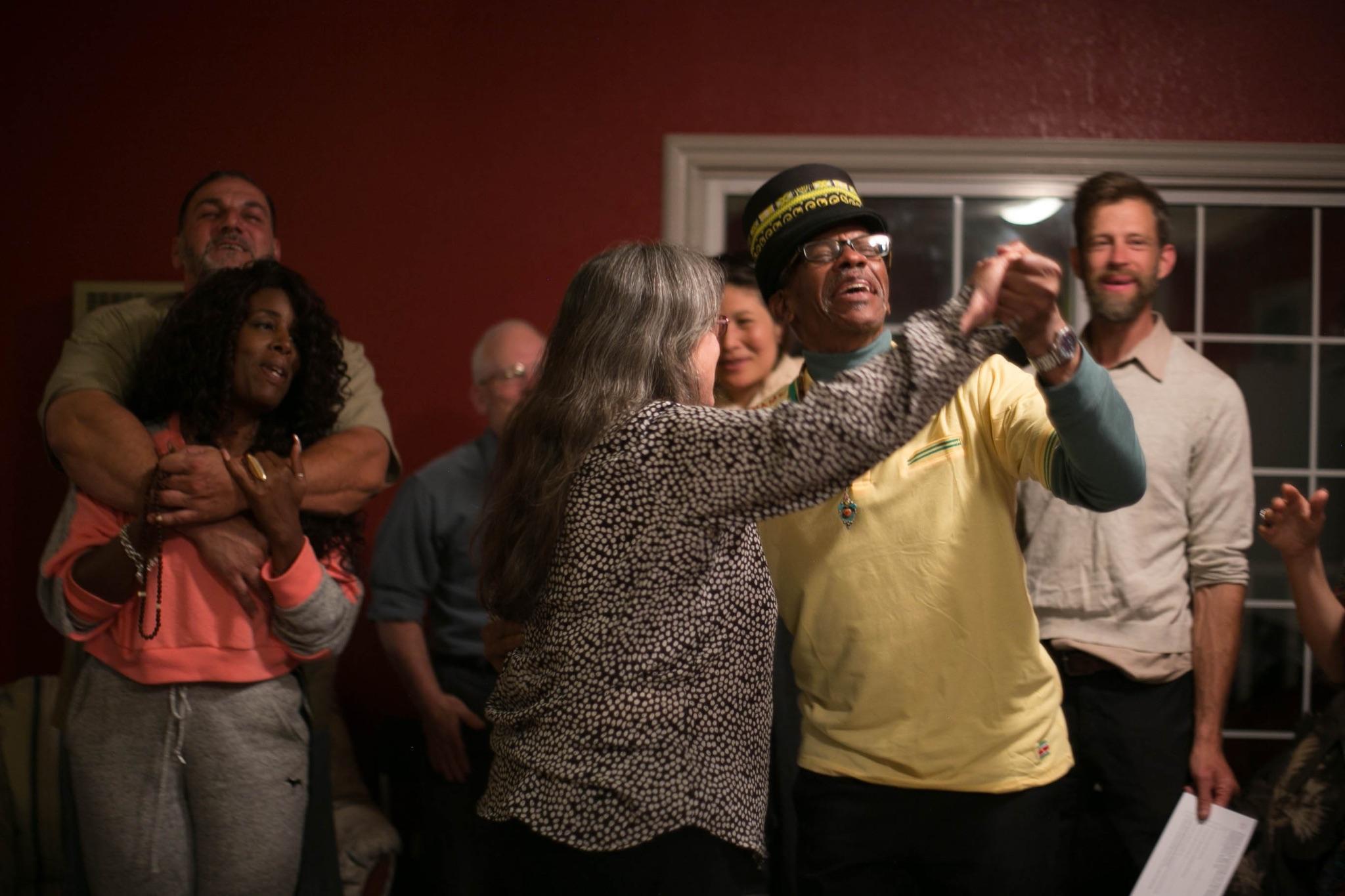
Residents of Canticle Farm, Oakland
More resources
Resources
Continued on the next page
This is not a comprehensive literature review, international directory, or exhaustive guide. It’s a collection of resources and organisations I’ve come across, or found especially useful during this work. There are many other valuable resources, organisations and inspiring case studies beyond those featured in this companion.
Guides, frameworks and toolkits
● Practical Guide to Cohousing
● Cohousing Guide for Housing Associations
● Cohousing Guide for Individuals
● Happy Homes Interactive Toolkit
● Co-housing communities: A guide for social workers
● Architecture for Community – a cohousing pattern language
● The Social Value of Intergenerational Approaches in Housing: Discovery Research and Impact Framework
● Healthier Lives Across Generations: A Blueprint for Intergenerational Living
● Live well together: Activities for health and happiness across generations
● Unlocking the doors – Legal & financial pathways to Resident-Led housing in Australia
● Building social connections: Multi-unit housing design toolkit
● Lonely Nation – How To Tackle Loneliness Through The Built Environment
Evidence and research
● Insights from Marmalade Lane
● The effects of cohousing model on people’s health and wellbeing: a scoping review
● Dutch Policy and Practice in Relation to Ageing and Cohousing
● A Divided Kingdom: Steps Towards Intergenerational Solidarity
● Cohousing: Shared Futures
● Community-led housing for all: Opportunities and challenges for black and minority ethnic community-led housing
● Towards a deeper understanding of the social architecture of co-housing: evidence from the UK, the USA and Australia
● Saving space, sharing time: integrated infrastructures of daily life in cohousing
● Housing 21: a more inclusive model of cohousing?
● A place to grow: Hazelmead Bridport Cohousing CLT
● Sustainability potentials of collaborative housing and the barriers to realisation: a systematic review
● Learning from Intergenerational Housing Projects in the USA
● Designing homes for healthy cognitive ageing
● Alternative models of housing with care and support
Resources
Key organisations and networks
● Global Ecovillage Network
● Diggers & Dreamers
● Cohousing Association of the US
● Cohousing Research Network
● Foundation for Intentional Community
● Generations Working Together
● United for All Ages
● Housing LIN intergenerational housing resources
● Community Land Trust Network
● Co-operative Development Society (CDS) Co-operatives
● Co-operative Housing International
● Radical Routes
● International Longevity Centre – UK
● Cohousing Scotland
● International Communal Studies Association
● Communal Studies Association
● UK Cohousing Network
● European Ecovillage Network
● Cohousing Australia
● Property Collectives
● Common Equity Housing Ltd
● Generations United
Books
● Article: The 48 Best Books About Intentional Community Living
● Generations: Does where you’re born shape who you are?
● Queer Communal Kinship Now!
● Intentional Communities Books
● Alternative Australia: Communities of the Future?
● From Utopian Dreaming to Communal Reality
● Diggers & Dreamers: intentional community in Britain
My relevant recent articles and interviews
● How intergenerational living could help ease housing unaffordability, Australian Broadcasting Corporation (radio interview)
● Beyond the White Picket Fence, Adelaide Chronicles (podcast interview)
● Catalysts, Not Bubbles: How Intentional Communities Enrich Society, Communities Magazine (article)
● Loneliness is a public health crisis and neighbourisms should be part of the cure, Housing LIN Viewpoint (article)
● Designing for intergenerational connection: An East London Cares story (storybook)
● What’s In A Home? Bridging Generational Divides Through Housing, Churchill Fellowship (article)
● Care, conflict & collaboration: insights into community living from the US and Australia (article)
● Speaking the Same Language: Embracing Conflict in Communal Living, Cohousing Association of the US (article)
● Churchill Fellowship Journey: Community-Orientated Housing, UK Cohousing Network (article)
● Collective Challenge, Collective Strength: Community As a Healer in Times of Division, Housing LIN (article)
● Food as Social Fuel: Food is a vital social connector in intergenerational housing communities, Foundation for Intentional Community (article)
